

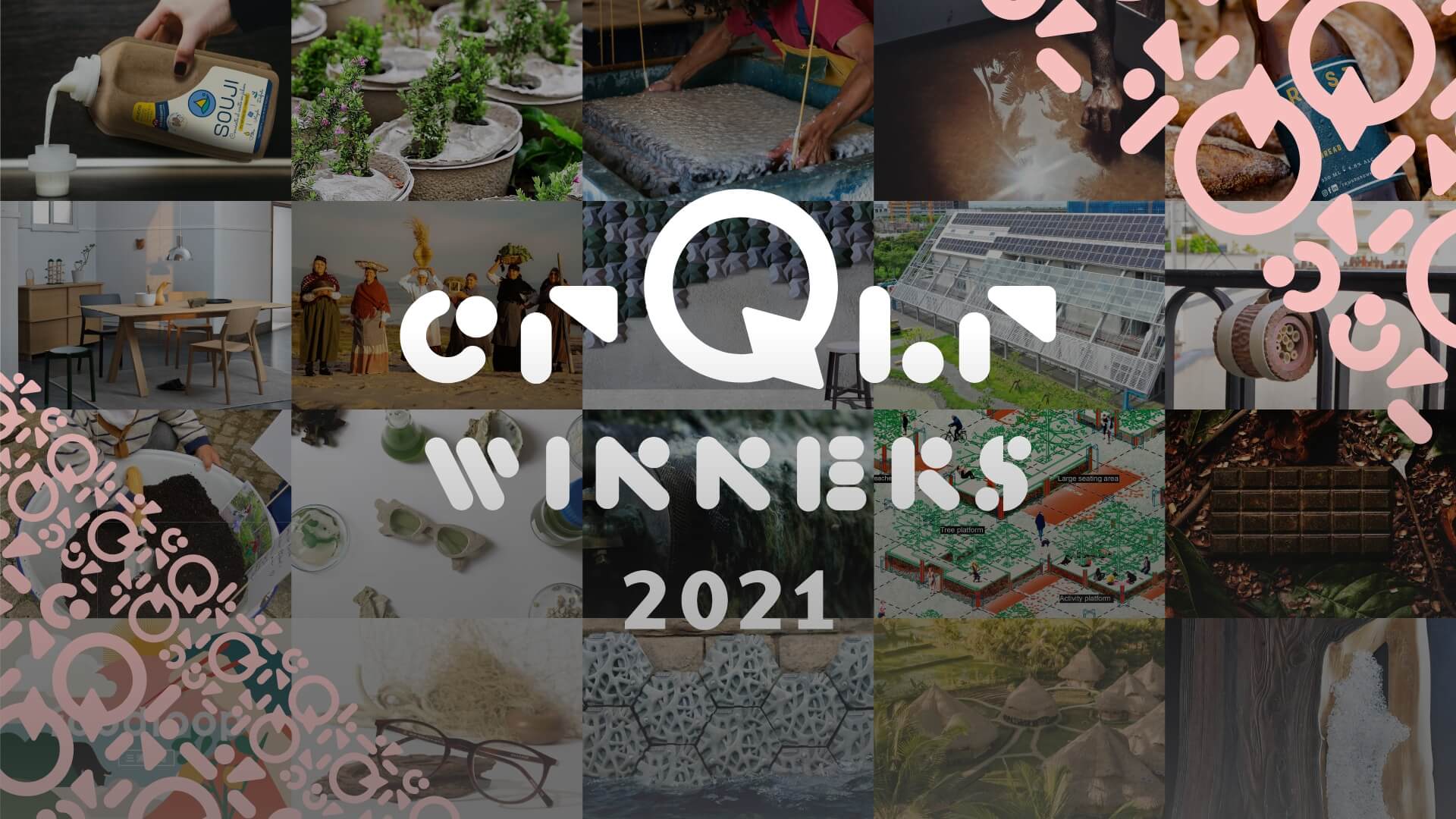
We are thrilled to announce the first ever winners of the crQlr Awards for projects that are helping to design the circular economy.
The crQlr Awards welcome a wide range of entries, from large-scale projects to ideas still in the planning stages. The awards are designed to be “circular, not linear”. Not a reward for achievement, but a place where ideas are developed and catalyzed through exchange.
Between August 4, 2021 and October 22, 2021, we received a massive 204 entries from companies, organizations, startups and designers in 24 countries worldwide.
After a rigorous review by 19 judges, 63 projects were chosen for an award. Explore all of the winning entries below.
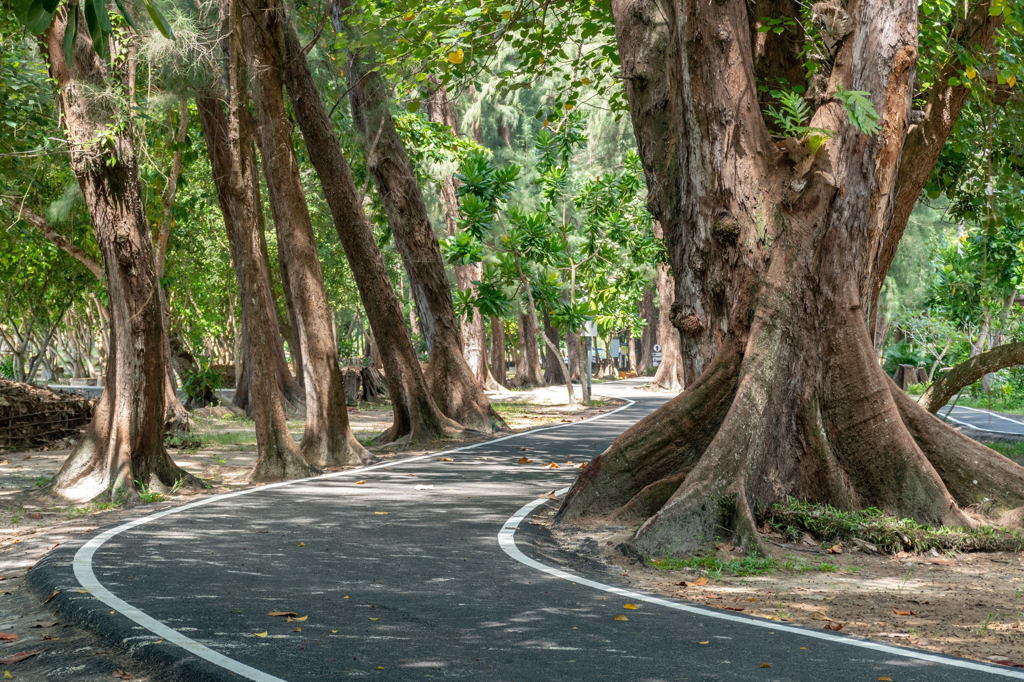
Upcycling plastic waste to pave roads

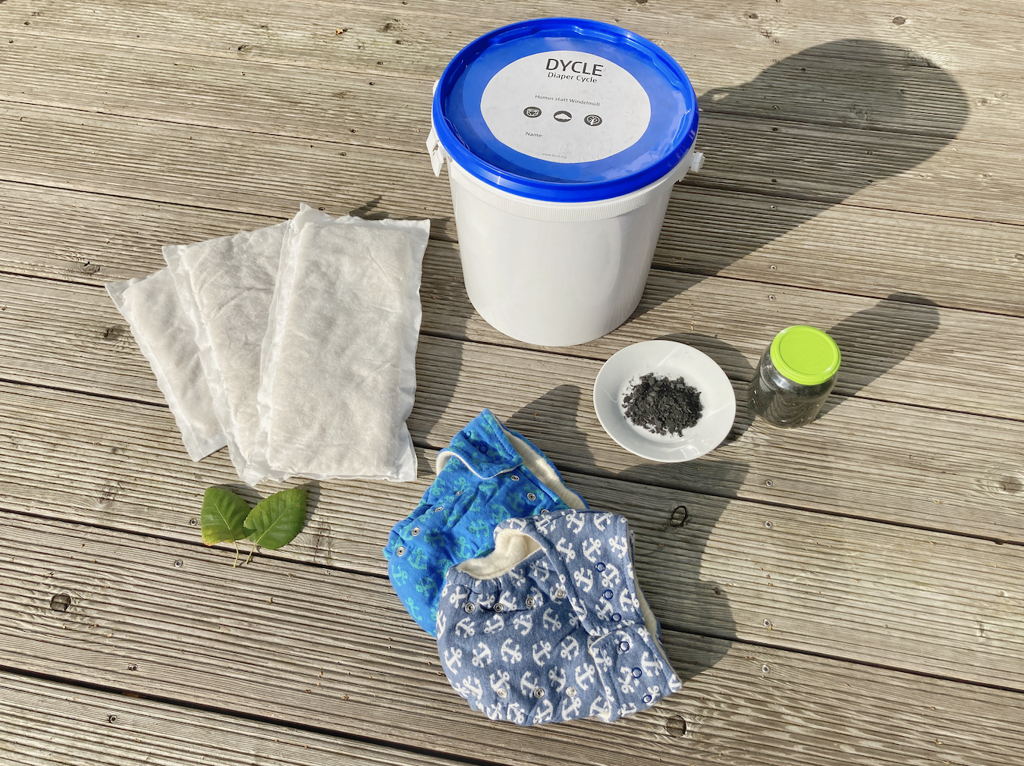
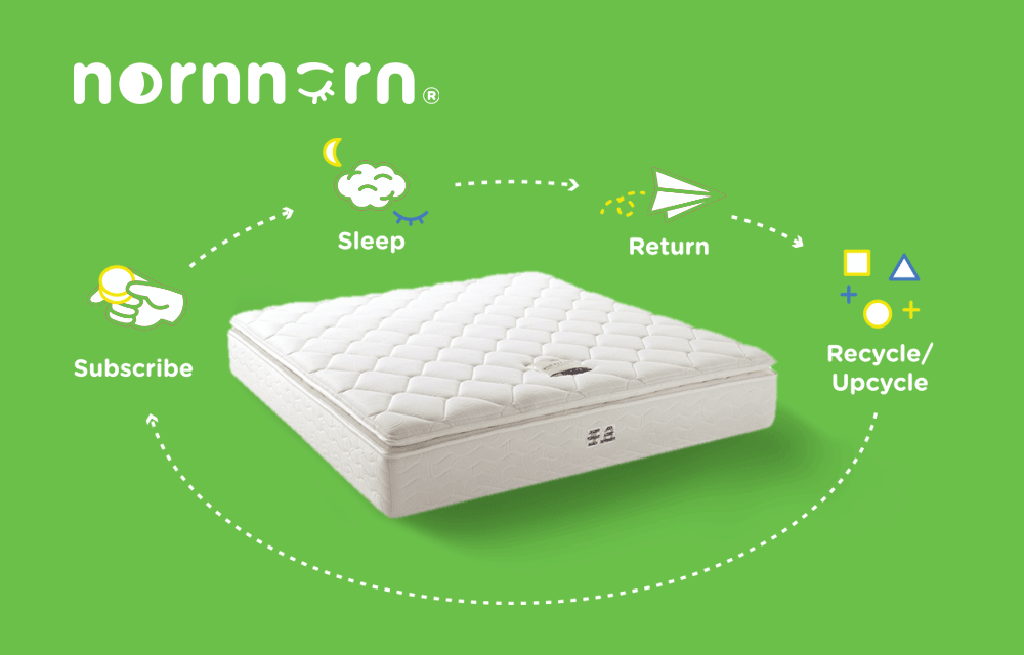
Circular economy-based mattress subscription platform

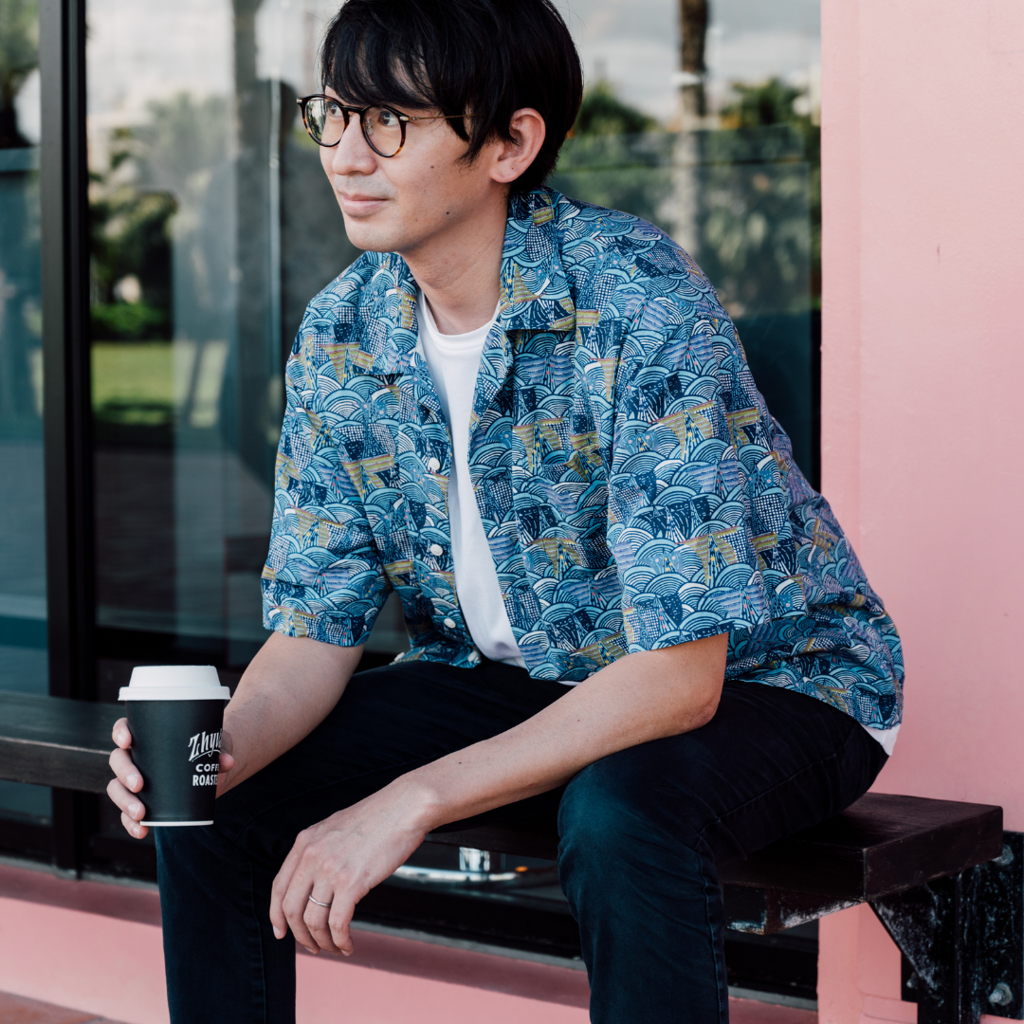
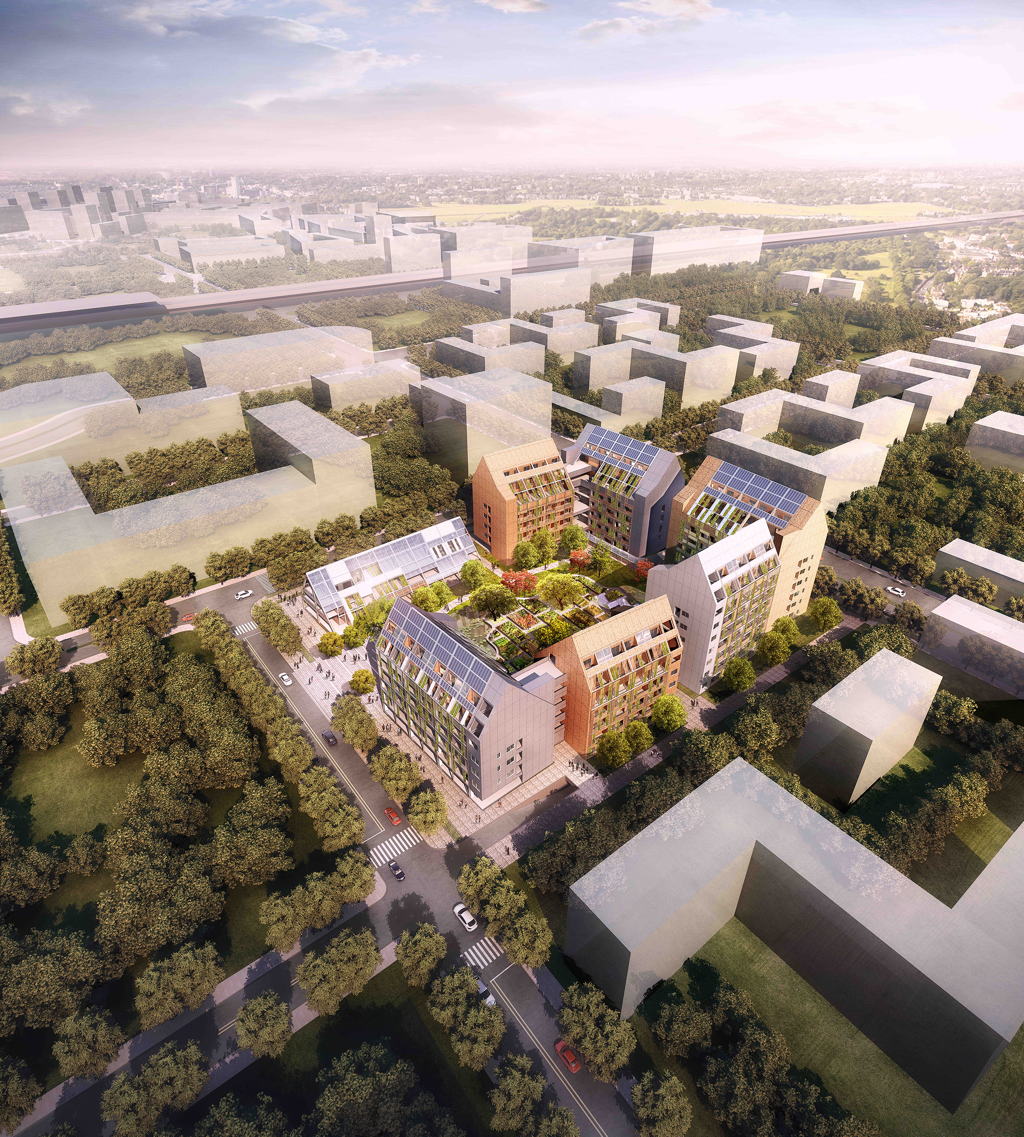
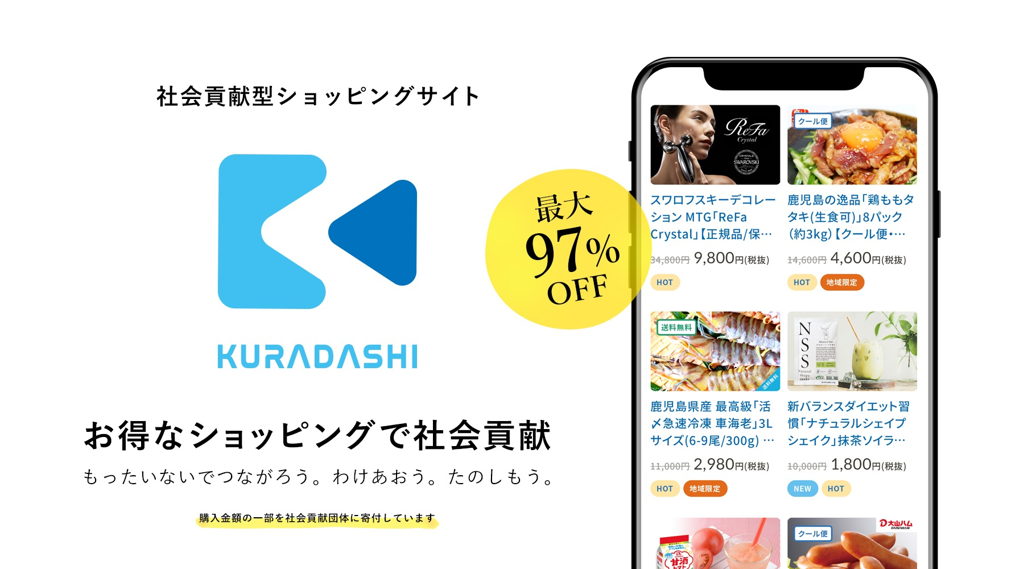
Social contribution shopping site
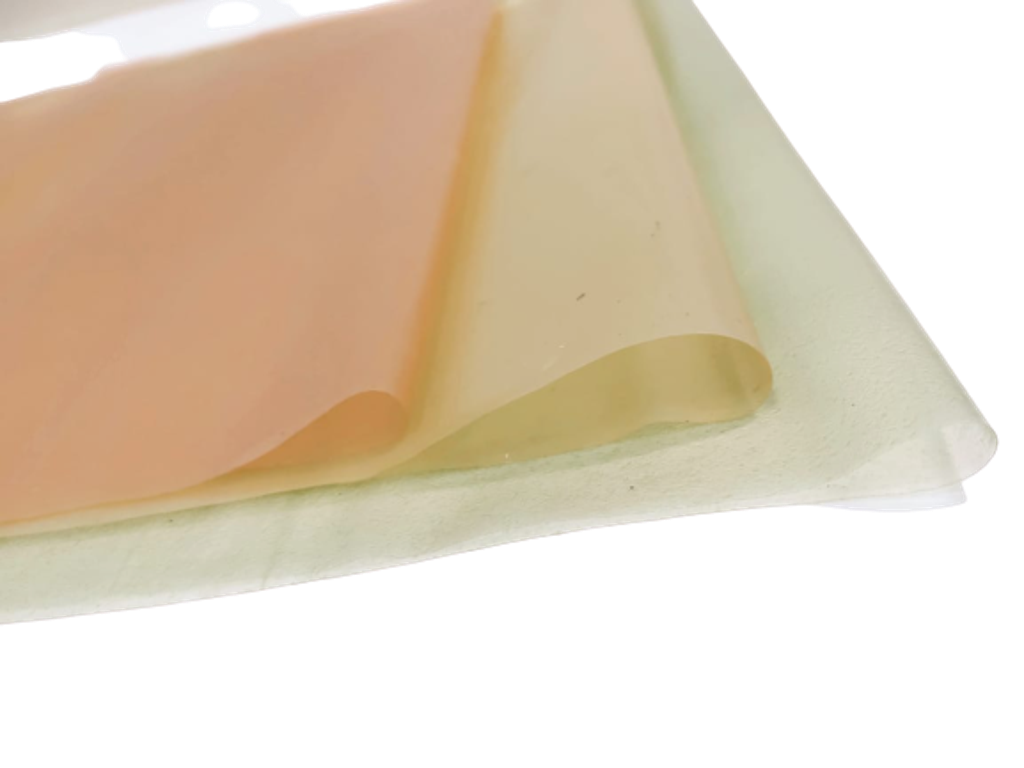
Seaweed-based biopackaging: sustainable, compostable, circular, and edible
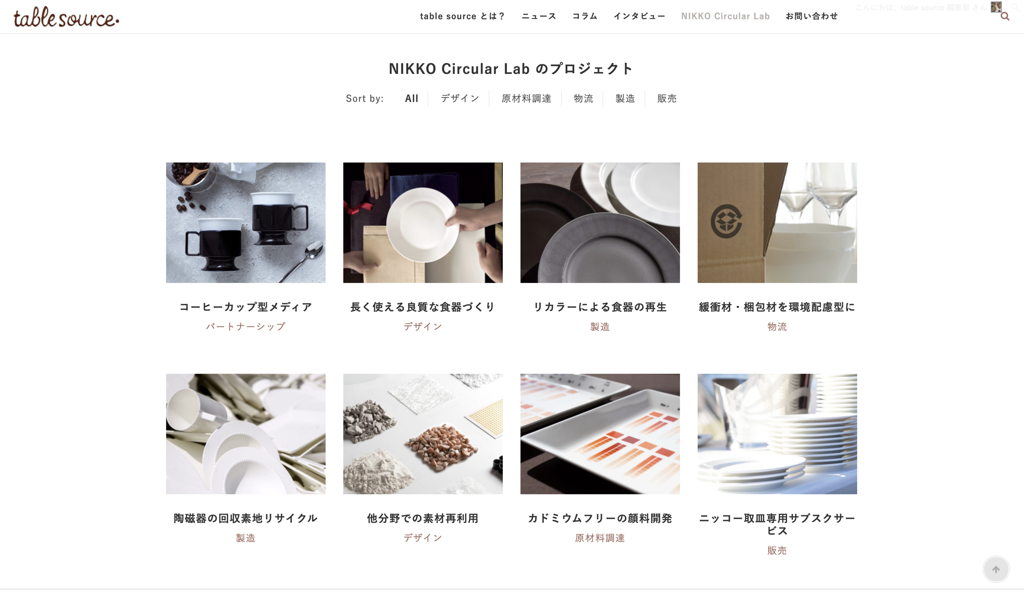
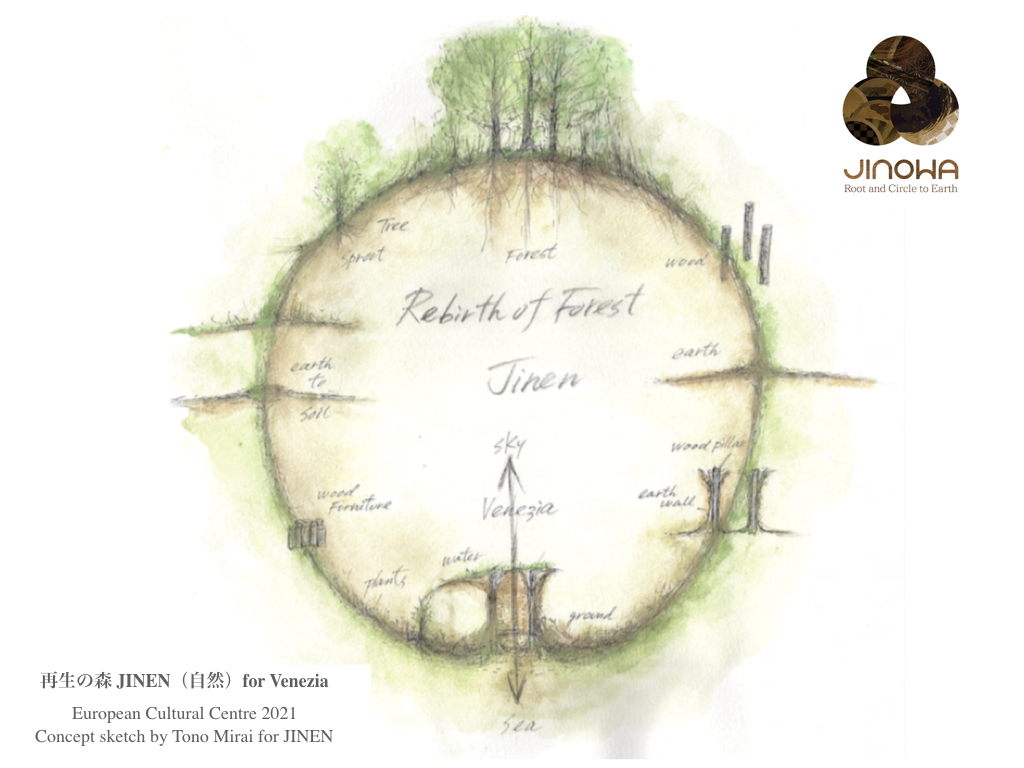
by JINOWA Consortium for restoration of earth
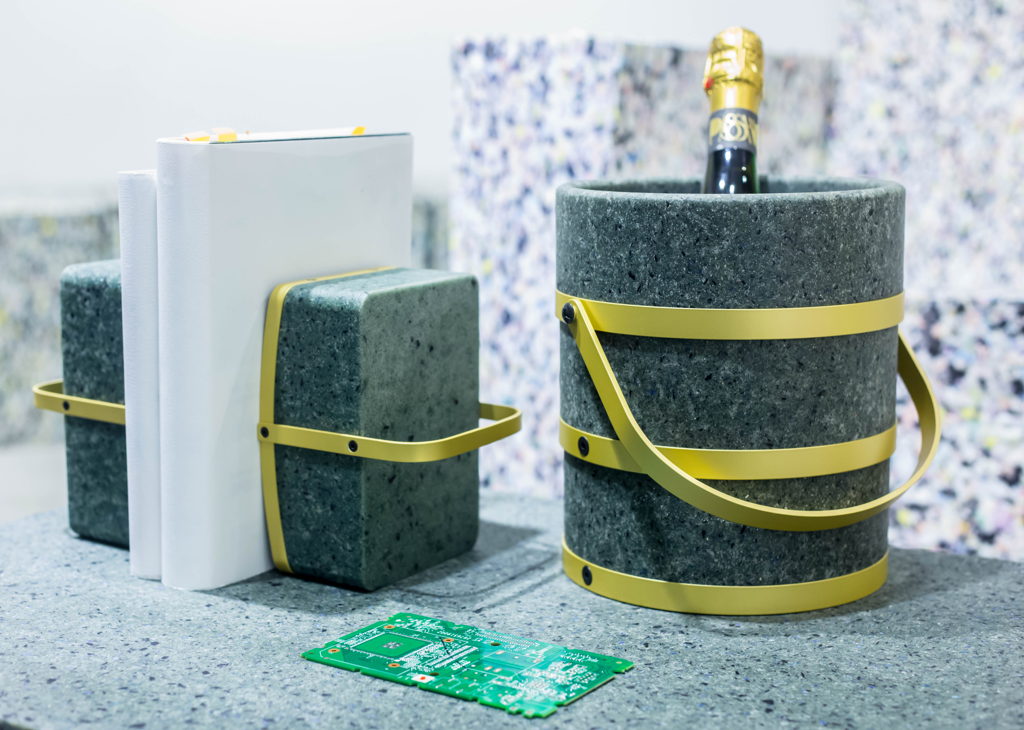
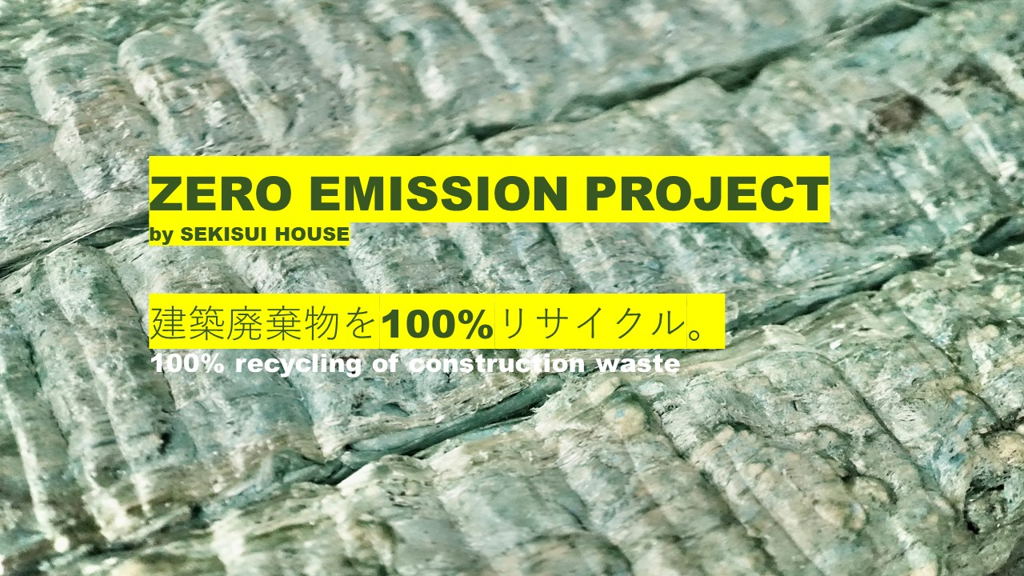

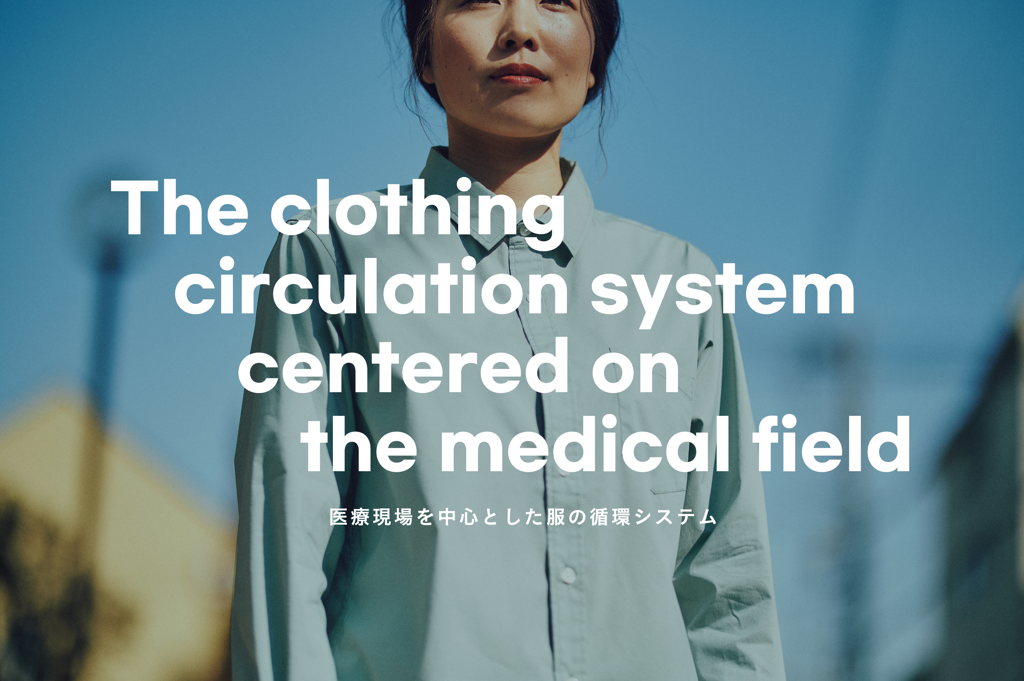
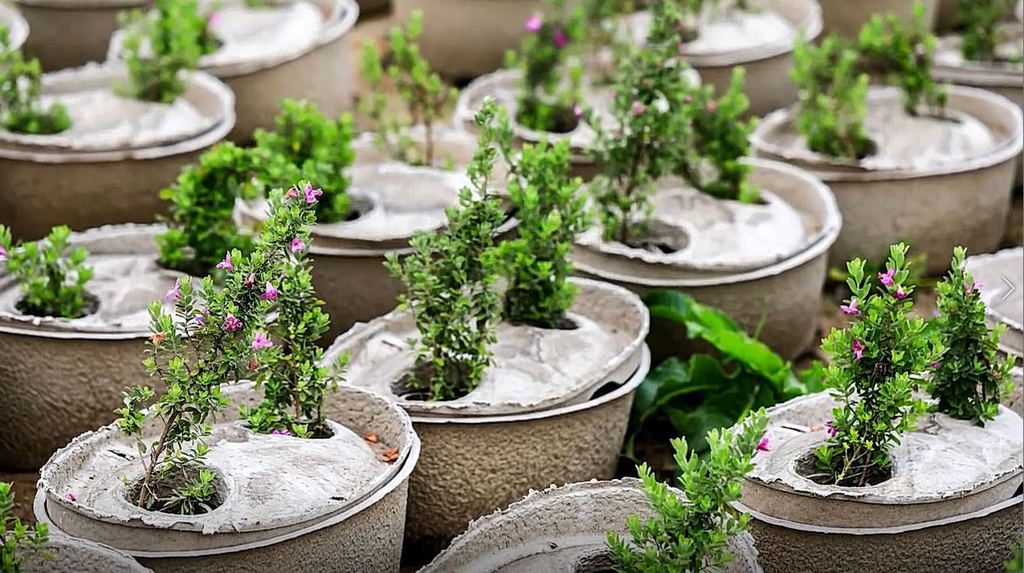

Beyond the circular economy. Mana Earthly Paradise with a social circular design

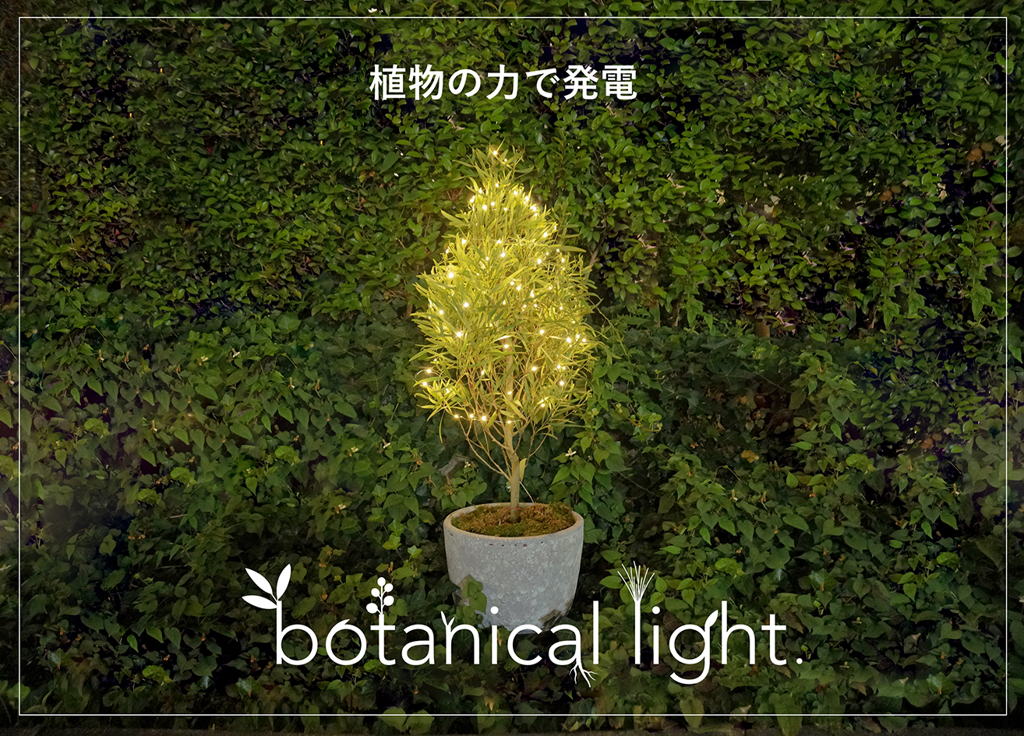
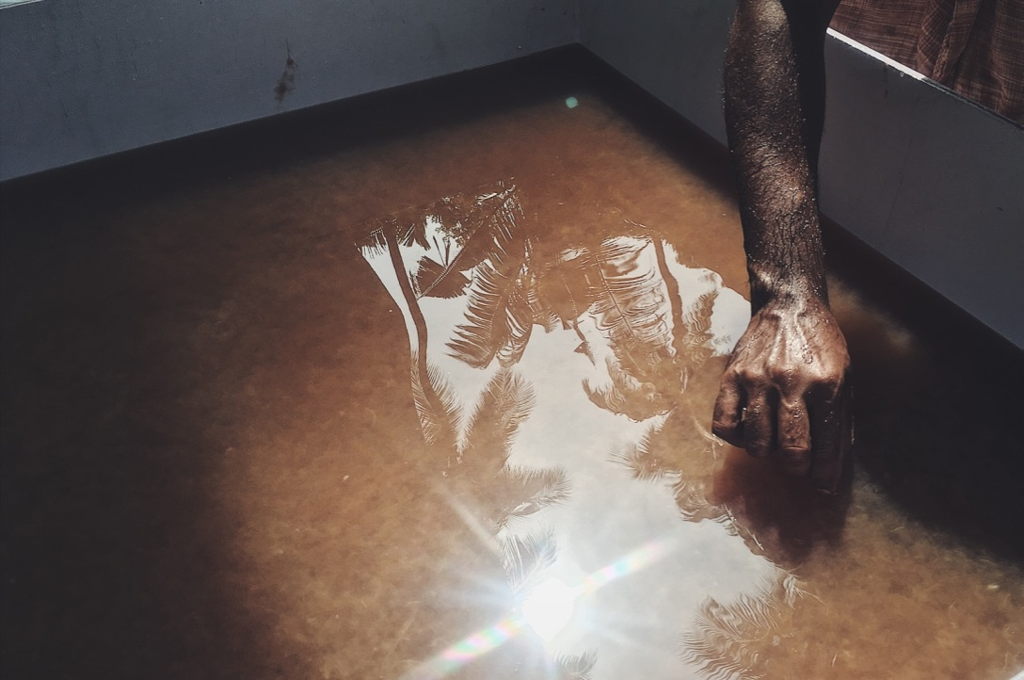
a novel plant based and home compostable alternative to animal leather
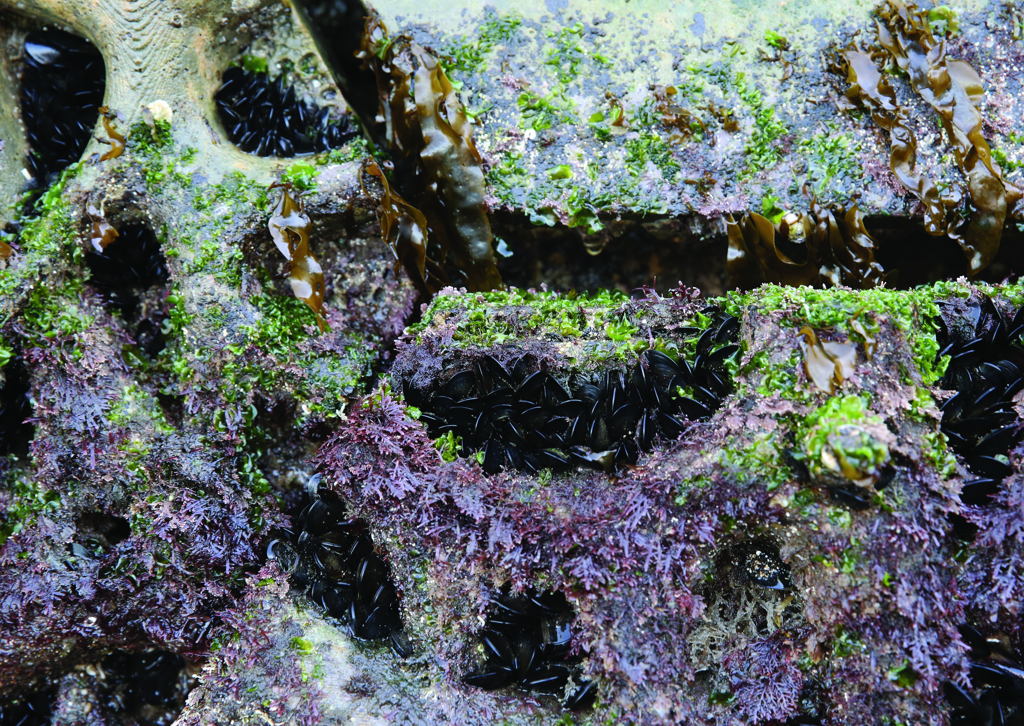
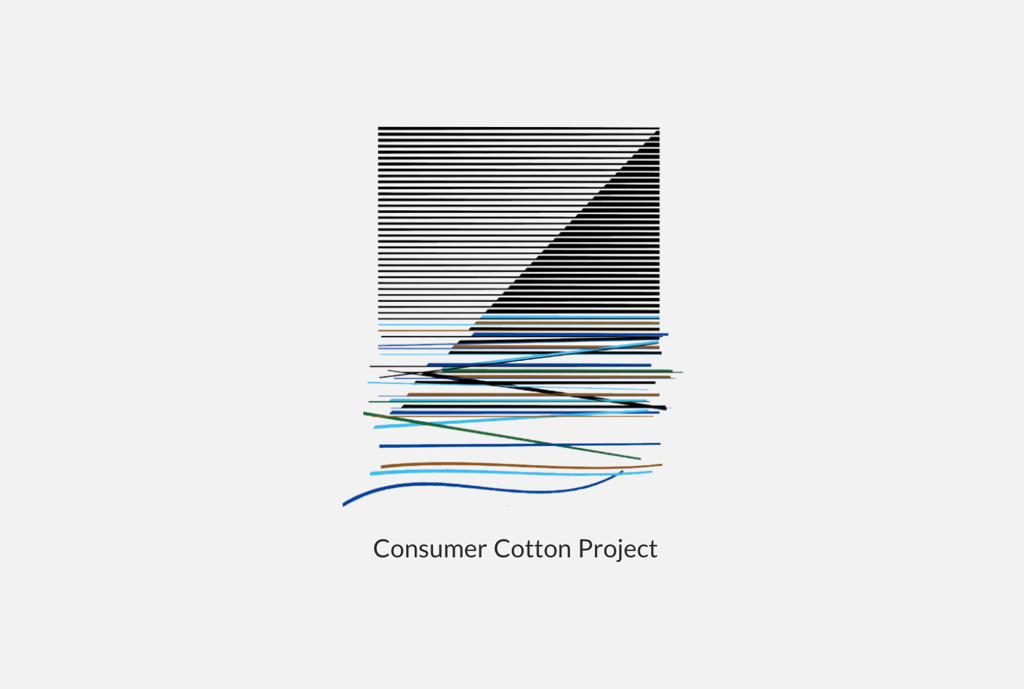
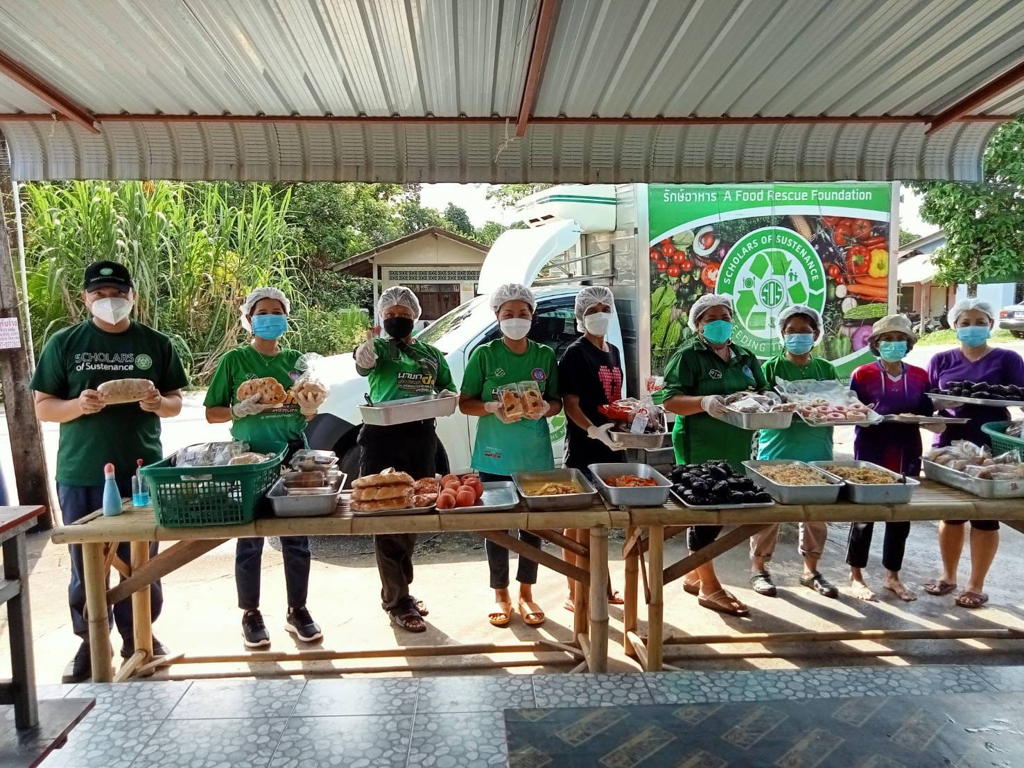
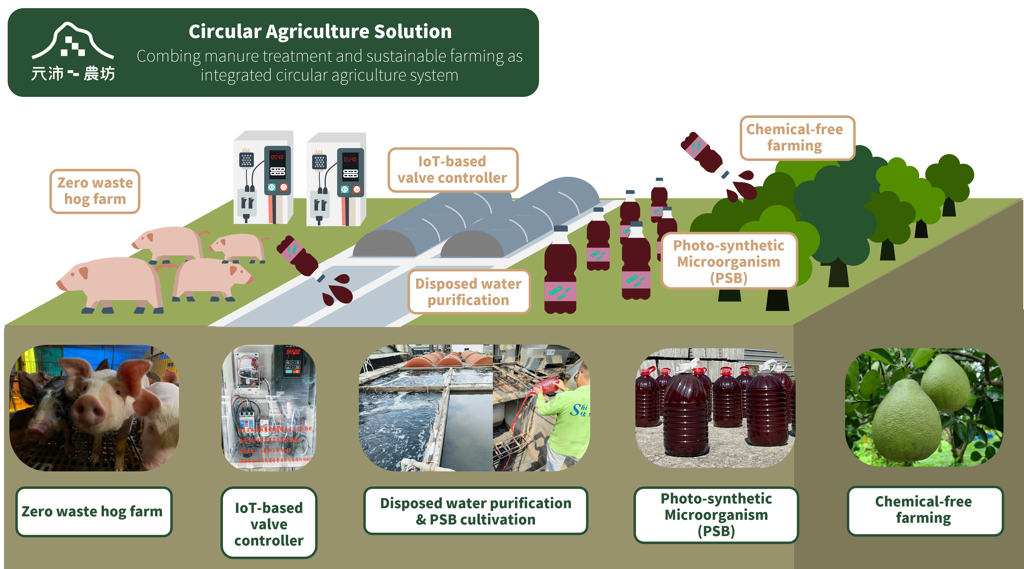
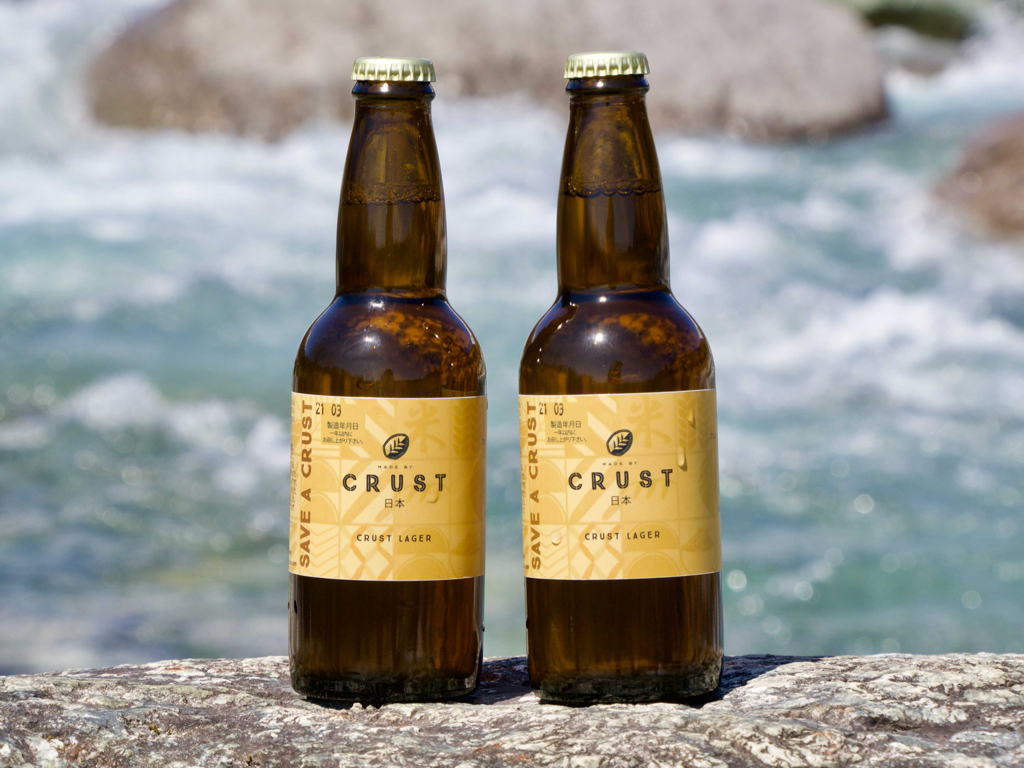
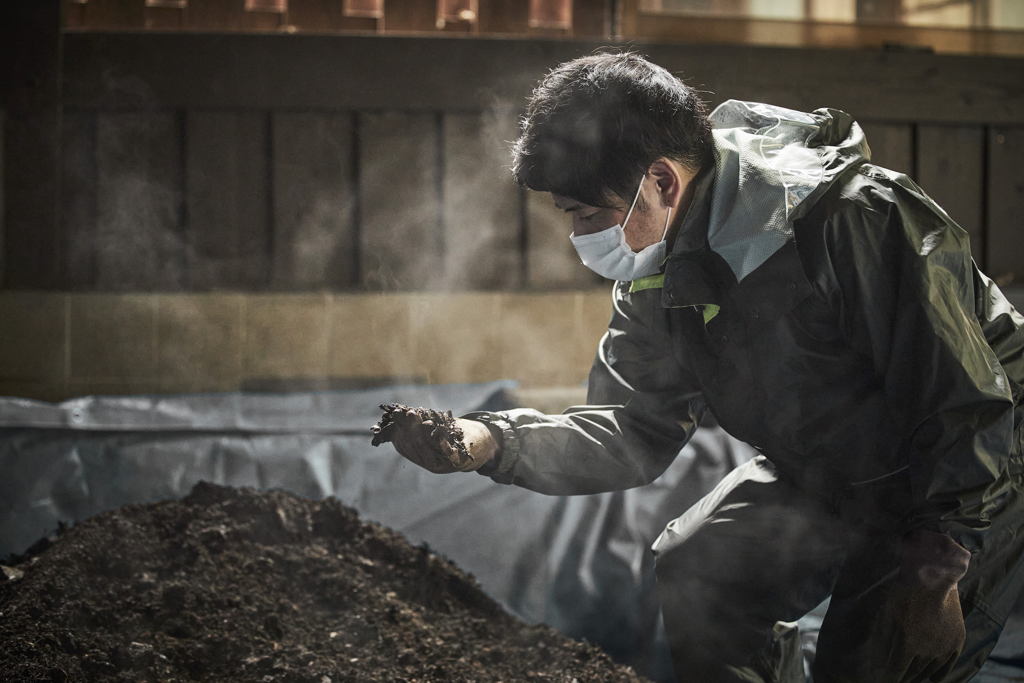
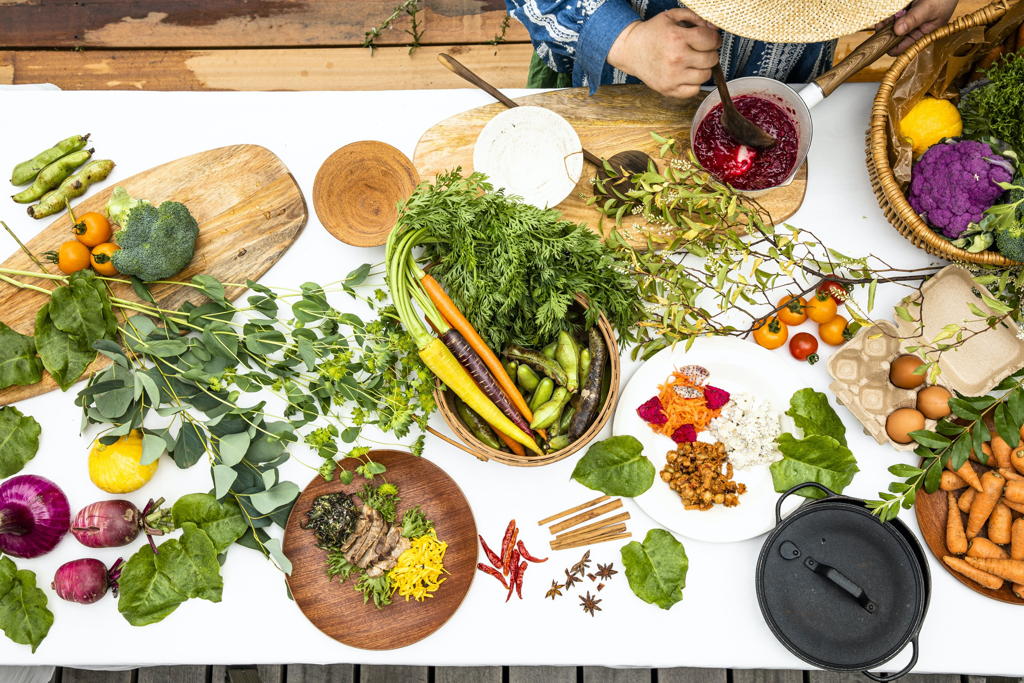
Create a cycle, not a fashion. Platform connected by food.

Transformative Experiences To Return Back to Our Roots
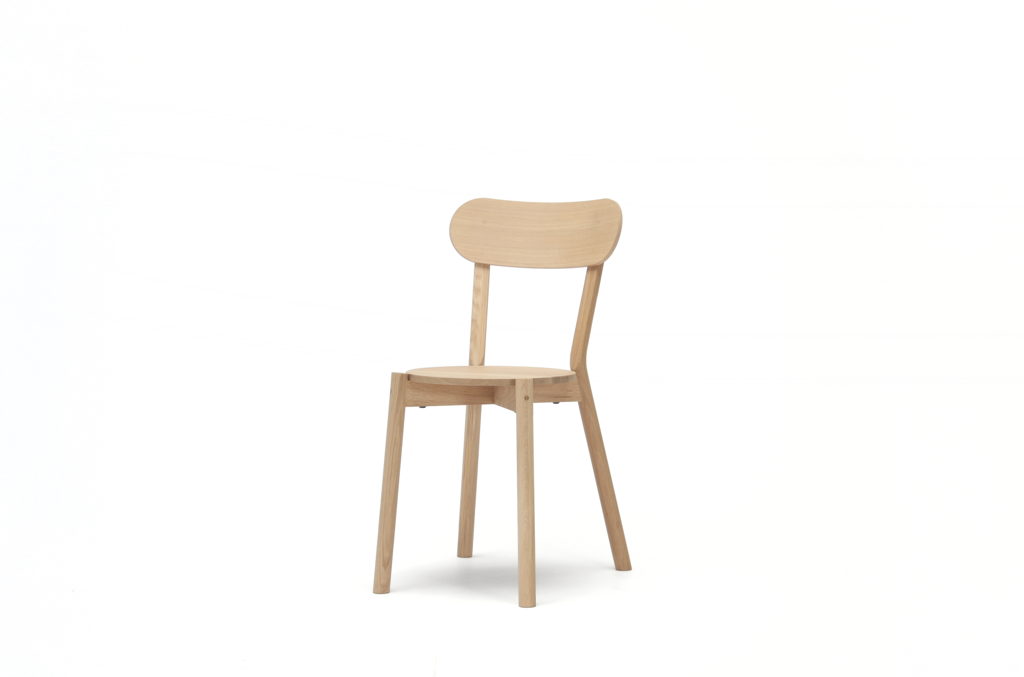
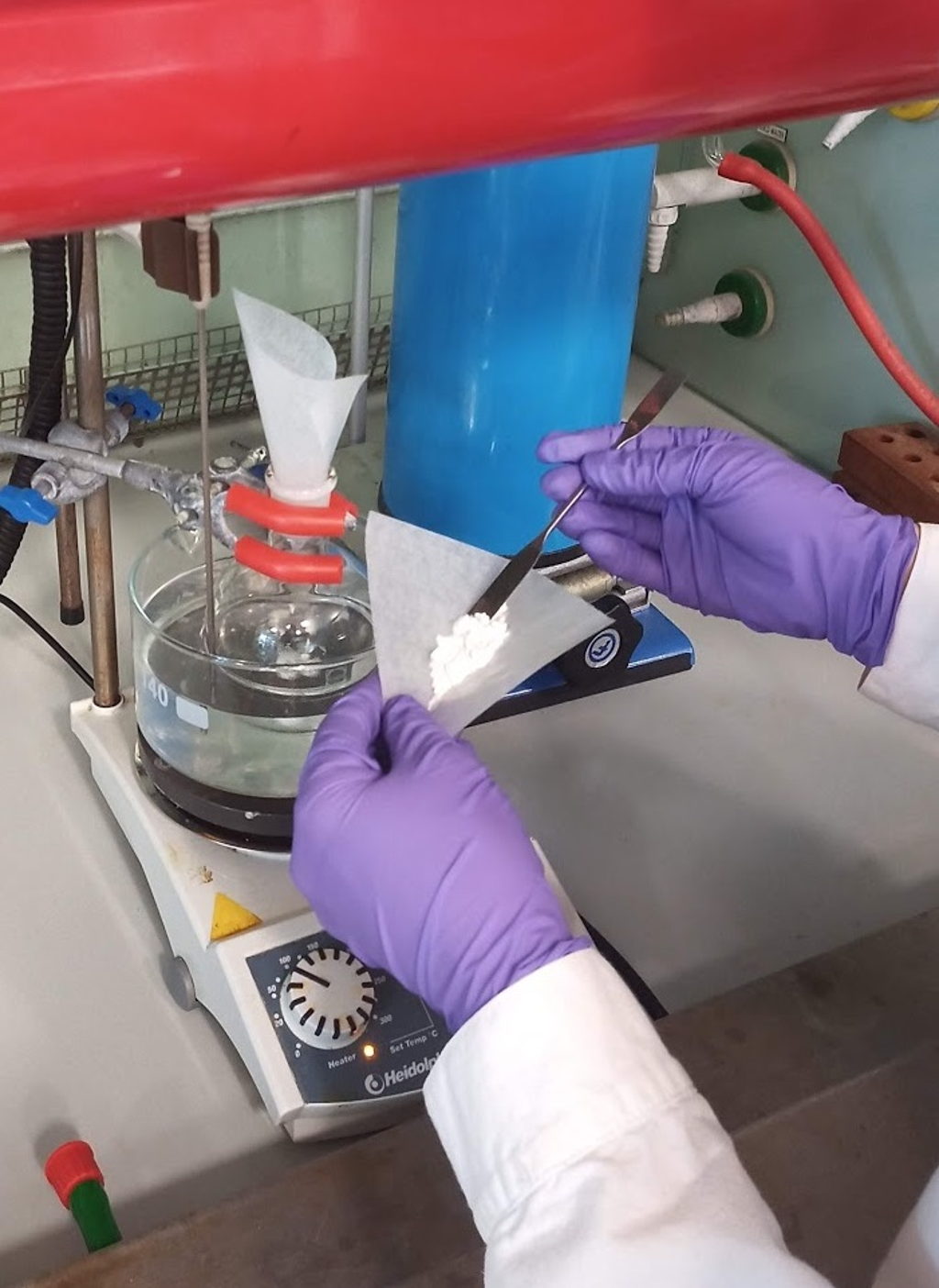
Producing cellulose white pigments as a sustainable alternative to titanium dioxide
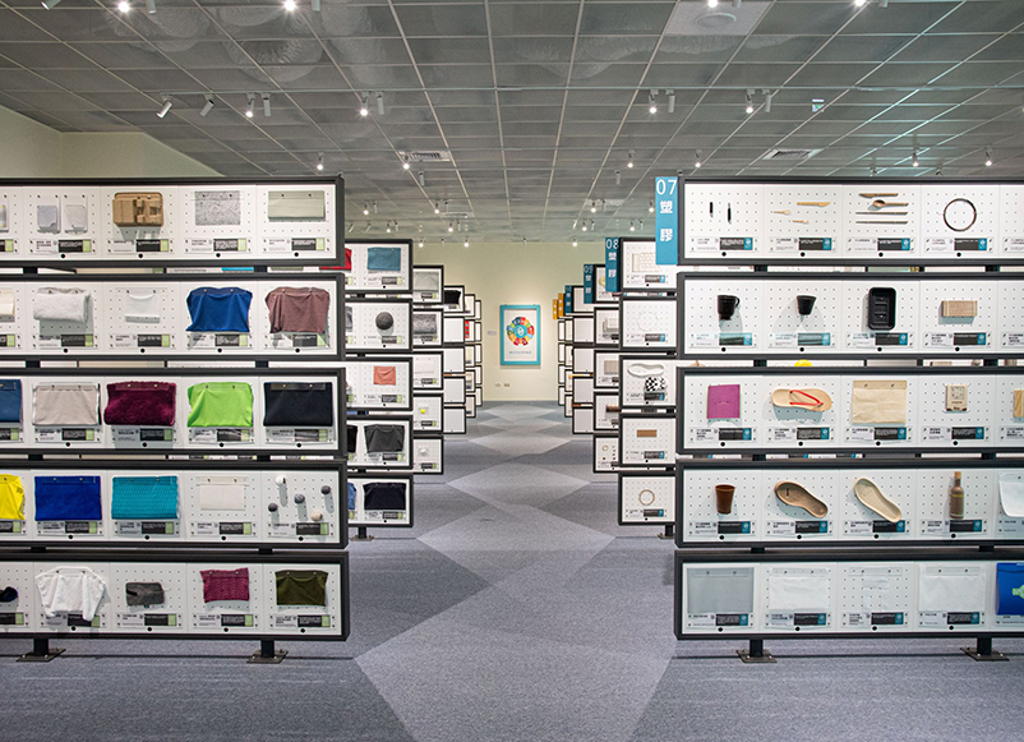
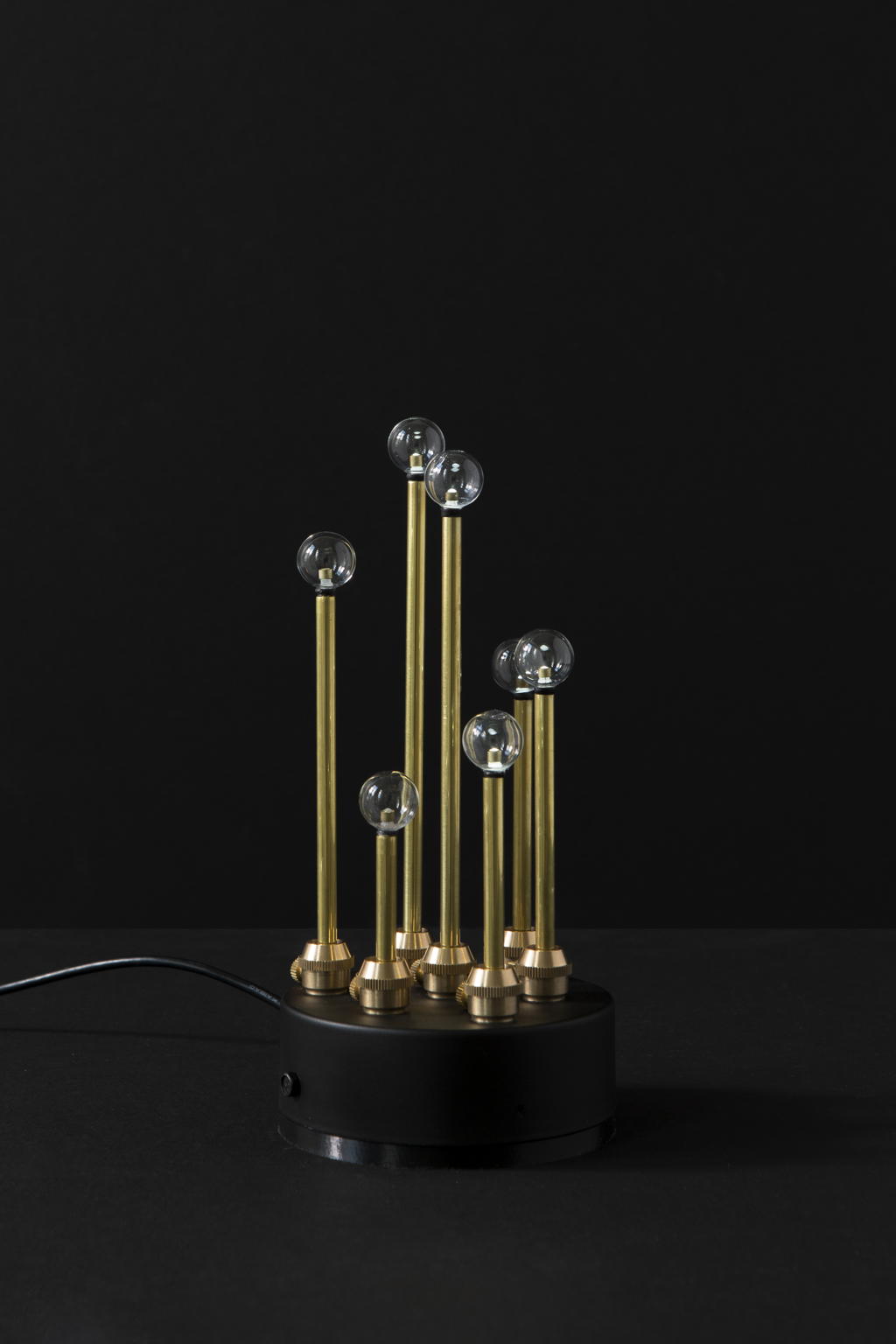
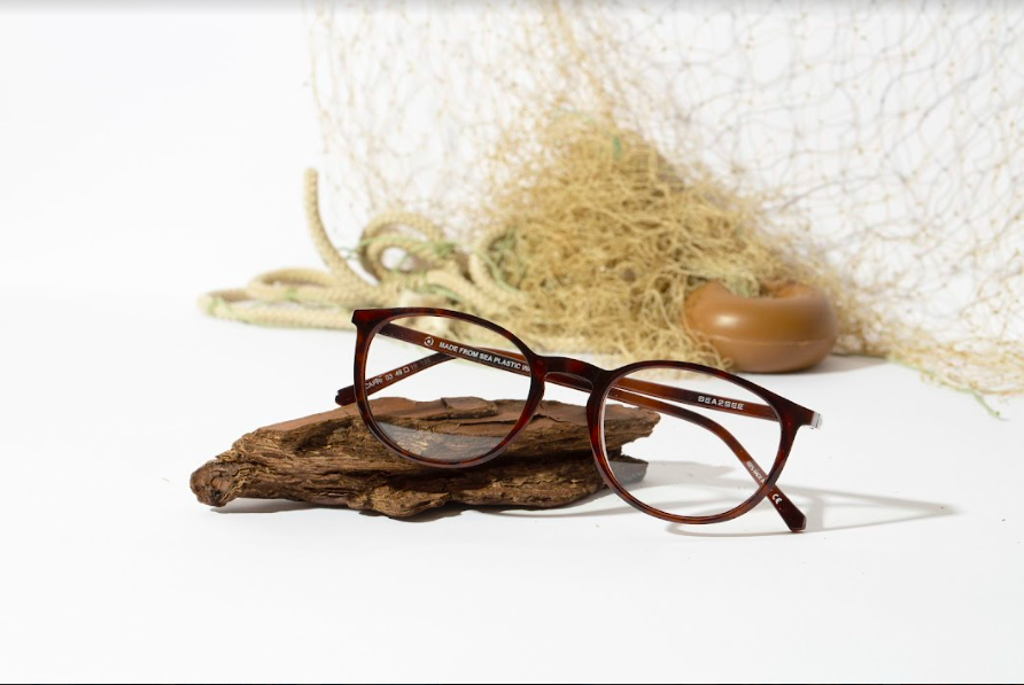
100% recycled marine plastic
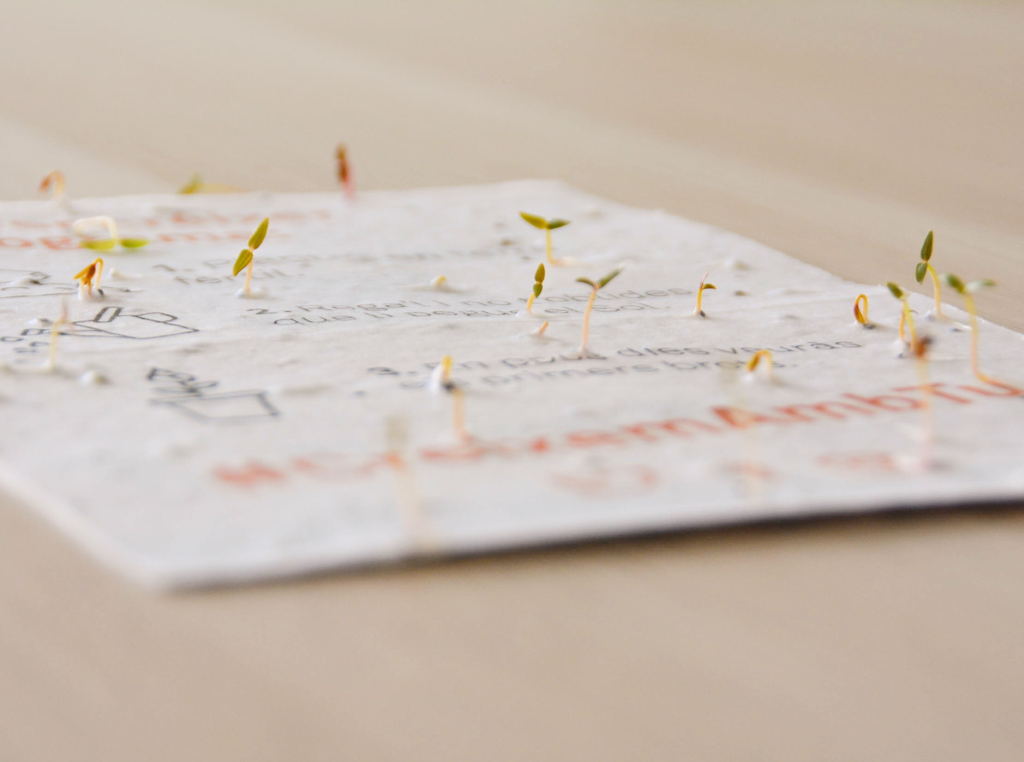
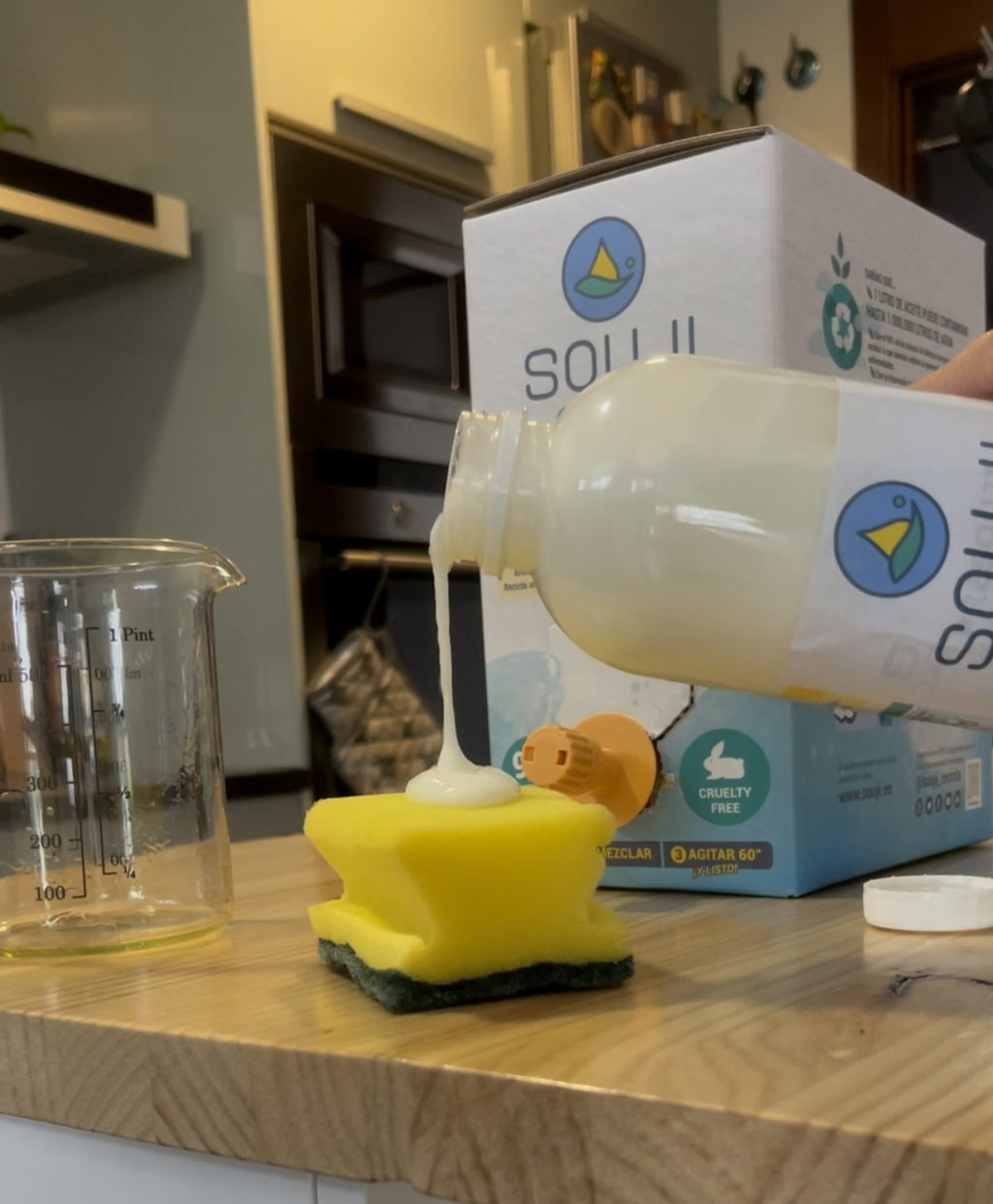
Reuse used oil, create your own ecological detergent, in just 1 minute
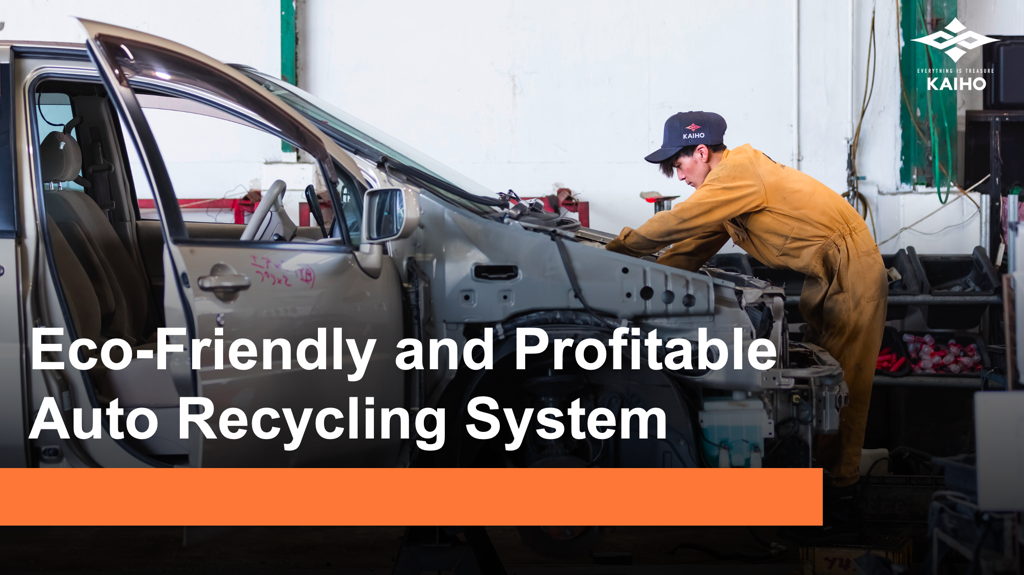
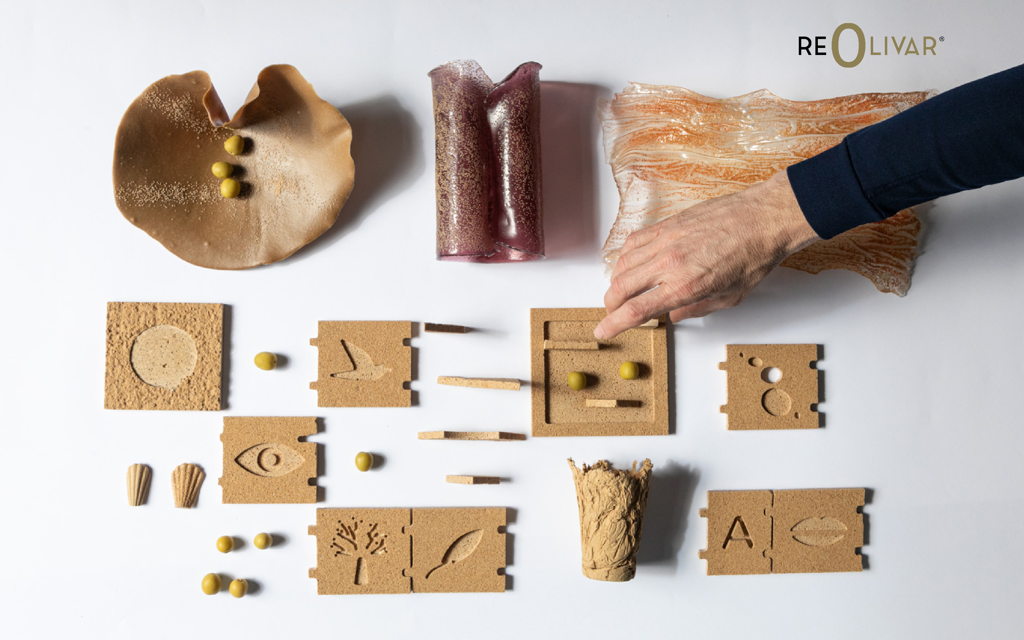
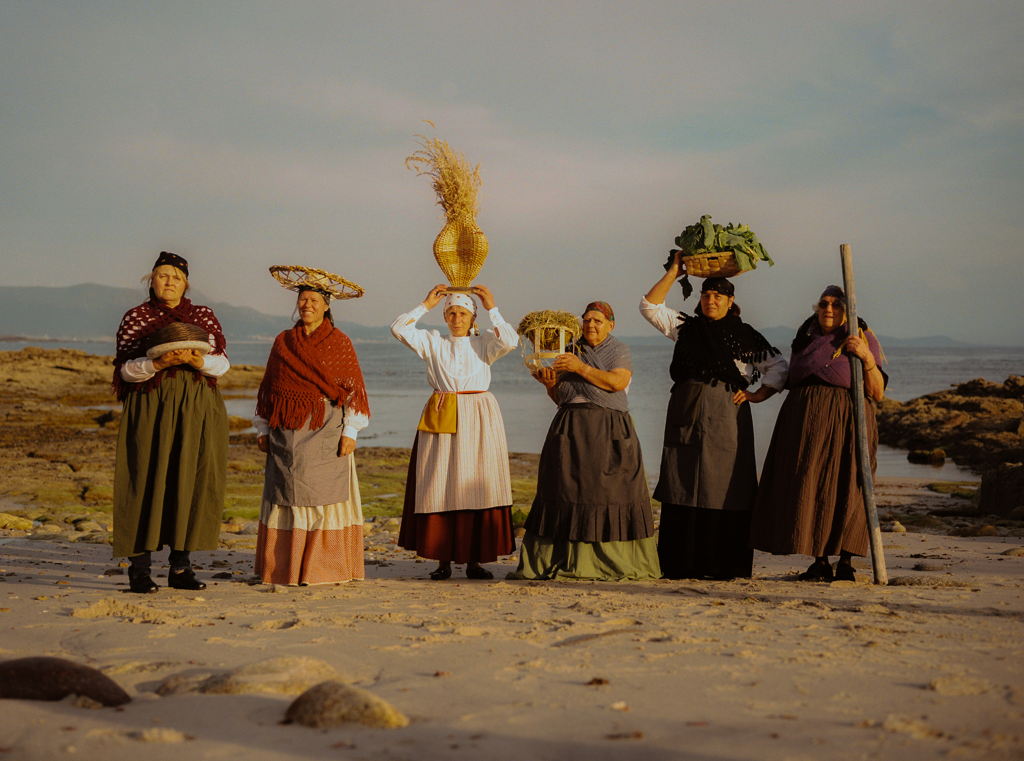
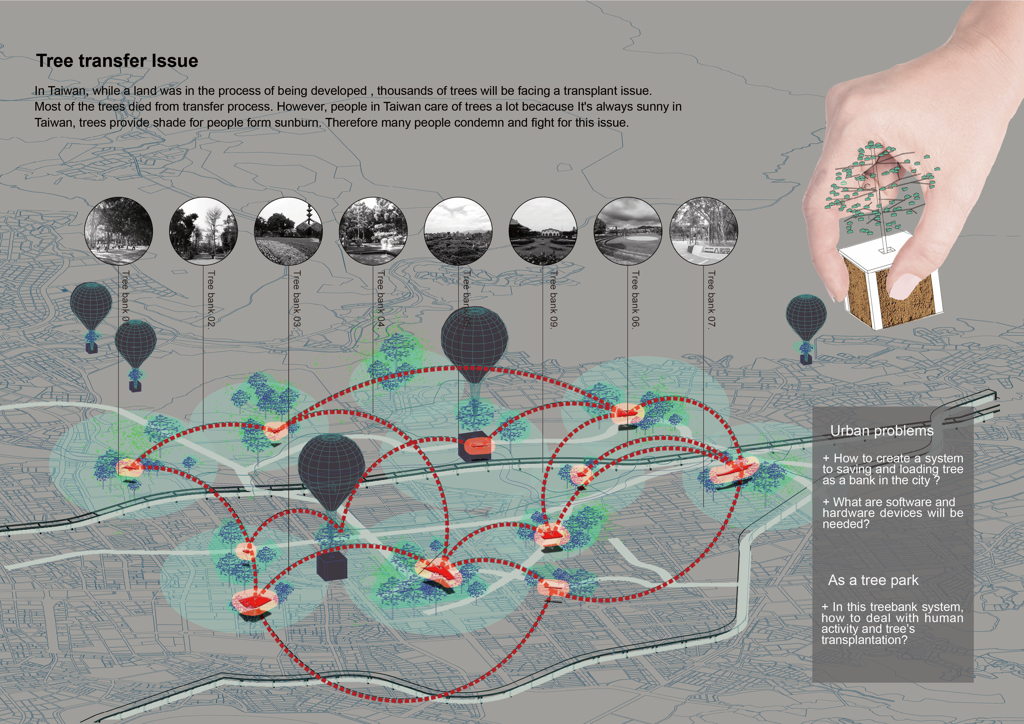

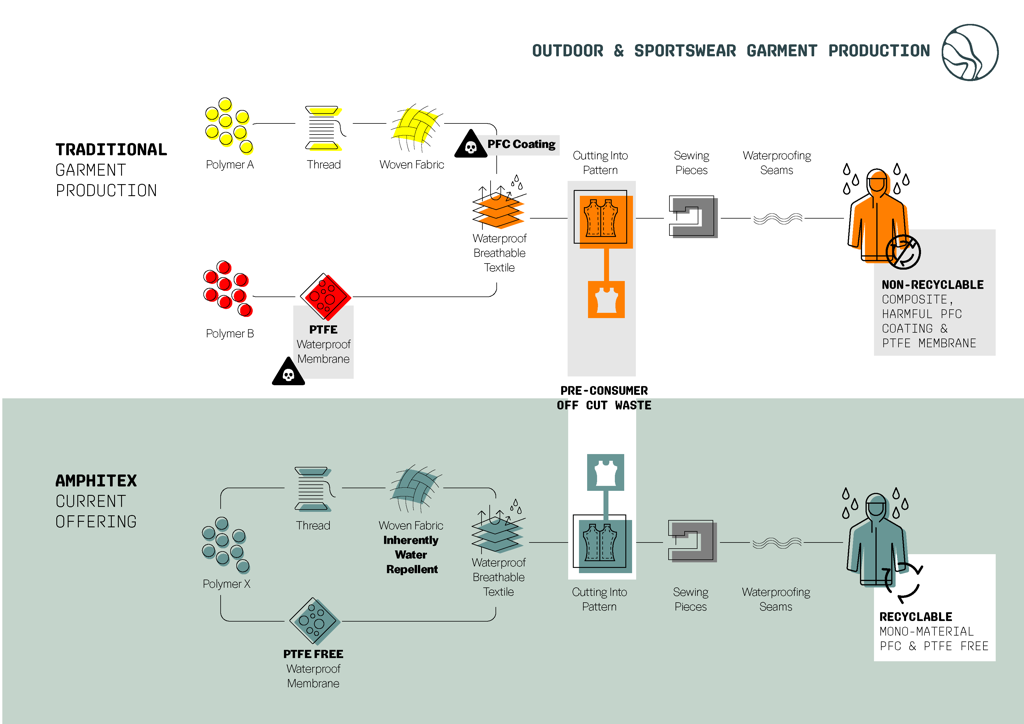
100% recyclable and PFC free waterproof breathable textile for the outdoor and sportswear industry

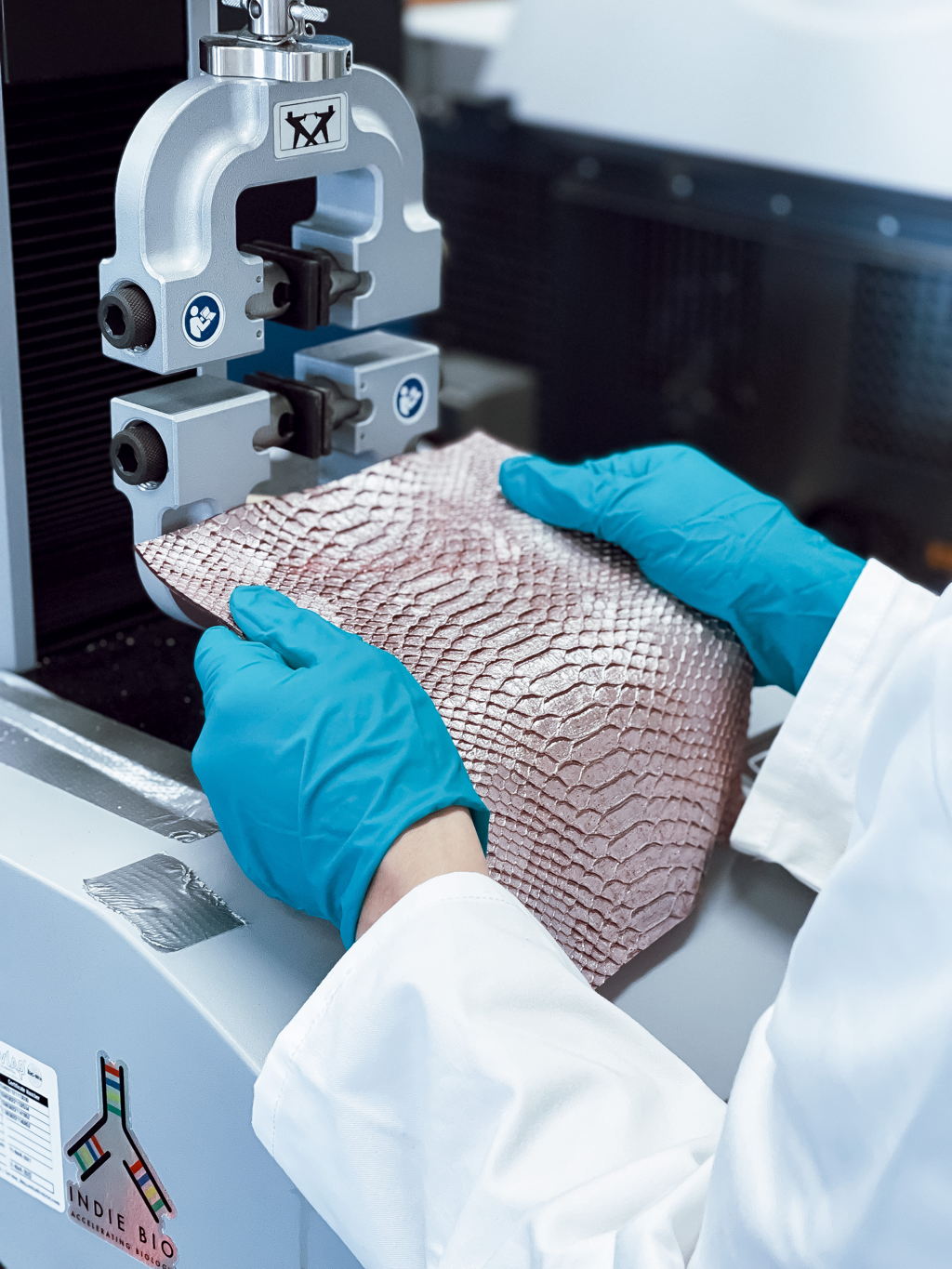
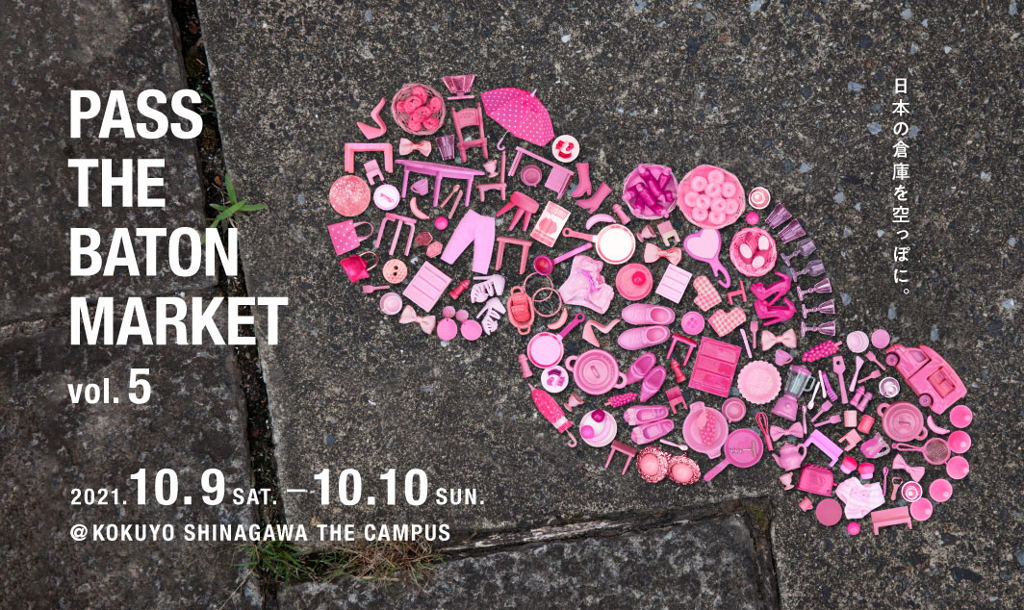
A flea market for non-standard products and dead stock products.
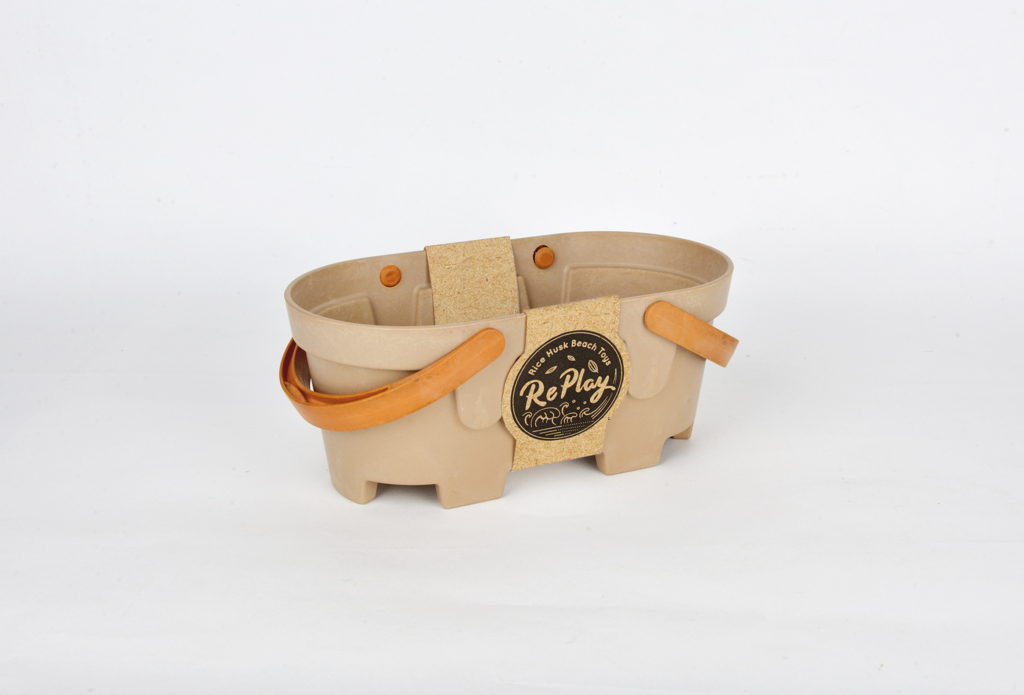
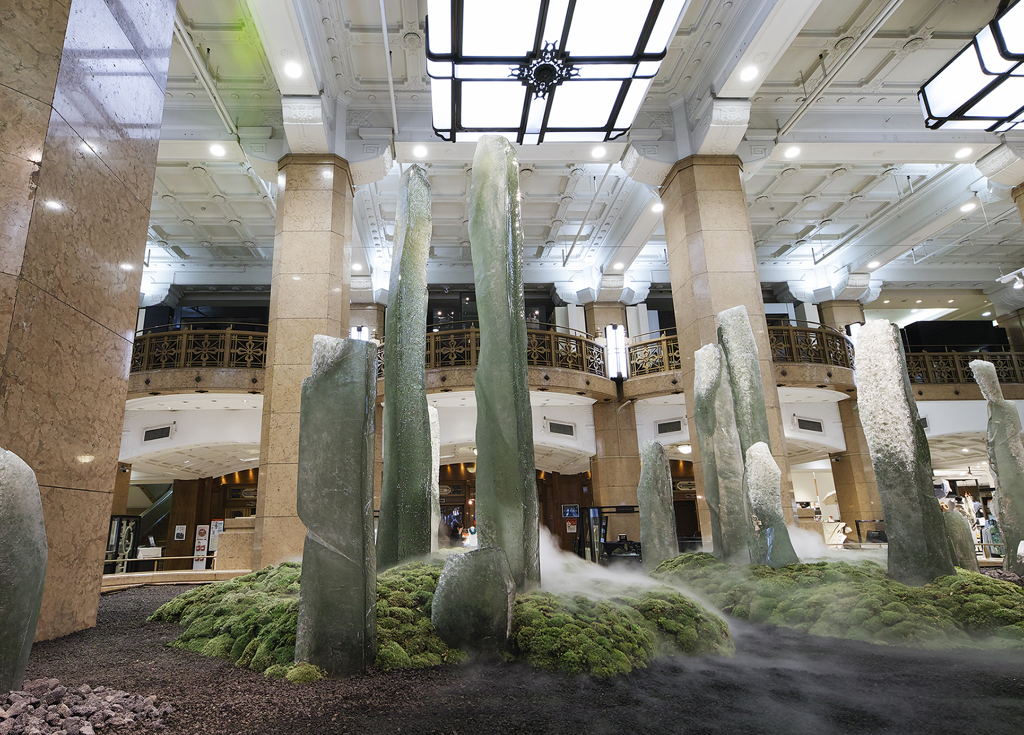
Recycle 800,000 tons of industrial waste.
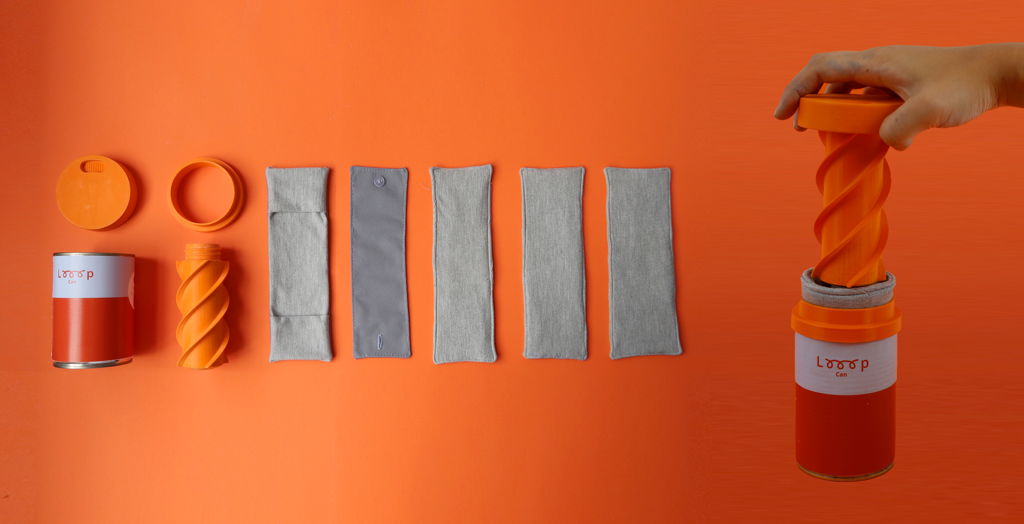

Tracing garments through supply chains
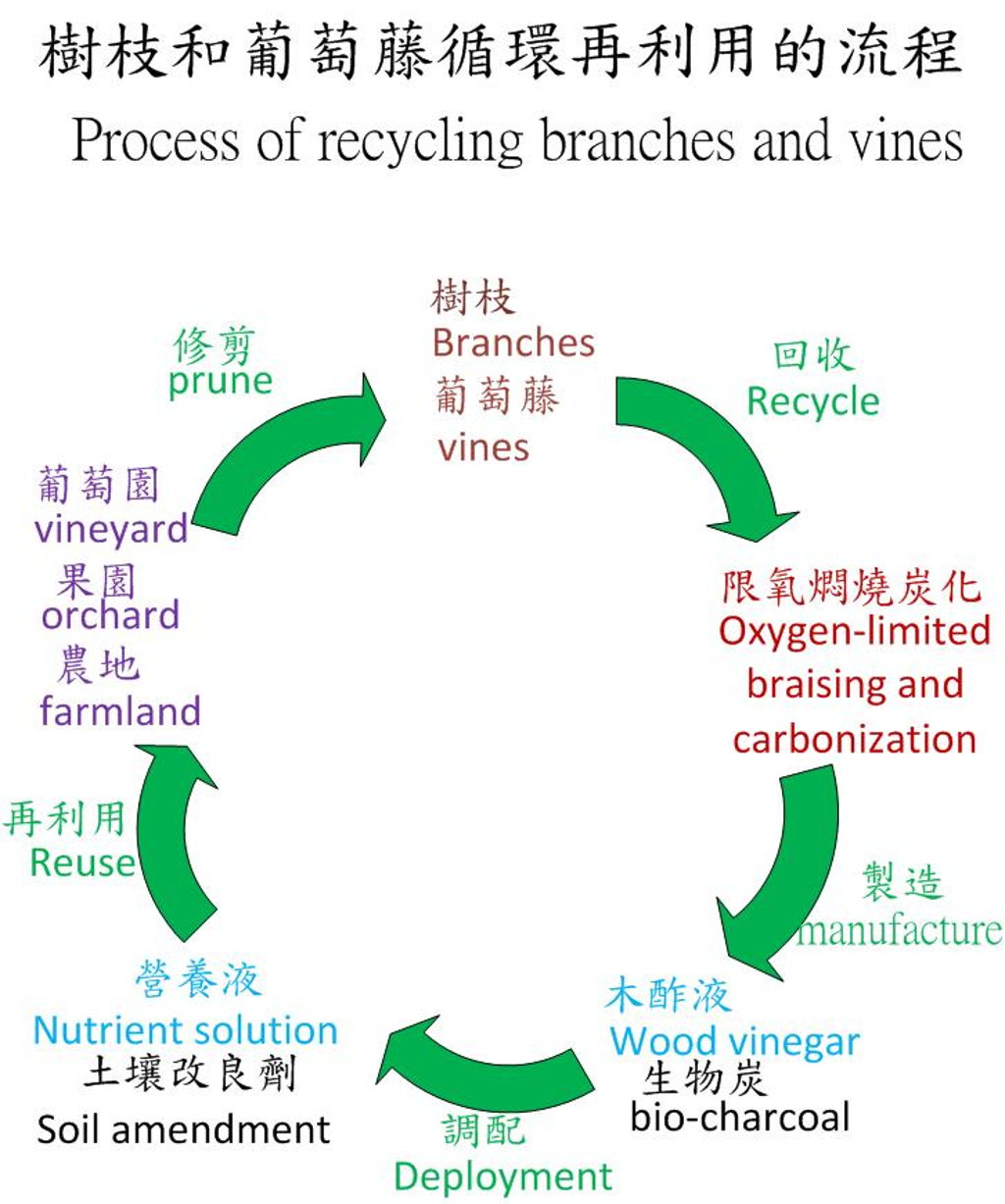
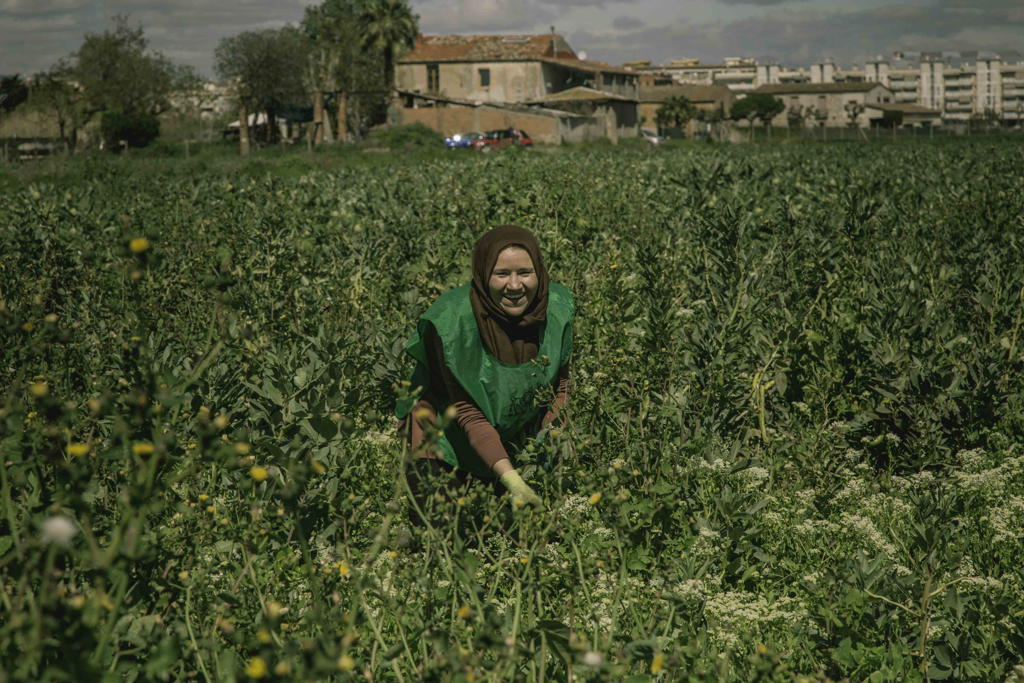
Fighting for a world without food waste


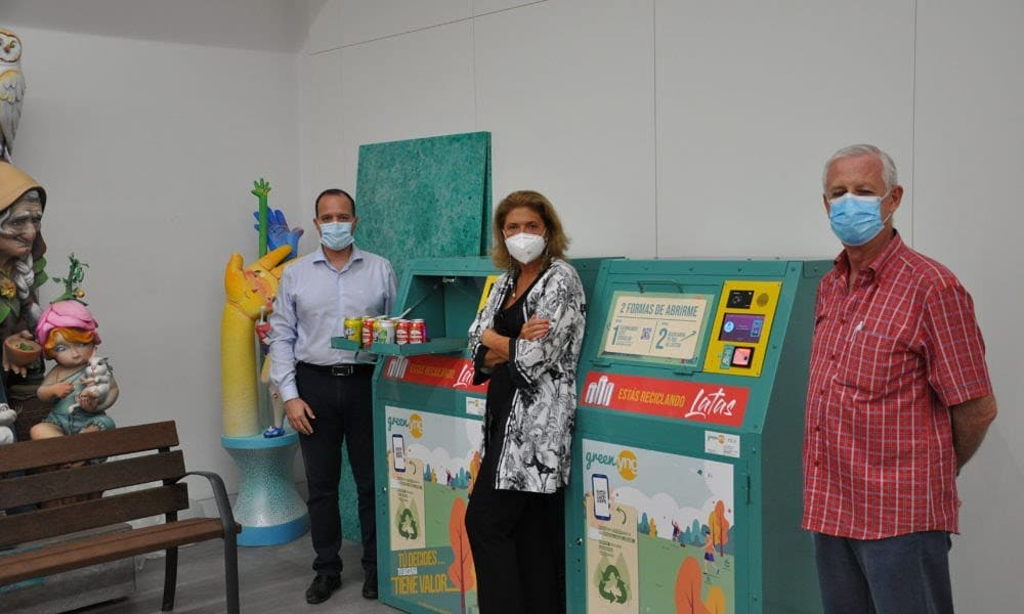
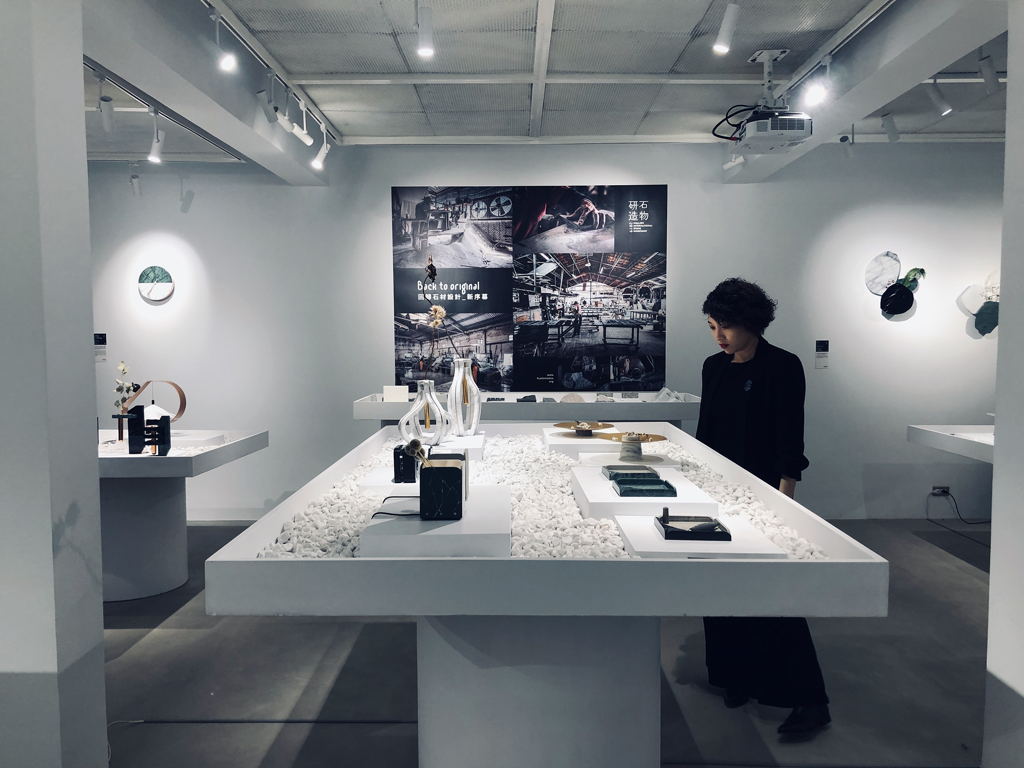

Upcycling plastic waste to pave roads
ASIA GREENROAD COMPANY LIMITED
Green Road is a volunteer group in Thailand founded by Assistant Professor Dr.Wechsawan Lakas (Dr. Pow Green Road). The objectives of the group are as follows.
1) To campaign for the public to reduce single-used plastic;
2) To campaign for the public to classify plastic waste for further optimal use; and
3) To ask for plastic waste donation from the public in order to produce upcycled products, such as, recycled plastic floor blocks, roads, desks, benches or footpath for the disabled; and donate them to schools, temples, public parks, and public spaces.
It starts from launching campaigns for residents in a target area to classify plastic waste and then mail it via mass transport to the Green Road Project or other affiliated projects on upcycling plastic waste for public benefits (view the accompanying video). There are various upcycling methods, for instance, melting plastic waste with other materials or using plastic waste as a component or recycled materials. These depend on the types and quantity of donated plastic waste. Upcycled products are then donated to public institutions or spaces. For instance, plastic floor blocks are used to construct a road for schools, temples, or a footpath for the disabled. Recycled desks or benches are given to public parks for people to sit and relax. Upcycled shoes or clothing can be given to children in poor remote areas. The volunteer group hopes to reduce the quantity of plastic waste in the country, as well as to raise people’s quality of life with a sustainable and environmentally friendly lifestyle.
The project is an awesome opportunity to reuse plastics as well as to clean the sea. It covers a need to transform petroleum-derived waste into raw material to serve the community in improvements of public space. The proposal has a lot of advantages regarding the products, but also considering the educational part that looks for awareness. To enrich the project, I would like to make some questions thinking about all the stages of circular economy: Have you studied how the “plastic asphalt” develops over time? How long does it last? and what happens when it breaks after time? How can it be discarded? Have you studied the impact this big waste could have in the environment?
Balancing Prize
Ana Laura Cantera
A very inspiring project. Simple story, concrete applications and existing implementation with clear business opportunities (unless the cost is prohibitive). How does the cost of Green Road compares to traditional Asphalt? It seems however that sourcing discarding plastics in high quantity with the current method could be difficult. If so, it could be worth to develop and integrate a more systemic collection model of discarded plastics (maybe looking at the Banyan Nation model to enable and strucutre informal collection practices). I wonder also if it would be feasible to look into bio-binder from vegetable oil, or other nonpetroleum-based asphalt binders such as sugar, or rice starches? Some studies have been conducted for producing starch out of fruit waste for example (inc. mango). Meaning that the circular potential of the project might be pushed even further....
Circular Beacon Award
Guillaume Charny-Brunet
First of all, well done for being a very responsible citizen who decided to take matters into his hands and decided to do something about it? A great mindset indeed. We have much recyclable waste around us. And producing upcycled products from such plastic waste is indeed very much needed by our planet. The challenges I see with your solution is that is based on volunteerism. It’s not bad, but it affects the long-term sustainability of the solution. I’m also wondering whether you have a team as part of this solution. I say this because in the video you said, “People sent it (the waste) to me.” That indicates this is an individual effort and in a small scale. Think of expanding your team and building partnerships.
WeGreenify Prize
Mohamed Muse Hassan
Green road offer an opportunity to absorb discarded plastic into country infrastructure and pave the better life of the country citizen.
INFRASTRUCTURE IMPACT Prize
Kalaya Kovidvisith

株式会社LIFULL
Earth Cuisine is a project to find new ingredients from the earth.
It is a project to find new ingredients for the earth.
If we can find new possibilities of eating ingredients that cause social and environmental problems
“If we can find a new possibility of eating
If we can find new possibilities of “eating” the ingredients that cause social and environmental problems, the future may change drastically.
In order to realize a sustainable society
To realize a sustainable society, we would like to offer you a dish that will make you rethink your life.
人口増加と気候変動に伴う世界食糧危機が懸念される中、これまで目を向けてこなかった可食資源への注目が集まっております。また、サーキュラーエコノミーにおいては「発想の転換」や一般大衆を惹きつける「デザイン性」、遊び心ある「プレイフル」なマインドが大切にされる中、「地球料理 -Earth Cuisine-」はこうした要素を包括した独創的で完成度の高いプロジェクトに映りました。すでに開催されたイベントの食事はどれも洗練されており、今後日本のみならず海外からも注目されるポテンシャルを秘めていると感じました。また、地域課題に目を向けることが自然とその土地の未活用資源の活用につながり、地域のユニーク性創出や活性化につながるよう感じられたことも評価させていただきました。今後が非常に楽しみな取り組みです。
Amid concerns that population growth and climate change could prompt a global food crisis, attention is focusing on new food sources that have previously been overlooked. I found Earth Cuisine to be an original and well-rounded project that embodies the shift in perspective typical of the circular economy, along with a playfulness and design sensibility that give it a mass appeal. They have already showcased some highly impressive meals at events, which I feel can generate interest both in Japan and overseas. I also admire the sensitivity to local issues. By identifying unused resources in each area, Earth Cuisine is helping to promote distinctive regional characteristics. I am very much looking forward to seeing what they do next.
Rethink Prize
安居 昭博 / Akihiro Yasui
「社会課題を食材に変える。」 課題を食べる。UseではなくEat。 使い道が思いつかないなら、自然のものなら食べてしまえ。大胆な発想の転換です。ヒトは進化の過程で食べるものを変え、文明の発展とともに食べることに意味を与えました。その後も、ヒトは便利で安全な暮らしを求め続けました。その結果が今の世界です。今も昔も、中身は違えど社会課題は存在したはずです。ですが、社会課題を食べることで解決しようとする発想はなかったかもしれません。このプロジェクトは、進化したヒト、文明に慣れた現代人が、自然に帰る一つの方法かもしれないと思います。いろいろと考えるきっかけになるプロジェクトと評価しました。
This project represents a bold shift in thinking by forcing us to consider ways to eat what we can’t otherwise use or consume. It transforms a social issue into a source of nourishment. Human diets have changed throughout the course of our evolution, and eating has taken on new meanings with the spread of civilization. Today we value safety and convenience, but we face social issues just as our ancestors did in the past. Eating the apparently inedible is an option that may not have been available to our ancestors. This project suggests how modern people who have grown accustomed to the comforts of civilization might look again to nature for answers. It definitely made me think.
無駄なものなどありません。食べま賞 / Sur-prize-ingly Edible Prize
竹田 達哉 / Tatsuya Takeda
Not sure about the taste but the multitude of ideas are mindboggling, enticing and alluring. Love to try dinners with ecolate, bamboo and tree derivatives in LIFULL amazing atmospheres. Heavenly Circular with styles!
Beyond Camping Prize
Singh Intrachooto, PhD

DYCLE Diaper Cycle UG
We offer a circular system of 100% bio-based & compostable diaper inlays to parents and take back used ones, to be transformed into fertile soil substrate. Our innovation is the inlay, which uses only non-chemically treated raw fibers as absorption material. The inlays are used in combination with washable outer pants known from cloth diaper systems.
We developed, and successfully tested, a distribution & recollection system in pilot studies with Berlin parents, this year partnering with the Berlin district Friedrichshain-Kreuzberg. Parents receive diaper inlays and return the soiled ones on average once a week to a distribution point close to their home.
The resulting soil substrate is rich in carbon and will be used for climate farming and tree planting campaigns. The production line of our diaper inlays is able to be installed anywhere in the world, not only in industrialised countries.
Our long term vision is to build a social empowering network that enables entrepreneurs in the world (especially female entrepreneurs) to establish a decentralized production of diaper inlays with natural materials sourced from their local area, providing job opportunities and strengthening the local community and economy.
"A very intersting and inspiring example of circular business. And unique alternative to an undervalued opportunity space. I love the idea of using carbon offsets to eventually offer this as a free service in the right policy environment. To better understand the business potential a few questions are essential 1) Performance (is the diaper as efficient in terms of absorption, hygiene and comfort for the baby?) , 2) Convenience (parents/customers experience should be as easy as possible. Home storage and waste collection should be both painless and orderless - the subscription model allows for efficient reverse logistics and waste collection) 3) Price (how does it compare on the diaper market? unit economics?). The service could include access to specific, well designed, disposal bin, which could be collected when new/clean diaper batch is delivered. Maybe the “soil” could be donated to local Hemp producers? or hemp production vertically integrated..."
Full Loop Potential Award
Guillaume Charny-Brunet
現状日本とヨーロッパの双方において、おむつは分別や再資源化が困難な課題として捉えられています。その中で「Diaper Cycle」は、使用素材と製造工程、利用中の環境負荷と機能性のみならず、使用後の土づくりも入念に考えられたプロジェクトという印象を受けました。今後使用済み商品による土壌改良によって環境再生や農作物生産の質や量の向上につながることで、他国からの需要も高まる可能性を感じます。日用品であることから既存の安価な使い捨ておむつ比での価格面での課題はあるかと思いますが、今後この取り組みが広がることによって価格は下がる可能性があり、これから世界へ与える影響と期待も込めて選出させていただきました。
Diapers are considered difficult to separate and recycle, a problem in both Europe and Japan. Diaper Cycle is a project that gives careful consideration not only to diaper materials, manufacturing, and their environmental impact and functionality during use, but also the creation of soil post-use. In the future, used products will contribute to soil improvement, regenerating the environment and improving the quality and quantity of crop production. I feel there could be rising demand for this from other countries. Although I do think there could be pricing issues here because disposable diapers are a daily necessity, hopefully the price will come down as this project spreads. Expectations for its future global impact are the reason I’ve selected this project.
Revolutionary System Prize
安居 昭博 / Akihiro Yasui

Circular economy-based mattress subscription platform
nornnorn
nornnorn is the world’s first Circular Economy-based product subscription platform.
We help eliminate the upfront investment on high-value, long-life products, thereby lowering the access barrier to such products, whilst reducing the amount of waste, pollution and greenhouse gas emissions produced by the consumption system. Based on our Founder & CEO’s decade-long experience and expertise in the mattress industry, the first product category that we focus on is mattress for hospitality businesses.
Available in Thailand and Indonesia since Q3 2018, our mattress subscriptions last between 60 and 120 months, durations that are in line with the hospitality industry’s standard mattress replacement cycles. The high quality mattresses provided are purchased from leading local manufacturers (our supplier partners) with debt financing powered by green bonds. At the end of every subscription, used mattresses are retrieved, disassembled and recycled free of charge.
As we scale up, we will expand our service to the B2C market and other countries across the globe and apply our business model to other high-value, long-life products, such as batteries, solar cells and electronic appliances.
[Please turn on the English subtitle in the VDO clip by clicking on the subtitle icon in the bottom right corner of the clip.]
"Very clear pitch. Well structured, specific and on point. Outlining both business and market potential. Successfull integration of a business model into a ""model business"". For this to be truly circular and even more viable in the long-term more efficient foam recycling is key. There is significant potential in looking at this beyond hospitality but also twards B2C. Other key areas of investigation to take this further include, if old mattresses could be turned into new mattresses with a change of material (highly recyclable foam in particular); what about integrating local production in new countries; and how does debt financing powered by green bonds work in practice, and how can this financing method acommodate scale? "
非常に明確なピッチです。構成がしっかりしており、具体的でポイントをついていて、ビジネスと市場の両方のポテンシャルが説明されています。ビジネスモデルを「模範的なビジネス」としてうまく統合できています。これを真にサーキュラーかつ長期にわたり実用的なものとするには、より効率的な発泡素材のリサイクルが鍵となります。ホスピタリティ産業だけでなく、B2Cにも着目することで、大きな可能性が見えてきます。このアイデアをさらに推し進めるために検討してほしいのが、素材を変える(例えば、リサイクル性の高い発泡素材)ことで古いマットレスを新しいものに再生できるかどうか、別の国における現地の生産サイクルに統合できるかどうか、グリーンボンドによる資金調達、加えてそうした資金調達方法の大規模化が可能かどうかです。
Model Business Award
Guillaume Charny-Brunet
I thought this was an excellent example of how one can increase the recyclability of a product and reduce waste by redesigning the products ownership model. In particular, I like the approach to work with hotels rather than individual consumers - enabling the project to quickly tap into an industry that uses mattresses at scale, and quickly show how the system works. I would be keen to know more about the recyclability of the mattresses, and about how it works from the hotel's / other customers' perspectives. If it can be proven to be beneficial for all stakeholders, I think this could inspire more industries to redesign the relationships between suppliers, customers and the products that move between them.
Redesigning Relationships Prize
Mariko McTier
As they said, one great way to come up with innovation is from experience. And this circular economy-based mattress subscription platform demonstrates exactly that adage. Congratulations for identifying pain points in the hospitality business (your family’s business being one of them) and responding with an innovative business model. Another good thing I like about this project is that it integrates into its business model the industry standards such as the hospitality industry’s 60- and 120-months replacement cycle. This is great indeed. The only challenge I see here the perception clients will attach to this type of subscription service. Imagine what customers staying such hotels will think of if they see the “nornnorn” labels on their pillows and matters? Won’t they think of the hotel as unable to purchase high-quality mattress hence decided the subscription model
Green Hospitality Prize
Mohamed Muse Hassan
NornNorn not only helps us manage the largest bulky waste in our house, but also improve our health and wellness. The team also introduces subscription model as a way to disrupt the Take-make-dispose consumption of Bed & Mattress industry to a more circular and sustainable model.
Nornorn Health & Wellness IMPACT Prize
Kalaya Kovidvisith

individual
A project that seeks to highlight the inefficiencies of our current food system, from its production methods to the way ingredients are being consumed. For all of its positive symbolism — ascension and spiritual evolution, hope and freedom.
Over 2.3 million tonnes of feather waste are produced annually from poultry production in the EU. Traditionally, this feather waste is disposed of either through landfill or incineration. Massive waste streams have affected the planet and food industry which needs to be refined and improved so that supply chains are more sustainable.
This project proposes an alternative way to manage feather waste from slaughterhouses by converting its nutrient composition into a new edible product. Chemically, chicken feathers are composed of approximately 91 protein (keratin) which contains up to eight types of the essential amino acids as we require as part of a healthy diet. It has been proved that keratin protein from feathers is safe for general consumption in our daily diet.
Chicken feathers could therefore be turned into a new delicacy replicating the quality and aesthetics of high-quality food, also a tender texture creation by unique structure in food. The structure was constructed by non-animal products same like a vegan meat making technique. Consequently, all the ingredients and selected food binders could finally form a structure that giving firmness and flexibility at the same time for this feather meat.
Under these circumstances, the physical and chemical aspects of the making could finally contribute melt-in-the-mouth texture for alternative meat eating experience. This new eating experience will trick our sensory of food perception to be more enjoyable with this healthier meat cut.
I believe that if we are to continue rearing and slaughtering millions of birds daily, then at the very least we have a responsibility to ensure that we safely and sustainably make use of every part of them.
This looks like it could have a significant impact, on the very large and problematic system that is large-scale animal farming. If it becomes economically and environmentally viable to turn large amounts of chicken feathers into edible protein, this could be a great thinng. I appreciate the acknowledgement of neophobia as a barrier, and the upscale approach to the introduction of this makes sense, and could help create acceptance for the product to move to lower-cost markets where the scale potential could be realized.
The Chicken Plan Award
Enrique Lomnitz
This project exemplifies the mindset which we need to think outside of the box and push the boundary of "zero waste". Although this project might be speculative in nature and far from reaching a scalable market yet, but we urgently need such project to jolt us from the business-as-usual way of thinking.
Leap Prize
Tim Wong
The idea of upcyling chicken feature into food is surprising. With the volume of the feature we produce, this could really be future protein, given that it tastes good. The applicant made a marvelous clip to explain his invention and his food lookd first class. Bravo!
Uncanny Protein Prize
Singh Intrachooto, PhD

株式会社BAGASSE UPCYCLE
Kariyushi wear is a formal dress in Okinawa and is positioned like a Hawaiian aloha shirt, which is also a resort wear. BAGASSE UPCYCLE is committed to the issue of mass production and mass disposal in the apparel industry by sharing bagasse-derived Kariyushi wear, which is an unused resource of sugarcane, the core crop of Okinawa Prefecture.
Today’s business travelers and tourists buy Kariyushi shirts to wear during their stay in Okinawa. Since then, many have been discarded. We aim to enable Kariyushi Shirts to be used in a way that is as lean as possible and does not burden the environment. Kariyushi Shirt, which has been used for sharing a certain number of times, is carbonized in a coal-making furnace and used as a soil conditioner for sugar cane fields. As a result, a circulation structure centered on sugar cane was constructed. In addition, Okinawa’s traditional craft “Ryukyu Bingata” and modern art are used for textile design to improve Okinawanness and brand value. Finally, by embedding an IC tag for each item, you can visualize and trace the movement on the value chain as a Product Passport. We connect with craftsmen in the supply chain and users who share the same clothing, and provide more fun than just “wearing clothes”.
I like how thorough and thoughtful this project is in designing out waste at all stages of the product's life cycle. Though it could be at risk of becoming overly complicated by focusing on doing too many things at once, this is a great example of how it is possible to design a product and the systems around it to minimise its environmental impact. I think the brand may be better placed as offering a 'subscription' service as opposed to 'sharing', but I believe both the business model and technology has great potential globally (in any region producing sugarcane, but also potentially with other raw materials).
Design a Product's Lifecycle Prize
Mariko McTier
PaaSモデルは「言うは易し、行うは難し」だと個人的に感じるのですが、「Bagasse UPCYCLE」は沖縄の地域性に合わせかりゆしウェアの洗練されたモデルを築いている印象を受けました。また、「Product Passport」を用いた商品情報の管理やそれに伴い可能となる新規サービスの展開も期待できると感じました。おそらく、沖縄でのかりゆしウェア市場だけでは規模に限界はあると思われるため、今後は近郊の周辺国市場も含め、PaaSモデルでどれほどの圏内で市場を築いていけるかが長期的にビジネスを安定させる鍵になるように感じております。
I personally feel that Product-as-a-Service (PaaS) schemes are not that easy to pull off successfully, but I was impressed at how Bagasse UPCYCLE is building a sophisticated sharing model for Okinawa’s signature Kariyushi shirts. I also sense great potential for new services emerging from the use of product passports like we see here. If we assume there’s only a limited market for Kariyushi wear in Okinawa, the key to growing a sustainable business in the long term will be how they expand the PaaS model to other parts of Japan and neighbouring countries.
PaaS Prize
安居 昭博 / Akihiro Yasui
地元である沖縄産のサトウキビの未利用資源バガスを活用しているという点、かりゆしウェアのターゲットである観光客は短期滞在のため、サーキュラーエコノミーの観点だけではなく事業視点でもシェアリング・PaaSモデルがマッチしているという点、シェアリングによりできる限り製品寿命を延ばしたうえで、利用後は土壌改良剤として活用することで、技術サイクル→生物サイクルモデルへの移行がデザインできている点、さらにProduct Passportの概念を取り入れることでトレーサビリティに加えて生産者と利用者のつながりを生み出し、工芸学習や体験につなげるなど先進的なビジョンもあり、まさにサーキュラーエコノミーのエッセンスが詰まった優れたモデルだと感じました。また、モデルの秀逸性だけではなく、プロジェクトを通じて地域の伝統的な衣服文化やサトウキビ畑の原風景の保存につながるという点も素晴らしいと感じました。
I felt this was an excellent model of circular thinking on so many levels. The Kariyushi shirts utilize a neglected resource, in this case bagasse, a byproduct obtained from Okinawan sugarcane. The PaaS sharing scheme suits the needs of tourists who visit Okinawa for only a short period of time. The product life is extended through sharing and its later use as a soil enhancer, incorporating both a technological and biological cycle. The concept of a product passport offers both traceability and a connection between users and producers, promoting interest in the craft itself. Not only was this an excellent model, I felt it could also help to preserve the traditional clothing of the region and the distinctive landscape of the sugar plantations.
IDEAS FOR GOOD Circular Business Model Prize
加藤 佑 / Yu Kato
「郷に入りて郷に従え」。旅行や出張で現地の人と仲良くなるには、その土地の正装を着ることで、現地の風習をリスペクトすることが早道です。アロハ、バティック(インドネシア)、ロンジー(ミャンマー)、買ってしまうのですがその後使うことは・・・、残るのは忍びない気持ちのみ。こうした苦い思いをせずに、且つ環境にも優しいビジネスモデル。現地特産のサトウキビを繊維にしていて、地産地消ができている点も出来そうでできない点です。テクノロジーで製品ライフサイクルも追っている点も付加価値です。あったら使いたいサービスと評価しました。
When traveling, a very easy way to get along with the locals is to wear the local costume and respect the local customs. As the saying goes, “When in Rome, do as the Romans do.” You might try wearing an Aloha shirt in Hawaii, Batik in Indonesia, or Longyi in Myanmar. But, let’s face it, you're unlikely to wear these items again once you get home. Bagasse UPCYCLE is an environmentally-friendly business model that puts an end to regrettable holiday purchases. The product is produced and consumed locally using fiber from sugarcane, and it even lets us track the product life-cycle using technology. I would definitely use such a service if available.
素敵なビジネスモデルで賞 / Business Model Prize
竹田 達哉 / Tatsuya Takeda

Bio-architecture Formosana
TaiSugar Circular Village (TCV) is located within the Shalun Smart Green Energy Science City, Tainan. This residential project is the first of its kind in Taiwan, focusing on circular economy concept in the built environment. Taiwan Sugar Corporation (TSC) has taken a bold initiative to experiment with this new economic model. This project is aptly placed within the masterplan that was initiated by the government in 2016 with the vision to build a smart ecosystem city that co-develops with nature, as well as to build up “people-oriented” community and the necessary green life system. In response to the advent of a sustainable economy and the policy goals of nuclear-free homeland in Taiwan, the government has listed the circular economy as an important issue of its “Five plus two innovative industries policy”. Government thus makes efforts to boost the potential of circularity in the resource limited island so as to bolster the nation’s energy security, to create a green economy and to promote environmental sustainability.
The site is 10 minutes away from Tainan High Speed Rail station with the site area of 13,994.07 square meters. This development consists three identical housing blocks, a circular demo house (C-House) and an eco-house (E-house). There are a total of 429 rental units of mainly studio apartments with a small numbers of one bedroom, two bedroom and three bedroom apartments.
The “Circular Village” is made up of the three “Circular Blocks” where the living quarters is located, “Circular Field” where it consists of a “C-House”, an “E-House” and a “C-Farm”. The C-House functions as the living room of the village, the E-House as the kitchen while the C-Farm is the garden where food is produced. In this project, we have categorized the idea of circularity in a few aspects which include Circular Concept, Circular Management, Circular Resources, Circular Living and Circular Policy to helps us positively explore new possibilities and solutions in the circular architecture.
We all need our governments to prioritize the circular economy as part of revolutionizing their economies. And this is a great example of what could be achieved if governments set a good foundation for a thriving circular economy. focusing on circular economy concept in the built environment. I also see this as a cost-effective solution for governments in the developing world. It also contributes to job creation opportunities for these countries in which unemployment is a hurdle to tackle. The issue this is implemented by a private sector company. Therefore, I need to know how this happens? How does the project get funded? And how the circular village is being used? Do residents need to pay rents or can purchase the property?
Green Life Prize
Mohamed Muse Hassan
建築業は廃材量及び温室効果ガス排出量の観点から、サーキュラーエコノミーへの転換が最重要視される分野の一つです。「TaiSugar Circular Village」は居住区、食糧生産区、居間、台所と生活基盤となる複数のエリアを組み合わせたユニークなコミュニティプロジェクトです。それぞれの建物には解体が考慮された設計、マテリアルパスポート、照明のPaaSモデル、プレキャスト構造システム、アップサイクル素材の活用など、これからの建築において重要な取り組みが多々導入されており大きな評価の対象となりました。木材などの原材料の調達地域に関しては言及が見られなかったのですが、可能な限り近い地域圏の資材が活用されることが望ましいでしょう。現在の構想が具現化され進められる中で、さらに質の高いモデルとなり、世界中の建築分野から注目される存在になることを願っております。
The construction industry is one of the most important sectors in the shift to a circular economy, given the volume of material waste and greenhouse gas emissions it creates. "TaiSugar Circular Village" is a unique community project that combines multiple areas that together form the basis of living: food production, kitchen, and living room. Each building is designed with prefabricated components, upcycled materials, material passports, a PaaS model for lighting, and a plan for its own deconstruction, all of which are important in the future of architecture. Although there was no mention of where raw materials such as wood will be procured, hopefully the project would source as locally as possible. As the current concept moves towards implementation, I hope it can serve as a great model and make waves in the architecture field worldwide.
Future Community Prize
安居 昭博 / Akihiro Yasui
分解可能な設計・モジュールデザインなどのサーキュラーデザイン、マテリアル・パスポートに基づくBAMB(Building as material bank)概念の実装、PaaS・シェアリングといった循環型のビジネスモデル、アクアポニックスやパーマカルチャー、屋上農業、養蜂などによる循環型農業など、生物サイクル・技術サイクル、ソフト・ハード全てにおいて徹底してサーキュラーエコノミー原則が採用されている、とても革新的なプロジェクトだと感じました。今後、住民の方々がどのようにこのサーキュラー・ヴィレッジに命を吹き込み、新たな都市生態系を構築していくのか、とても楽しみです。
This is a highly innovative project that incorporates many different circular economy principles, both soft and hard, from biological to technological, including modular construction designed for disassembly, BAMB using material passports, circular business ideas like PaaS and sharing, aquaponics and permaculture, rooftop farming and even beekeeping. I am really looking forward to seeing how the residents will bring this circular village to life and build a new urban ecosystem in the future.
IDEAS FOR GOOD Circular Community Prize
加藤 佑 / Yu Kato
都市は最も大きな課題 現時点でのエコ技術を組み込んでパッケージにまとめている 総合的に都市をドウしていくかに対する良い実験となっている
Cities represent the biggest challenge of all. This experiment incorporates the latest environmental technology in a complete package that addresses the city in a comprehensive way.
都市は変わる賞 / Transforming Cities Prize
南條 史生 / Fumio Nanjo

Social contribution shopping site
株式会社クラダシ
■ Social contribution shopping site “KURADASHI”
Reduce food loss by purchasing food that has been discarded for various reasons from manufacturers and selling it online to consumers. By donating a part of the sales to NPOs, etc., we also contribute to solving social issues other than food loss.
Not only can manufacturers reduce disposal costs, but they can also avoid the risk of brand image damage in terms of sustainability. Consumers can contribute to society through affordable shopping. NPOs can activate their activities with the support of “KURADASHI”. We have just built a “Sampo Yoshi” mechanism. The greater the influence of “”KURADASHI””, the more a virtuous cycle will be created socially, environmentally and economically.
■ Achievements (cumulative)
The number of food loss reductions is 14,178 tons, the number of CO2 reductions is 36.29t-CO2, the economic effect is 4,395,240,000 yen, and the total donation is 65,683,615 yen.
I appreciate the use of existing technologies to create new relationships between previously unconnected stakeholders in order to reduce waste, especially at this scale. This initiative shows an interesting approach to reducing waste, leveraging market forces and a wide range of partnerships to focus demand for products that would otherwise go to waste, and whilst I would be cautious to ensure that it does not end up reinforcing or excusing a culture of overconsumption, I think it has great potential to demonstrate how you can redesign systems to reduce waste. That a certain percentage of sales is donated to NPOs is an interesting social good initiative, but I see potential for even greater impact by using profits to further the company's core mission, e.g. R&D to enable partners to reduce their waste in the first place, or enabling customers to take action to reduce waste etc.
Systems to Save Waste Prize
Mariko McTier
まだ食べられる食材の廃棄は、企業にとってコストであり、また社会にとっては多大なる資源の損出である中、各国で有効な対策が急務となっています。「KURADASHI」はまさにある企業の廃棄食材を必要とする人につなげるプラットフォームを築いており、すでに大きな実績をあげています。サーキュラーエコノミーでは廃棄物への取り組みが経済、環境、人々の幸福度のすべての向上に寄与することが大切ですが、「KURADASHI」はそのすべてを包括したプロジェクトに感じます。フードロスには、各企業から廃棄を出ないようにする水道の元栓を閉めるような根本的対策と、蛇口から流れ出続ける水のように垂れ流しの状況にある廃棄食材を救う対症療法的対策の2つがあるように感じますが、「KURADASHI」がすでに後者で大きな実績をあげられていることで、同時に前者の元栓を閉める根本的対策も各企業間で広まってほしい願いもあります。
Food waste represents an economic cost for companies as well as a huge waste of resources for society. KURADASHI is a platform that enables people to source waste food products directly from companies and it already appears to be achieving great results. It takes a comprehensive approach to the problem by identifying how initiatives around waste reduction can benefit the economy, the environment, and people's well-being, making it a great example of circular thinking. KURADASHI is especially focused on mopping up the food waste that companies create, but of course a more fundamental approach would be to eliminate waste at source. I hope that KURADASHI’s efforts can go hand in hand with more comprehensive waste-reduction initiatives at the company level.
Circular Platform Prize
安居 昭博 / Akihiro Yasui
Kuradashi provides an alternative consumer platform to create a positive cycle for reducing food waste. It's great to see that its business model is designed to incentify and to pass forward the value to customers, so the customers can have more sustainable and affordable purchasing options.
Pivoting Prize
Tim Wong

Seaweed-based biopackaging: sustainable, compostable, circular, and edible
PT Seaweedtama Biopac Indonesia
Biopac is an Indonesian SME that uses proprietary technology to manufacture seaweed-based bio-packaging. We aim to tackle plastic waste pollution and climate change due to CO2 emission. Using seaweed is our strategy to obtain truly biodegradable, even more, edible packaging without posing a risk in deforestation or food crisis. This strategy also enables us to participate in improving the livelihood of seaweed farmers communities. We need them to cultivate seaweed to naturally transform CO2 (the pollutant) into biopolymer (the packaging material). We have to ensure that they are well-being and enjoy cultivating seaweed.
The idea itself of seaweed packaging is not the most innovative or creative, but the project stands out because on it's simultaneous impact on communities, and environment. The business potential and viability of the products and operations in unclear. I would like to better understand the unicity of the product (compared to https://www.notpla.com for example), and characteristics of the material, including compatility with wet food, or industrial packaging regulations, durability (vs. biodegradability), necessary hygiene treatment, natural coloring possibility and the potential for more industry-ready production, etc. Seaweed is a super carbon sequestrator, fast growing organism, found in all oceans. More than circularity the exemplarity of the project is around the making of a truly regenerative business. The biggest challenge could be around finding the right processing levers to scale up and offer the packaging industry with a real alternative.
Virtuous Cycles Award
Guillaume Charny-Brunet
I am familiar with this company and the product and even have samples. Like trees that draw in CO2 from the air, seaweed draws in CO2 from the ocean. This sequestering of ocean carbon is critically important for a healthy marine ecosystem. It is known that coastal ecosystems like mangroves, seaweeds and seagrasses are known for storing carbon. Often called ‘blue carbon’ ecosystems, they can take up to 20 times more CO2 per acre than forests on land. The ocean draws in about 30% of the atmosphere’s CO2, therefore seaweed plays an important role in absorbing carbon, further is seaweed delicious and full of umami (one of my favourite ingredients to work with), seaweed farming has no negative impact on its environment, seaweed grows fast, and this project shows that we use seaweed to make packaging. The versatility of seaweed seems to be endless.
The Amber Price
Richard Ekkebus
Single-use food and drink packaging are 82% of plastic waste and filling up our oceans. With the rise of the pandemic and food delivery, Seaweed-based biopackaging is here to save the world with carbon sequestration, inexpensive price, harmless to environment and sustainable in mass scale.
PACKAGING IMPACT Prize
Kalaya Kovidvisith

戦略本部 マーケティング室 コミュニケーションデザイン課
In recent years, the natural resources essential for the production of ceramics and porcelain have been depleting. In addition, Japan’s ceramics business as a whole is in a slump, and we felt that there was a limit to the linear economy model, in which resources are mined in large quantities, tableware is produced in large quantities, and then disposed of as soon as it breaks or chips. Under the theme of “Designing a circular future for the next 100 years,” Nikko Corporation, which has been engaged in the production of high-quality ceramics since its establishment in 1908, has been working on the development of a circular economy in the value chain related to the ceramics business, from raw material procurement to manufacturing, logistics, utilization, and collection. We have decided to shift to a circular economy. Currently, we are working on initiatives such as subscription services for serving plates, reuse of damaged tableware by recovering it, and upcycling to other fields. We would like to enhance the sustainability of our ceramics business, the restaurants and hotels that use our tableware, our customers, and the planet as a whole.
Giant corporations joining the efforts to create awareness for the circular is one of the best ways to achieve a wider adoption of the circular economy. It is for this reason that I picked up this project as one of my favorite choices. Well done to Nikko Corporation. Adopting a cross-organizational research and development project that promotes the creation of recycling-oriented ceramics within NIKKO is such a great initiative worthy celebrating. I was expecting to read the results so far and the reactions of the stakeholders involved such as the employees. I also wanted to read the cost and revenue numbers. This is very critical to examine the initiative’s long-term sustainability
CIRamics Prize
Mohamed Muse Hassan
「ガシャン!」「危ないから触らないで!」それまで楽しい食卓を飾っていた食器がキケンな破片、「厄介な不燃物」に変わってしまう。ガラスや陶磁器は、割れた瞬間にその利用価値を失う。デリケートな物質であるが故の宿命。だが作り手は自分の作品のこのような末路を望んでいない。「厄介な不燃物」を産み出さない取組。これまであまり光の当たってこなかった陶磁器を対象として、循環型のモノづくりを進めている点、モノを大切にすることを改めて認識させてくれる点、そして作り手へのモノ作りへの想いを想起させる点で、世の中に広く知ってもらいたいと思えるプロジェクトと評価しました。
The problem with glass and ceramics is that they lose all value once they break. It only takes a single slip to turn cherished tableware into dangerous, incombustible waste. In a sense, fragility forms part of these objects’ value. But no creator wants to see all their artistry and hard work end up in landfill. I’ve chosen this project because it targets a previously ignored resource, promotes cyclical manufacturing, and reminds us to prize the objects in our possession as well as the feelings of their creators. I’d like this project to become known all over the world.
モノを大切に扱う心を養うで賞 / Prizing Objects Prize
竹田 達哉 / Tatsuya Takeda

by JINOWA Consortium for restoration of earth
株式会社GEN Japan
The circular architectural project “Regenerative Forest -JINEN” is a soil restoration project started in Venice by the JINOWA International Consortium and the Japanese architect Tono Mirai in May 2021.
The exhibition of JINEN in the European Culture Center in Venice is dedicated to showing how the process of building can lead the circular value for the current environmental crisis.
JINEN also contained a biodiversity garden of the dune plants that aim to regenerate the Venetian lagoon ecosystem.
From November, when the exhibition ends, JINEN will step forward to the most exciting phase to create new value in the local society and transform all materials as products, education and collaborate with the various initiatives to increase soil fertility and profit in the local community.
In particular, the JINOWA consortium is strongly engaged in soil education through the JINEN: the process of decomposing JINEN has great potential to stimulate the Venetian community to create various innovative values rather than just disposal.
JINOWA put all creativity to maximize the value through Jinen materials transformation to benefit local green and edible garden projects and collaborate with initiatives on Giudecca Island in Venezia.
先日のFinancial Timesに、「COP26に集まる3万人の飛行機利用や滞在で排出するカーボンフットプリント」の試算が掲載されていました。Co2排出の削減を協議するために、世界中から飛行機を使って多くの人が集まることへの皮肉です。コロナによりオンラインでのイベント開催が可能になった一方で、リアル開催でなければ価値が下がるイベントもあるでしょう。その代表が芸術祭だと思います。しかしこれから芸術祭であっても環境に配慮しなければ指示を得られないことを本プロジェクトは示唆しています。今後の大規模イベントの在り方を示すよいチャレンジだと評価しました。ちなみに、2025年大阪万博のテーマは「SDGs」です。
The Financial Times recently published an estimate of the carbon footprint of the 30,000 people who will be flying in and out of COP26. It’s ironic that so many people will be flying in from all over the world to discuss reducing carbon emissions. While the pandemic has raised the possibility of holding events online, there are some events that lose their value if they are not attended in person. Arts festivals are a good example. However, this project suggests that even arts festivals will struggle to gain support if they are not environmentally friendly. I think this entry is a great attempt at showing how large-scale events should be held in future. Incidentally, the theme for the 2025 Osaka Expo is SDGs.
大規模イベントはこうなるで賞 / Future of Huge Events Prize
竹田 達哉 / Tatsuya Takeda
土という、実は食糧生産や人間の健康面でも重要な価値をもち、同時に再生可能性が低いともいえる資源にスポットライトを当てている点をまず評価。土の資源的な価値を重視し活動している複数企業をつなぐコンソーシアムのなかから、ヴェネチアビエンナーレという世界的な祭典の抱える問題に着目し、その芸術祭のフォーマットにあわせつつそのフォーマットが抱える課題解決の案を具体的に提示しているのは、おもしろくわかいやすい。グローバルな連携による革新的活動とローカルで伝統的なアプローチ、環境・社会の課題の解決とアート的な試みという一見相反して衝突も起こりそうな2つのものをぶつけているところは、何か新しいものが生まれそうな予感=常若な予感を感じさせてくれる。
I appreciate that this project highlights soil, a resource that is so important for food production and human health, but that also has low potential for regeneration. The JINOWA consortium brings together several companies that are working to emphasize the value of soil as a resource, and it’s interesting that they should choose to focus on issues faced by the Venice Biennale arts festival. Yet it all somehow makes sense. Seemingly contradictory approaches – innovative global collaboration versus traditional local approaches, environmental activism versus art – point to something entirely new being born.
常若 / The Tokowaka Prize
棚橋 弘季 / Hiroki Tanahashi

REnato lab
REnato lab has collaborated with collector, recycler, designer and manufacturer, to turn waste printed circuit boards (WPCBs), which are nearly 3–6 wt % of the total electronic waste, into “REstone” that could be used in interior design, product design and architecture. As an alternative for incinerating WPCBs, REstone can reduce carbon emissions by nearly 83%. It has welcomed its third generation this year, and was first used as exterior tiles in a public building.
"The proposal is powerful and necessary. It is appropriate and timely for the contemporary problem of technology expansion and the tons of e-waste. It arises as a possible solution to reduce this pollution and to resignify the discarded circuit boards into new designer products. From my point of view, it would be important to clarify the processes you use in order to be clear with the carbon emissions and with the difference with the incineration methodology. The more transparent the information is, the more efficient and coherent the products become. Moreover, it can be useful for communicating your project to people. I honestly think that you have very interesting and complementary partners that can make the production chain easier. It is very valuable to start organizing each step according to the abilities each part has. I would like to ask the scale you are thinking the project will have, and if you have measured the 83% of carbon emissions the project is said to reduce. "
Boardstones Prize
Ana Laura Cantera
E-waste is a very challenge and ever-growing concerns for the environment. It's great to see such long term collaboration and leap-frogging approach to create new products.
Summit Prize
Tim Wong

積水ハウス株式会社 コミュニケーションデザイン部 CXデザイン室
In order to realize a sustainable society, it is necessary for companies to improve their resource efficiency. Sekisui House has been working on zero emissions for over 15 years. We separate 27 types of waste at the construction site and 80 types at the Resource Recycling Center, and also measure the weight of waste using 2D barcodes for each type. In 2004, we became the first company in the industry to receive approval for a wide-area certification system, and our material recycling rate will be 81.7% in FY2020, thanks to cross-area collection and thorough sorting. The company is contributing to the recycling of construction waste. In addition, in June 2021, we will create furniture using waste materials for the “Ethical Living Mate,” a project to discuss environmental actions with next-generation creators, and design chairs using waste materials with students from the University of Tokyo’s Faculty of Engineering at the SEKISUI HOUSE KUMA-LAB, which has Kengo Kuma as a special professor. Our zero-emissions activities are also being used to introduce the idea of circular economy to the younger generation.
"A huge problem that deserves a real solution, with what seems like an impressive material recycling rate. Is it 81% of all waste generated on construction site or 81% of the sorted material that comes in? This pitch would benefit from more information on the business model, growth projection, the incentives for contractors and the logistics of how this process works? It seems very investment-heavy (people, machines, etc.) so when is the expected break-even point? Love the ""Ethical Living Mate"" program; it'd be great to say more about the curriculum in detail to better understand what kind of take-aways or impact this program has on participants. "
Infrastructure for the Future Award
Guillaume Charny-Brunet
Construction and demolition waste is one of the biggest challenges in global material flows so this is such a needed initiative and seems well executed. What I like is the professional approach and translating a big and abstract topic (construction materials) into a tangible product to spark the discussion on recycling construction waste streams. Next to using the materials for furniture, I think this initiative could be a great frontrunner in repurposing the waste streams for other products – perhaps even new buildings. In the Netherlands, there is a famous architect Thomas Rau that promotes building “material passports” that show from which materials a building is made making it easier to recycle. He also founded the Madaster Foundation that makes a registry of materials used in buildings in the Netherlands. https://madasterfoundation.org/ Definitely worthwhile reaching out to if you would like to expand to transforming construction materials flows.
Build Back Prize
Willemijn de Iongh

鴨志田農園(屋号)
Why do we compost food waste? My answer is that I feel the use of fuel oil in the incineration of food waste is unnatural. The water content of food waste is 95-98%. This means that in order to burn raw garbage, which is almost like water, we are transporting fuel additives from a distant foreign country. In order to burn 1 ton of raw garbage, 760 liters of fuel additives are used and 2,050 kg of CO2 is emitted. At a unit price of 82.3 yen per barrel of crude oil, this means that 600 billion yen of taxpayer money is spent annually on incineration. In response to this unnatural situation, a circular economy-type CSA is an initiative in which local farmers involve citizens and proactively participate in food waste composting. For the participants, there are advantages such as saving on waste disposal costs by reducing the amount of combustible waste, obtaining fresh and tasty vegetables, and disaster prevention functionality (composting toilet). For farmers, there are advantages such as stable livelihood as they can provide fertilizer and stable vegetable sales, which are not affected by market prices.
Translated with www.DeepL.com/Translator (free version)
This is a great example of well-rounded sustainability project which shows the possibility of changes through community engagement and redesigning of roles between providers and consumers.
Wholesome Prize
Tim Wong
EUは2019年の「欧州グリーンディール」計画のなかで「Farm to Fork(農場から食卓まで)」を中核をなす戦略として位置づけている。このCSAのモデルでは、さらにそこに循環型の要素を加えることで、生産の場=土壌が食べるものを消費者(市民)がコンポストというかたちで生産する責任を追うかたちにできている点が評価のポイント。循環型の社会の実現には、市民が無責任な消費者のままでいる従来型の状態から、自然=社会に対する責任をもった一員として自覚的に考え行動できるようになるデザインが不可欠。市場経済において大規模農家と比べて、経営のむずかしさがある小規模農家を地域で支えるという観点からも効果が見込めそうな点もよい。この応募作品では、そうした点も踏まえて食と農業の循環型デザインが行われている。
The EU has made "Farm to Fork" a core strategy in its 2019 European Green Deal. However, circularity rejects the concept of the “end consumer” and requires citizens to instead think of themselves as part of a cycle in which nature and society are as one. This project takes the idea of Community-Supported Agriculture (CSA) a step further by asking consumers to support farmers by supplying them with compost. The project has the added benefit of supporting small-scale farmers who might otherwise struggle to compete against larger producers.
コモンズとしての農業 / Agriculture-as-Commons Prize
棚橋 弘季 / Hiroki Tanahashi

医療法人生和会 SDX研究所
Our goal is to create a “clothing circulation system centered on the medical field,” in which hospitals can solve problems in clothing for the disabled and elderly and circulate the clothes created as solutions. The fashion industry has a large environmental burden due to the conventional mass production and disposal system. On the other hand, there are few options for clothing adapted to the disabled and the elderly, and issues such as “there are many but no options” exist, and we have yet to reach a society where all people can wear the clothes they want to wear and enjoy fashion. Therefore, from the stage of hospitalization, we create clothes that are unique to each individual, based on their physical and mental challenges. Because the hospital has a long-term relationship with the patient, it is possible to collect, repair, and recycle the clothes that the patient wears and removes on an ongoing basis. From an economic standpoint, this enables the creation of new business partnerships (hospitals, repairers, patients, and families), and from an environmental standpoint, it reduces waste loss and environmental impact, extends the life of the product, and is expected to have a positive effect on the well-being of people with disabilities in terms of their daily activities and QOL.
The current linear economy is still very much focused on individual domains. In the transition to a circular economy, connection, collaboration and holistic connections are central. Textiles are part of our identity. We cant imagine a world without textiles. Solit combines the importance of people being able to wear the clothes they want and the large environmental impact due the conventional mass production of textile and the disposal system. The realized clothing items made in collaboration with 3 companies show concrete perspective towards a circularity.
Showing Perspective of Co-creation Prize
Anita de Wit

仁舟社會企業股份有限公司
「仁舟水源寶育樹盆」已取得中華民國兩項專利,其外型如元寶,盆體即為蓄水容器,藉由以盆聚水、以繩滴灌的設計,蓄滿水後應用毛細原理,透過導水繩將水穩定供給至植物根部;在種下樹苗的前3個月關鍵期,給予其存活必要之水分,大幅提高樹苗存活率達7成與成長速度2-3倍。盆體以回收再生紙漿及天然可分解材料融合製作,兼具蓄水力與防護力,可不斷蓄接雨水,呵護樹苗成長茁壯,日後外殼腐爛也會成為天然有機肥供養大地,消弭土壤塑膠化的疑慮;水源寶育樹盆不僅可蓄水、還可避免陽光直射苗木、降低水分散失、並減少強風直襲,讓樹苗有穩定水源,提供適合的生存環境;植樹地點往往是在偏遠地區,若採用傳統植樹法,每年需多次派遣水車及人工前往澆水,其「人力」、「資金」、「水車載送過程中的碳排放量」都遠高於使用「仁舟水源寶育樹盆」的;對植樹而言長期可省下大量後續人力維管成本。
"This project engages a critical ecological problem with an ingenious design solution. It involves an elegant product and system, employs a light touch, and combines form and function in a compelling way. Equally appealing—and more radical—is how the project applies “design with time,” inviting change rather than resisting it, balancing the needs of today, one year from now, and ten years in the future—and thereby expanding the boundaries of what all good design might be. In addition, the project suggests a new and exciting hybrid nature, harnessing biological systems and extending them through human creativity. I would love to see this project maintain its community-based and participatory nature while also scaling up. I wonder if it could include partnerships with local landowners, government ministries, non-profits, and corporations. Perhaps it could bring together these entities with a common purpose and vision. The time in now! "
Bio-Renewal Prize
David Benjamin
Low cost coastal protection idea that goes beyond circularity to regeneration. Applications for such low tech/ low cost products are broad and highly replicable. Cardboard and paper being the most recycled material, we could imagine developing tools for fighting desertification around the world. For this project the vertical integration of the supply chain and existing sales pipeline shows there must be a buisness case. I would like more information around cost of production, manufacturing process, durability, and current IP/pattent protection. Could such solution be adapted to Home products (B2C) as a way to reduce need for watering or increase plant health?
Regeneration Award
Guillaume Charny-Brunet
Beautiful to see a sustainable tool build to restore Taiwan's coastal region, very important work! Research and development is key for this product. Test, test and test again to see what the survival rates and decomposition does in practice. For example, the Land Life Company works with a similar product and experienced a real need to protect seedlings from high irradiation, winds, rodents, and desiccation. In addition, great if this prototyping and learning approach can be combined with knowledge on planting trees which the rule of thumb is always: the right tree, in the right place at the right time. Do you have partners that can help you with that? This product reminds me of the Cocoon developed by the Landlife Company and would be a great connection for you to exchange insights and learnings with: https://landlifecompany.com/news/better-faster-stronger-the-new-cocoon-lid/
Pioneer Pot Prize
Willemijn de Iongh

Beyond the circular economy. Mana Earthly Paradise with a social circular design
Earth Company
Established in 2019, Mana Earthly Paradise was founded to reimagine and redefine sustainability in business, especially in the tourism industry, which constitutes 80% of the Balinese economy. Mana is managed by Earth Company, a social enterprise that empowers paradigm-shifting changemakers in the Asia Pacific and offers transformative training programs to professionals and students. Mana is the most recent social business of Earth Company that aims to host these training programs on sustainability and social innovation. Thus, Mana’s key objective is “edu-tainment” – education and entertainment.
Mana incorporates regeneration in every aspect possible, with the entire resort constructed using natural building techniques with ethically sourced materials. Combining comfort and consciousness, the villas are all earthbag walls with bamboo roofs that have natural ventilation, 100% solar-powered lighting, water-efficient toilets and showerheads, and eco-friendly toiletries in reusable containers. Offering an affordable dormitory was a deliberate design choice to enable the next generation to experience the future of tourism.
18世紀ドイツのロマン主義作家ノヴァーリスに『サイスの弟子たち』という未完の小説がある。サイスは古代エジプトの町で、植物の再生を神格化したオシリス神が弟セトに殺されバラバラにされて葬られたと言われる土地だ。そんな町の名を関した小説で、ノヴァーリスは自然とは何かを問う。「精神の色彩がひとつに溶けあうにつれ、個々の自然物や現象も、みな、ますますひとつに溶けあい、ますます完全な、ますます人間的な姿をとって、この色彩のなかへと流れ込んでいく」と書き、オシリスがセトにバラバラにされてしまう前と同じように、人間が自然と一体となった状態を理想として描く。エシカルホテル「Mana Earthly Paradise」での体験は、ノヴァーリスが次のように描いたもに近いのではないかと、夢想する。「かの昔日の人びとには、万象が人間的で、なじみ深く、親しいものに思えたはずだし、かれらの眼には、それらの最も鮮やかな特性がそのまま映じたにちがいない」。
The Novices of Sais is an unfinished novel by the 18th Century German Romantic writer Novalis. Sais is an ancient Egyptian town where Osiris, the god of fertility and agriculture, is said to have been dismembered and buried by his brother Set. In the novel, Novalis attempts to define nature thus: "As the colors of the spirit merge into one, the individual natural objects and phenomena all merge more and more into one, taking on more and more perfect, more and more human forms, and flowing into these colors." This is the ideal state in which humans are at one with nature, just as Osiris was before he was torn apart by Set. I dream that my stay at the ethical hotel Mana Earthly Paradise will be similar to what Novalis wrote next: “To the people of days gone by, all things must have seemed human, familiar and intimate, and their eyes must have seen those things at their most vivid.”
サイスの弟子たち / The Novices of Sais Prize
棚橋 弘季 / Hiroki Tanahashi

澤秀俊設計環境/SAWADEE & NPO法人活エネルギーアカデミー
An economic zone based on local resources is formed by issuing the sales consideration as a local currency and returning it to the participants, with establishing regular logistics to effectively transport and utilize local resources such as collected thinned lumber and unused lumber. Takayama city, Gifu Prefecture, is the largest city in Japan (almost the same area as Tokyo), and 92% of it is occupied by forests. Despite the abundant forest resources, the small population of 88,000 was spending a lot of money to buy fossil fuels and flowing overseas (eg : Kerosene consumption is 2.4 billion yen every year). In addition, the forest resources carried out by thinning are not utilized well locally, and foreign timber is often used as the material for locally produced woodwork and buildings. In order to change this inefficient flow, the NPO Katsu Energy Academy, which we operate, has built a “regular logistic system for thinned wood” and an “economic model that circulates the value created by thinning woods as a local currency.”
What I appreciate about this initiative is that it is also taking a bigger picture approach for the region and also connects it to intergenerational solidarity and lifestyles. With globalization we have lost touch with our regional industries and we need to rebalance the import-export versus local production and consumption. This initiative does this very elegantly. Good that all the branches & leaves etc. are also used. Good to keep in mind though that leaves and trees and trunks also have a function in the ecosystem health of a forest. Leaves for natural compost, and branches and trunks as food and shelter for hundreds of insects and animals, so it is good to not remove everything after logging. Also great that you do not seem to work with large-scale monoculture logging, but rather choose thinning as a harvesting approach. I recommend reading the book the secret life of trees where a forester makes a plea for different logging practices that keep the forest health intact (thinning is one of those approaches). I also appreciate how you are trying to close local economy loops and strengthen the community. How will the use of local resource stimulate sustainable management of the forest? How is the forest being managed and what type of logging are you doing? Are there nature/forestry organisations or professional sustainable logging agencies involved? Are you ensuring the forest is able to naturally regenerate after logging? Natural regeneration is often better than replanting trees. Whether or not the CO2 stays locked in the wood depends on what you will use it for (burning releases CO2 but using it for building does not release as much carbon)
Sustainable Forests Prize
Willemijn de Iongh

株式会社グリーンディスプレイ
The “botanical light” that generates electricity with the power of plants, is a product
that illuminates light by picking up the negative electric charge emitted when microorganisms coexisting
with plants carry out life activities and utilizing it as electric power.
The “botanical light” could be obtained the power everywhere, where the electrodes can be inserted into the soil in which plants can grow.
This is just a tiny-power-generator, but it would lead to the reduction of carbon dioxide emissions safety.
Also,it is much safer than such as thermal power generation and nuclear power generation.
If there is a plant with environment where the plants can grow, electricity will be generated semi-permanently.
Furthermore, the discharged water would be useful as irrigate the growth of plants.
On school roads and rural areas, you would turn on foot guide lights so that you can pass safely the places where there is
no power supply.
You can enjoy the power of electricity even in developing countries without major electrical work.
In addition to the lights used on a daily basis, in emergencies such as earthquakes and power outages that occur frequently
these days.
It can also be expected as an emergency power source for charging cell-phones.
In addition, it supplies the light necessary for plants in dark places, converts electric power into wind power, and generates
the breeze necessary for plant growth.
It is said that plants create the necessary environment not only for humans but also for themselves.
You can also create an unprecedented cycle.
The energy crisis is an issue that effects everyone of us, yet, we are also looking for small reminders that nature itself can provide perhaps all the answers to our issue. The botanical light is a beautifully design product that can remind us in our daily lives the potential solutions that exist in nature if we only take the time to look. I want to know about the scalability of this idea, if we could power several individual desks or other spaces with this soft light.
Leafy Green Energy Prize
Kelsie Stewart

a novel plant based and home compostable alternative to animal leather
malai biomaterials design pvt. ltd.
India is world third largest cultivator of Coconuts. Every day a small coconut processing unit disposes of cca 4000 litres of water from mature coconuts in process of preparation of coconut oil. This water is discarded as waste and released into the drainage. We collect this water and feed it to a bacteria that ferments on it and produces Bacterial Cellulose. We developed a process for refining this Bacterial Cellulose into sheets of strong, flexible and water resistant material that has feel and properties similar to animal leather. Production of animal leather is on of the most polluting industries in the world and fashion, footwear and automotive companies all around the world are looking for replacement and better alternatives. Malai biocomposite can be processed using same machinery used for leather in order to make products like accessories, light footwear or interior product from it. It is home compostable, vegan and doesn’t contain any oil-based ingredients.
"The proposal is very interesting and it considers all the stages of the circular economy. It has lots of advantages, considering that the biocomposite helps to reduce the acidification of soils in India. You have some designs which are already solved as well as some processes of materials. It will be enriching if you have the option to offer the waterproof biomaterial instead of giving the task of sealing the biomaterials by themselves to those who consume the products. This fact would give you a plus and more quality considering that without any protection the bacterial cellulose is vulnerable to the environment humidity. "
Remediation Prize
Ana Laura Cantera
This project is a striking physical product and a powerful demonstration of transforming waste into a valuable resource. The innovative, plant-based material grown from bacteria and agricultural waste is functional, beautiful, and sustainable. It is a compelling combination of bio-design and bio-fabrication. Novel, bio-based materials are essential for the circular economy. This project engages local conditions and waste as well as a global community of bio-material exploration. Its partnership with coconut processing industry is an impressive model for other circular materials and products. I can’t wait to see this material scale up! I wonder if will have to adapt as it shifts to other regions of the world with other types of agricultural waste. I also wonder if the project could address good “circular jobs” and “green jobs” as it expands in production capacity. And I wonder if the performance of the material can be calibrated for additional applications, including building facades. I’m looking forward to following the progress!
Beneath the Surface Prize
David Benjamin

whiteGREY
A world-first project to upcycle plastic to strengthen marine grade concrete tiles that were placed along Sydney Harbour’s seawalls. The tiles mimic the root structure of native mangrove trees to create a habitat for organisms that filter pollutants from the ocean – effectively cleaning the water.
This is a purposeful piece of design that transforms a harmful, yet necessary, manmade structure into a marine habitat with 78 species and 73% more than the control tiles.
https://www.volvocars.com/au/why-volvo/discover/living-seawall
海は環境問題の鍵である。それに対してダイレクトに介入し、スケールが大きなビジョンで変革を試みている。実際どのくらいのエリアを計画しているのか聞いてみたい
Seas are key to solving environmental issues. This entry is a direct intervention in our seas with a huge vision aimed at creating change. I’d be interested to know the size of the area they are realistically planning to cover.
海を守りま賞 / Protect Our Seas Prize
南條 史生 / Fumio Nanjo

武蔵野美術大学大学院|FABRIC TOKYO
The Consumer Cotton Project is a recycled cotton project based on used clothing that creates a new cycle by making us, the consumers, the producers.
In the current Japanese fashion industry, used clothes are sorted analogously by human eyes and hands, and the main circulation route is to carry out the whole process of sorting, reuse, and waste production in Asian countries where labor costs are low and where the reuse is sold. However, this is a structure that lacks the possibility and flexibility of other circulation loops, and even if circulation-based design and manufacturing were to take place, there would be no route itself, which is a major challenge in the quest for a sustainable and recycling-based industry.
The Consumer Cotton Project is an experimental social implementation project of social innovation that creates a new circular route other than the existing one by taking on the “collection and sorting” of used clothes when we, the consumers, give them away.
最初にアパレル業界の複雑なサプライチェーンとマテリアルフローを徹底的に分析・可視化し、生物サイクル・技術サイクルに分けて考えるCE原則および創出可能なインパクトの大きさを踏まえたうえでプロジェクトのスコープを「消費者使用後」の「コットン」の再生という点に絞っている点、また、消費者が古着の選別・回収を担うことで、リサイクルに向けた「品質が見合わない」「コストが合わない」ため循環が回らないという現状の静脈側が抱える構造的な課題を解決し、新たな循環ルートを構築しようとしている点。さらに、再生マテリアルにNFCチップを搭載することで、機能的耐久性だけではなく情緒的耐久性(Emotional Durability)を強化するというビジョンもあります。Understand→Define→Make→Releaseというプロセス設計、Zoom-in・Zoom-out 双方の視点からの構造的課題に対するアプローチなど、まさに優れたサーキュラーデザイン思考の実践だと感じました。
This project starts from a thorough analysis and visualization of the complex supply chains and material flows of the apparel industry. It then tries to identify the maximum impact that might be obtained from post-consumer cotton, taking into account both biological and technological principles of the circular economy. By making consumers responsible for sorting and collecting used clothes, it does away with some of the structural issues around cost and quality that beset the second-hand clothing trade. In that sense, it promises to build a new circulation route for clothes. The project also envisions adding “emotional durability” to used clothing by mounting an NFC chip on the recycled material. I felt that this was an excellent example of circular design thinking, from the process of Understand>Define>Make>Release to the way it approaches structural issues at both macro and micro levels.
IDEAS FOR GOOD Circular Design Prize
加藤 佑 / Yu Kato
We all wear cotton. We all love cotton. But cotton is very thirsty crop. Even organic still takes about 6000 liters of water that could have been for other purposes. Cottonproducing countries alleady have a huge chronical shortage of water. So circular loops are very important to lower the need to produce new cotton. The new perspective to make consumers producers is very inspiring and complementary to the technological recycling developments.
Most Inspiring Prize
Anita de Wit

FabCafe Bangkok
The Food Rescue Program revolves around “rescuing” surplus good quality food that exceeds the needs of consumers for some reasons, such as almost expiration, and over or under product standard by reallocating it from hotels, restaurants, and other food-related businesses to impoverished or underprivileged communities in Thailand.
We aim for food that would otherwise be thrown away and become waste with this program by encouraging our partners in the food business sector to donate their surplus food. We also want to educate them on a better and efficient way to manage surplus food that instead of disposing surplus food into landfills, we give it to the people in need which would be proven much beneficial.
Our operation runs every day by following the pattern of morning surplus food pick-up by our Food Rescue Ambassadors from our partners’ location. During our pick-up period, we weigh all donated edible surplus food to record the measurement to a mobile application for the purpose of calculating the amount of GHG emission. Our program aims to support our food partners to manage their surplus food more efficiently by providing our collected weight data with our monthly report. We put great emphasis on hygiene standards especially during transportation, with our cold-chain trucks and food safety support, our rescued nutritious surplus food is always safe for people to consume.
After we finish collecting surplus food, we then proceed to transport them to different communities with the help of our Community Coordinator and Community Leaders as middlemen who assist in the distribution of goods and assess the outcome of each operation, in which we use their evaluations to shape and develop future campaigns.
We have set our goals of serving 25 million nutritious meals to disadvantaged people by 2025 and supporting the Thai government to reduce half of the food waste by 2030. We continuously cultivate our program to enhance food security and constantly provide support to recipients with an aim that they could become self-reliant in the future.
I was surpised to hear that 1/3 of food produced in Thailand is wasted. Even with meticulous planning, food waste at places with large gatherings of people such as hotel will not likely be a challenge that will soon be mitigated. the SOS Food Rescue Program is using this excess that would otherwise be wasted to feed over 500 hungry communities in a bottom-up, community-driven way. I am inspired by their collaboration with various stakeholders at different layers of the challenge.
Community Design Prize
Kelsie Stewart
SOS not only help reducing food waste, but also creating the social distribution system by aligning stakeholders and urban logistic to increase waste collection and cost reduction efficiency.
FOOD IMPACT Prize
Kalaya Kovidvisith

Agriforward Co., Ltd.
Taiwan’s hog farms faced problems with manure treatment. Because of the conventional and old waste treatment facilities were built from decades ago, it’s difficult and costly to reconstruct one to meet modern needs. Additionally, there is a tide of combining biogas generation with pastoral wastewater purification recently; however, for a small-scale hog farm, biogas generation solutions could cost them 20 million dollars, which is nearly impossible to afford it.
My team, Agriforward, a social enterprise providing sustainable and circular agriculture solutions with technologies and social innovation, we propose a new circular solution concept called “5Rs”: Redesign, Reduce, Recycle, Recovery, and Resilience, assists clients with implementing these concepts to tackle their issues.
Instead of facility reconstruction, we redesign the whole process of manure treatment and link it with environmental purpose farms, which could both purify disposed water and benefit to improve farm fertility. The total solution contains special microorganism called photo-synthetic bacteria (PSB) recycled from disposed water which could effectively reduce the concentration of ammonia nitrogen of water, and also a pump with IoT-based valve-controller that could remotely control and maintain functions of pumps and provide proper growing conditions for PSB cultivation in disposed water in an energy-saving way. After applying our circular solution, the hog farm eventually meets government’s standard of drain water.
Microorganism like PSB owns lots of benefits. First of all, it could be recycled and scaled up quantity from hog’s disposed water and reduce the concentration of ammonia nitrogen of water when PSB is added to specific concentration. Secondly, PSB could benefits sustainable farming for promoting plants’ nutrition absorption ability and lower the abundance of pests and weeds while production. Moreover, PSB could also help plants recover from overdose fertilized and improper pest control treatments. As a result, we not only introduce PSB to tackle hog manure treatment issue, but also extend the application to eco-friendly-pursued farming management. We have successfully used PSB on pomelo orchard that used to overdose pesticide and herbicide to achieve a high-quality production without chemical usage.
According to our solution, we redesign conventional hog manure treatment process; recycle good materials from disposed water; make use of recycled PSB to reduce ammonia nitrogen of disposed water and herbicide or pesticide usage of pomelo farming management; help pomelo orchard recover from improper pest control; and finally letting hog farm and pomelo orchard reach a comparatively resilience environmental condition.
小規模な養豚場の糞尿処理という問題を、施設の大規模変更という金銭面で現実的でない解ではなく、処理のプロセスをリデザインするという視点から、ソリューション的に解決し、水の浄化だけでなく、ポメロの果樹園での農薬・除草剤の削減にもつながるような循環型のしくみを構築している点が、サーキュラーデザインの事例として評価できる。また、解決にあたっては、PSBという微生物を用いたバイオテクノロジー、ポンプなどの制御にIoTベースのバルブコントローラーを用いるなど、異なる領域の新しい技術を積極的に用いたデザインになっていることも評価のポイント。
This is a great example of circular design that solves the issue of manure treatment at small-scale pig farms. Rather than install costly new infrastructure, Agriforward’s solution is to redesign the treatment process in a way that not only purifies water, but also leads to a reduction in the use of pesticides and herbicides in orchards. The design is also notable for deploying new technologies from biotechnology and IoT, such as photo-synthetic bacteria (PSB) and valve controllers to control pumps and other equipment.
オイケイオス:環境―制作 / Oikeios Prize for Environmental Design
棚橋 弘季 / Hiroki Tanahashi

Individual
We have a massive food waste problem. Every year, 1/3 of the food we produce, or 1.3 billion tonnes, is wasted. According to the UN, all that food amounts to about $750B in economic value. Furthermore, food waste & loss contributes significantly to global warming- 8% of greenhouse gas (GHG) emissions.
We tackle the issue by upcycling food waste and loss into unique products such as our CRUST beers. CRUST Group uses our Sustainable Unique Label Model to work with companies in various food and retail industries to identify their food waste and food loss. We perform R&D to develop unique products using our partners’ food waste and loss. The product is co-branded and sold on both of our platforms. Under this collaboration business model, CRUST encourages organizations to minimize their wastage in creative ways with us. Currently, we have 3 collaboration brews under our CRUST brand and we are also in the midst of fulfilling more collaborations.
CRUST aims to be the leading plug & play upcycling platform for businesses. Our mission is to empower businesses to upcycle their food waste and loss, reducing global food waste by 1% by 2030.
Crust is a great upcycling case which they are able to generate new value from food waste. I'm looking forward to the paradigm-shift where this kind of business approach could be more widely accepted in the mainstream consumer market.
After Mile Prize
Tim Wong

黒川温泉観光旅館協同組合
Kurokawa Onsen Tourism Ryokan Cooperative Association has launched the “Kurokawa Onsen Area Regional Compost Project” in September 2020.
This project is an initiative to use food residues from inns and fallen leaves in the hot spring resort area to make fully ripe compost. That compost is used by farmers to grow vegetables. Farmers sells that vegetables to inns which is served to guests.
Through this project, we are trying to reduce CO2 emissions by reducing the amount of food waste incinerated at the ryokan. In addition to our environmental efforts, we are particular about the quality of the vegetables produced and the quality of the compost. Compost quality is ensured by the Ryokan association professionals. Farmers are taking advantage of the rich soil which has advantage of high quality compost and pure source water of Minami-Oguni Town. With these advantages local farmers will grow safe and delicious vegetables. By branding, selling, and offering the resulting cyclical vegetables, we will increase the economic efficiency of inns and hot spring resorts.
In the medium to long term, in cooperation with the town of Minami-Oguni, we will reduce CO2 emissions by composting an estimated 102 tons of food residue per year at 30 inns. We will build a system for stable production and distribution of circulating brand vegetables. We will expand the circle of compost circulation not only to the hot spring resort but also to the entire town.
What I love about this initiative is that they took a regional approach but started with a very concrete circular project connected to an already existing and successful tourism market. Its a perfect example of combing forces for healthier soils, healthier food and sustainable tourism. With a growing awareness in sustainable farming, there is also a growing need for more locally produced compost (often replacing chemical fertilisers). Compost as a concrete business opportunity is a great entry point into a circular vision for the region. I think your first priority could be to continue testing this model and making it work before you scale. Research and development at this stage is key. Experiment, test, learn and test again. Once this model starts to work in terms of closing the loop with production > food consumption at the inn > recycling waste for compost, you could indeed think about scaling up toward building a bigger network of farmers to grow food regeneratively using compost. You can see if there might be opportunities to sell their produce to not only the Inn but also to local community and consumers in the region. From there, you are starting to build a regenerative local economy. It could be really interesting to find partners that can help look at the health of the region from a landscape approach. Is the ecosystem healthy? Is there potential for regenerative agriculture to scale in the region? This story of local collaboration for healthier soils and food is an attractive eco-tourism story that could attract even more tourists as people are becoming more aware of their travel footprint.
Compost Community Prize
Willemijn de Iongh

Create a cycle, not a fashion. Platform connected by food.
foodloop
foodloop is a multifaceted setting of contact points and effects for the three parties involved in the “food” of producers, restaurants, and consumers, from growing food to producing garbage, in each life. It is a platform for everyone involved in this project to play a leading role in circulation by fostering relationships and creating economic circulation in the region while creating opportunities to engage in circulation.
In order to protect the local environment and develop food culture, not only aiming for employment development, but also ultimately increasing the density of relationships within the region, triggered by an increase in the amount of money and time spent in the region. The purpose is to live a sustainable life.
For this purpose, by increasing the points of contact between the three parties, such as Marche, mail order, and collection of plastic waste, which tend to be divided, physical and psychological connections are created, which is based on psychological safety, attachment, and circulation. We are working to revitalize the economic activities in the region that has become.
We are in desperate need of more local/regional food production approaches and this FoodLoop initiative is a great concept for that. It is also timely now that more and more people have become aware of their local consumption during the pandemic and are ordering food more. I appreciate how it can close production-consumption-waste recyling loops combined with connecting people in networks. I would recommend adding composting as a waste stream recycling option. Then you make it full circle: growing food in healthy soil > production > platform > consumer > food waste = compost. A great development in regenerative food space is that products can be aggregated on regional landscape-level platforms and get promoted to consumers without certification through strong and transparent storytelling combined with how it can contribute to the health of the consumers (healthy soil = healthy food). Your project could focus more on the short stories behind the food (transparency), the story of how the platform can positively benefit the Miura Peninsula as an ecosystem and the healthy food component. It might be worthwhile to connect with similar platforms that try to connect the production landscape with local communities: https://4returns.commonland.com/stories/direct-landscape-to-consumer-platforms-gaining-traction/
Regional Economy Prize
Willemijn de Iongh

Transformative Experiences To Return Back to Our Roots
INOW
INOW is an educational program located in Kamikatsu, Tokushima, the famous “zero-waste” village of Japan. Having no central waste disposal system, Kamikatsu’s residents must separate their garbage into 45 different categories to be recycled instead. This unique setup draws international attention to the village, and INOW is here to provide visitors with the opportunity to experience Kamikatsu’s system for themselves. Through a ten-day program, intentionally long in order to let our guests “slow down” and feel integrated into the community, INOW’s base starts with “zero-waste” but quickly expands into exploring lost wisdom of the past.
Before the ubiquitous onset of capitalism led to our current linear economy, and globalization connected the world, there existed a circular economy in every local area. Before we had a convenience culture whereby commodities are simply purchased, things were made locally by hand. Much of this knowledge is still preserved, in the countryside. INOW’s aim is to introduce exceptional locals to our guests, teaching them skills in order to foster the continuation of an almost forgotten self-sufficiency. Through living, and eating, locally, against a backdrop of magnificent nature, INOW creates an experience that allows guests to take time to reflect mindfully about what it is in life they really need.
"This remarkable and quietly radical project gives us an optimistic view into a good life that is possible beyond our current wasteful practices and also beyond an incremental approach to improvements. Circularity is about a way of life as much as it is about technology or materials. INOW gives us a sense of the radical transformations needed to address the immensity of the climate change emergency. It also gives us a window into the wonderful and appealing results of changing the way we live. And it is a poignant reminder of “lost wisdom of the past” and the role that traditional, indigenous, and vernacular practices must play in a meaningful transition to a circular economy. I would love to see more details of the program, and to find out more about how visitors will take lessons from their experience back home with them to other locations where they live. I would also love to see how this project could scale up and create significant change through the multiplier effect of awareness—visitors will be changed themselves, and they will tell others, and those other will tell still more people. Circularity is about a way of life as much as it is about technology or materials. INOW gives us a sense of the radical transformations needed to address the immensity of the climate change emergency. It also gives us a window into the wonderful and appealing results of changing the way we live. I would love to see more details of the program, and to find out more about how visitors will take lessons from their experience back home with them to other locations where they live. I would also love to see how this project could scale up and create significant change through the multiplier effect of awareness—visitors will be changed themselves, and they will tell others, and those other will tell still more people. "
Good Life Prize
David Benjamin

事業開発本部
This collection of wooden furniture was born from the question of what we, as a manufacturer of wooden furniture, can and should do about the problems facing Japan’s forests, such as initiative to revitalise the forests and the industries they support.
Wood that has been cut down for various reasons, such as to encourage the growth of other trees, insect damage or disease, is considered unsuitable for furniture due to its small diameter, and is mainly used as chips for paper pulp.
And we think it is not a way utirilze its full potential.
With this collection, we as wooden furniture manufactuerer aim to promote the revitalisation of the local forestry industry and to help preserve the forests by trading these woods at a fair price and sparing no effort to turn it into peice of wooden furniture.
二酸化炭素の吸収・固定源としてその価値が再認識されている森林。しかしながら、効率的に二酸化炭素を吸収する立派な木々からなる森林を維持するには、多くの人出と長い年月を要します。特に山の多い日本の林業においては、海外の林業に比べ機械化が遅れ、コストに見合った十分な収入が得られないという構造的な問題を抱えています。加えて、手間暇をかけて育てた木々であっても、育成過程での間伐が必要です。今回の、カリモクの取組みは日本の林業が抱える構造的な問題の解決の一助となります。間伐材であっても質の高い製品に生まれ変わり、二酸化炭素固定に貢献し続ける。こうした取り組みをきっかけに日本の木材に新たな価値が見いだされるとよいと思います。
We increasingly value forests for their ability to capture and store atmospheric carbon, but it takes a huge effort over many years to develop a forest that can do this efficiently. In Japan, the mountainous terrain has delayed mechanization of forestry, and it has become difficult economically to employ people for work such as thinning, the cutting down of smaller trees so that larger trees can grow. Karimoku is helping to solve this by providing an economic use for thinned timber, which is reborn as high-quality products and contributes to carbon capture. I think it's great that Karimoku is discovering new value in Japanese timber.
日が当たらなかった木に光を当てるで賞 / Prize Every Tree Prize
竹田 達哉 / Tatsuya Takeda

Producing cellulose white pigments as a sustainable alternative to titanium dioxide
Impossible Materials
IMPOSSIBLE MATERIALS is a deep-tech spinoff company from the Chemistry Department at the University of Cambridge (UK). The company’s mission is to enable businesses to work towards a circular economy by providing plant-based formulation ingredients. Our first product is a 100% cellulose-based white pigment to replace the controversial market leader titanium dioxide (TiO2) for use in paints, inks, cosmetics, pharma, and food.
I really like the premise of this project, to use plant-based materials over highly processed and toxic chemical ingredients that are hard to breakdown. As we are understanding more and more about what nature offers, and as we have more and more data on how to best match our needs to biomaterials, will can start creating far more sustainable consumption models. Furthermore, material innovation can impact a great deal because they are the building blocks of our production and consumption. I am hopeful that this project can carry beyond TiO2 replacement and expand to other chemicals as well.
NEUMATERIALS Prize
Cecilia Tham
One of the best possible outcomes in material science is to discover a way to make something inexpensive and abundant replace something rare and expensive. In sustainability design, one of the best outcomes If you can hope for is to make a non toxic and renewable material or process that can replace a polluting or destructive one. If you can make celulose replace titanium in paint, that would surely fit both bills.
White as a Beetle Award
Enrique Lomnitz

Plastic Industry Development Center – Sustainable Materials Library
The Sustainable Materials Library (SML) was established by the Plastic Industry Development Center in 2020. From a material life cycle perspective, SML considers the materials that pollute the environment, the consumption of energy/resources, and difficulty in recycling, etc., and further select and sort into seven different types of materials, such as plastics, fibers, rubbers, metals, minerals, natural materials and others. Through the SML platform, the designers can look, touch and feel the special features of each material, also the developers in materials can grasp the information of market demands.
Sustainable Materials are defined as all materials that are in the stages included from collecting the raw materials, product manufacturing, the process of use and recycling of reusable materials with a minimum loading and harmless to the global environment and human health. The following is the features of sustainable materials:
.Low hazard material: eight heavy metals, plasticizer, pollutant emissions
.Energy-saving resources: low carbon, low materials consumption, foaming (lightweight), less volume (can disassemble or fold), natural materials (renewable resource), water-saving, durable (or increase of service life)
.Easy to recycle: recycled materials, single material, easy to disassemble, recycling system, decomposable…
To stimulate a new mindset on sustainable environmental protection, SML will be matching the industrial chain collaboration, also provides the service on manufacturing the prototype, begin with a concept or idea, material selection, and then produce small batch production, to fulfil the sustainable design concept for the product.
2020年,財團法人塑膠工業技術發展中心全新創立永續材質圖書館(Sustainable Materials Library, 簡稱SML),目的以材質全生命週期的角度,考量該材質對環境的汙染性、能源/資源的耗用及回收處理的難度等,篩選分類為七大類:塑膠、纖維、橡膠、金屬、礦物、天然材料及其他類,讓設計師可以真正看到,摸到,感受到每個材料的特殊性,也讓材料開發商可以掌握市場需求的資訊。
永續材質被廣泛定義為:「在原料採集、產品製造、使用過程和使用後的 再生循環利用階段中,對地球環境和人類健 康負荷最小、最無害的材料可稱為永續材料」,永續材料包括下列特性:
.低危害物質:八大重金屬、塑化劑、汙染物排放…
.省能資源:低碳、低材料消耗、發泡(輕量化) 、減低體積(可拆解或摺疊)、天然素材(可再生資源)、省水、耐用(or延長壽命)…
.易回收:回收料、材質單一化、易拆解、有回收系統、可分解…
本館媒合產業鏈合作,提供試製打樣服務,從商品概念發想、材質應用的選擇,到小批量的試製,將永續設計的理念落實到商品上,以激盪永續環保的新思維。
You don't know what you don't know, and so I see great opportunity in offering a wide audience of designers and makers the opportunity to learn more about, touch, be inspired by and visualise how they might use materials that they may not have otherwise discovered. Though there are other online material libraries, I would be interested to see whether better online access could be facilitated to reach a wider audience. I also see great potential for crowdsourcing information on materials' properties and use cases to help others looking for inspiration, as well as looking to include locally sourced materials for local designers and manufacturers.
Access to Information Prize
Mariko McTier

Individual
Air pollution is sometimes called the “invisible killer”. Whereas in the past, smoke from factory or incinerator chimneys was a fairly reliable indication of the presence and location of toxic air, today air pollution is mostly imperceptible to the naked eye. On the contrary, a sunny day with blue skies is a condition often associated with high pollution.
Yet air pollution is omnipresent in our cities. Government institutions and universities have long been working to measure and map it. More recently, local projects and initiatives have also enabled citizens to analyse and learn more about this complex phenomenon. But too often, the data remain in libraries or laboratories and are, at best, disseminated on the internet. Where it is available, it remains incomprehensible to the uninitiated. Once again, air pollution remains in the ether, invisible.
The Canari project aims precisely at revealing air pollution.
In the past, in coal mines, canaries were carried away as a signal, alerting miners when the air became unbreathable. Seeing these birds choke (often due to too high a concentration of carbon monoxide), miners could escape before it was too late. Similarly, the Canari Project wants to raise awareness of air pollution by turning toxicity data into light signals. Using the coal mine analogy also means associating the past with the present, the mine with air pollution, faith in industrial progress and the damage it has caused.
Canari makes air pollution visible, by making the reading of data related to pollution instinctive through the light patterns that a lamp displays, their speed, and their amplitude. The objective is not only to give information to the citizens but rather to sound the alarm and alert them to the need to act at that moment, at that place.
In this spirit, the Canari project joins the movement of citizens, associations and researchers who mobilised in recent years to demand cleaner air. By raising awareness of the geography and scale of the problem, we hope to encourage community involvement and action towards a more sustainable future and put pressure on decision-makers for rapid improvements in this area.
This prototype lamp is part of a longer trajectory on air quality representation supported by Trakk through its edutainment programme that brings together academics, designers and local businesses around a science-related theme. This prototype is the result of a collaboration between academics (Nicola Da Schio and Tarek Barakat), a designer (Guillaume Slizewicz), a creative technologist (Martin Pirson) supported by the Trakk team (Marine Warzée, Laura Latour, Nathalie Cimino).
Canari is a elegantly designed table lamp with a mission to inform us about existing air polution through bringing in data from trusted, open citizen science sites. Air pollution is a serious and deadly issue that has the potential of becoming a natural disaster. Making visible that which is often invisible is essential for making clear the demand clean air. Change is necessary at many parts of the supply chain, from the cutting of oxygen-providing trees, to the regulation of fossil fuel burning manufacturing industries. Canari shines light on the failings of a linear economy and the reality of our invisible environmental challenges.
Citizen Science Prize
Kelsie Stewart

100% recycled marine plastic
individual
Since 2015, our objective has been to create a global consciousness in regard to the issues of ocean plastic contamination and the unsustainable optical and fashion industry. We have pioneered a seastainable change in the eyewear industry proving that marine plastic waste is a great source of raw material. We don’t produce glasses or watches, but a statement of change, which can be worn by anybody willing to stand for our Oceans. Our impact is environmental and social. We collect and recycle marine plastic waste, give it a second life by using it as raw material to make glasses and watches. By giving value to plastic waste and buying it from coastal communities, they benefit from a new source of income. We also raise awareness about environmental contamination and slavery in the fishing industry (with our Time4Time program).
"The project is very interesting and solid. The reuse of plastics is necessary not only for having raw material but also to clean our oceans. The idea is very consistent and you have very solved the way of communicating the majority of the steps of each stage. However, It would be fantastic if you consider attaching to your products some instructions about the way these can be discarded to complete the circular economy phases. I really distinguish the visualization of the plastic collecting processes, as well as the social aspect of the proposal. It is an indication of commitment with the 2030 Agenda for Sustainable Development and it enriches the project by making it very powerful. I would like to ask about the information you specify about using 1k of rescued plastic to make 1 frame for your glasses. What happens with the rest of plastic you don't use? "
Free Sea Prize
Ana Laura Cantera
I have been an activist and avid speaker over the past 8 years to raise awareness on the problems of single used plastic usage & the pollution of single used plastics in our oceans. At LMO we have eliminated single used plastic from our operations, this policy has been implemented in all MOHG hotels worldwide and since March 2021 we operate all our hotels single used plastic free and therefore is the upcycling of ocean plastic a subject close to my heart. Plastic should be recycled and where feasible completely faced out to PLA free alternatives. It is therefore that this project is close to my heart and excited to that single used plastic is given a new life by recycling into useful items.
Plastic Free Ocean Price
Richard Ekkebus

Startup / Ltd
We believe that companies play a huge role in society and the environmental cause. Mass production, consumption, mass pollution…More than ever, the need to change our consumption habits and mentalities is being felt. That’s why, in 2017, two young entrepreneurs, Gala and Gonzalo, decided to revolutionize the paper and merchandising sector and together, plant the seed of change.
Aware that paper and single use products are deadly to our planet, Sheedo decided to turn things around and offer a totally different and innovative way of consuming these goods. They created a new concept: to replace paper and products that are used and thrown away, with ones that can be used and planted.
With paper made with recycled cotton from the textile industry that grows into plants, Sheedo is actively tackling environmental and social issues. Not only is Sheedo using recycled raw materials and giving them a second life, but Sheedo also prones zero waste, supports the biodiversity of our planet, and promotes the professional insertion of people with disabilities. By creating and selling products that can be planted, we increase people’s and companies’ awareness about these issues, while pushing them to reconnect with nature. When buying Sheedo, not only are you buying sustainability, but you are also buying quality, craftsmanship and social impact.
Circular economy is at the heart of Sheedo’s project and values. Every product is designed to be planted once its life cycle comes to an end. Giving back to nature what she generously lent us.
We use the power of business for social good, and we also support and accompany companies that wish to do the same. Our work is not only intended to help companies or people communicate in a more sustainable way, we also help people reconnect with nature and raise awareness. Our work is also intended to change our current lifestyle and rethink everything that we’ve been taught to be ‘normal’. None of what is going on today in 2021 is normal, and it is our job, as individuals, as companies and as a whole society, to make a difference.
I fully agree that we need to revolutionize the paper and merchandising sector. And it’s super innovative to “plant the seed of change”, a paper made with recycled cotton from the textile industry that grows into plants. This is a great innovation indeed. We all need to be closer to nature. But I need clarifications of how you will achieve scale here? Is it B2B or B2C? Also, what is your traction so far? And the cost and revenue model?
Earth Pills Prize
Mohamed Muse Hassan

Reuse used oil, create your own ecological detergent, in just 1 minute
Samsarapps s.l
1l of used oil can contaminate up to 1,000,000 l of water (DEFRA) Only in Spain 150 thousand tons of oil waste are generated and more than 60% falls directly into the sewer, causing the death of thousands of species, and increasing 7 times the cost of water treatment. For this, and based on the old method of making soap with caustic soda, we spent 3 years of research to create a liquid without manipulation risks that would achieve the saponification reaction (transform a fatty acid into soap) in just one minute, with pleasant aroma and useful in multiple cleaning uses. (Floor scrubbers, dishwasher and laundry detergent) Thus, any person or establishment can carry out circular economics from the source, recycle used oil, reuse it, transforming it into ecological detergent, and reduce the impact of oil, common detergents and traditional packaging. In 3 simple steps, measure, mix, shake and go.
"This project is brilliant and deceptively simple. It is both low-tech and high impact. It combines systems of food, water, waste, and home living in an inspiring way. Perhaps most inspiring is how this project suggests that individual participation and experience is a critical element of circularity. As management of water and carbon become increasingly important in the climate emergency our world is facing, this project shines a light on how materials and waste affect ecosystems and resources long after they disappear from view. I wonder whether the adoption of this project—and the way of living it points to—could be fueled by grassroots empowerment. Could this product and technology be cooperatively-owned and open source? Could it lead to new business models as well as new social models? Could it offer an alternative to typical corporate marketing, development, and profit motives? "
Clean Green Prize
David Benjamin
SOUJI's innovative solution for used cooking oil is a win, win, win from several perspectives. It tackles the issue of what to do with used cooking oil, which other blocks drainage systems and can sometimes be carcinogenic, while providing a cleaning product that otherwise must be packaged, shipping and delivered to a customer most often in a single use plastic container. It is these kinds of scientifically innovative yet very sensible solutions which will disrupt the linear economy and provide better solutions for our earth.
Liquid Gold Prize
Kelsie Stewart
Many wonder what to do with used oil. This is an easy one for any kitchen. Neat!
Easy Shake Prize
Singh Intrachooto, PhD

Kaiho Industry Co., Ltd.
There are more than 1.3 billion cars in the world, of which about 30% are Japanese cars. In Japan, 3.3 million end-of-life vehicles are generated every year, while more than 1 million used vehicles are exported to developing countries every year, many of which lack recycling infrastructure and cause environmental pollution.
With 52 years of experience in dismantling and sorting end-of-life vehicles, we have developed an international quality standard (British Standard Institution, PAS777) to ensure that reusable parts can be purchased with confidence.
Furthermore, in the spirit of cooperation rather than competition, we have formed alliances with about 70 companies in the vehicle recycling industry throughout Japan to contribute to improving the profitability and added value of the entire industry. Furthermore, through the establishment of the International Recycling Education Centre (IREC), we have provided vehicle recycling training to about 200 trainees from around the world. We are responsible for the implementation of the circular economy through vehicle recycling.
"This project embodies the essential and beautiful idea that circularity and re-use are compatible with meaningful labor and good jobs. Operating at multiple scales, the project is both local and global. It engages a local community and way of life, as well as a global impact (1.3 billion cars in the world! More than 1 million used cars exported to developing countries every year!). And it offers a compelling new version of global connection based on reuse and recycling rather than extraction and consumption. It is very impressive to see the project demonstrating some of the technical details required to make circular approaches work, including international standards, cooperation between companies, and education and re-training. The project reminds me of the visionary work of Swiss architect Walter Stahel, who created the mantra “reduce, reuse, recycle” and who formulates the ideas behind the “circular economy.” Back in 1973, Stahel was looking for ways to save energy in the construction industry. And instead of looking at building technologies, Stahel turned to behavior patterns and socioeconomic issues. He proposed “substituting work hours for energy,” and he wrote, “The creation of new skilled jobs can be achieved in parallel with a reduction of energy consumption through prolonging the useful life of buildings.” The same is true for cars and other products! And although much has changed since 1973, the need to look simultaneously at energy and fulfilling employment is as relevant as ever. I would love to see this approach expanding to other industries and objects, such as buildings and mobile devices. And I would love to know more about possible connections between professional car repair and amateur repair cafes. "
Re-Work Prize
David Benjamin
One of the biggest challenges in creating a truly circular economy is being able to retrieve materials and products once they are in the hands of the consumer, especially when you are dealing with global supply chains and huge regional differences in recycling capacity. I chose this project for the scale of ambition, its commitment to solving a waste problem through the power of business and partnerships, the focus on redesigning the system that is currently producing waste, and because I believe it demonstrates how even a small-medium sized business can have a global impact on reducing waste. I would love to see if Kaiho Industry could take their expertise in retrieving and recycling Auto parts and feed back to the manufacturers in order to improve the parts' durability, recyclability, and the systems that facilitate their recycling.
Creating New Value Chains Prize
Mariko McTier

Naifactory Lab
A project that uses the olive pits as a raw material, an abundant by-product whose current use is reduced to burning for biomass, and for which we have developed a recovery process to transform it into a noble material.
We began by working with small olive stone samples obtained from our own consumption.
Later we went to the olive sector to obtain the waste in bulk with less energy expenditure and took advantage of the olive stone byproduct from the milling process to extract oil. There we realized that those olive pits were actually a problem because they did not know what to do with so much waste, and this gave us even more reasons to work on developing a new solution also for the olive industry.
We apply maker culture principles combined in parallel with material research, design and prototyping to validate its use.
We imagine REolivar as a standard that can be applied in various sectors interested in the properties of the material as furniture, architecture, interior&product design, toys, or packaging.
Reolivar has participated in numerous exhibitions and has recently won the S.T.A.R.T’s prize from ARS electronics together with Remix el Barrio.
im giving this the prize even though there are many upcycled materials projects in the list, because I imagine olive canners and bottlers discard large amounts of the material in points that make collection relatively easy. This is a big part of making something like this viable, and the kinds of materials you are making seem like they would have road applicabillity. Congratulations!
This is the Pits Award
Enrique Lomnitz

Individual
Co-Obradoiro Galego is a collaborative project between three basketmakers and a biodesigner looking at biotechniques to help regenerate and revive our Galician craft heritage.
The Atlantic Ocean has supplied the Galician and Spanish populations throughout history resulting in 602 tonnes of seafood exoskeletons being wasted every year. Therefore, the objective of our project is to develop a flexible and biodegradable biomaterial from a biopolymer found in the seafood exoskeletons, chitosan.
With this biodegradable material, we re-connect again the seafood and basketry industry, send a message about the permanence of these precious Galician basketry techniques, Galician basketry weavers through a material that disappears but reactivates the Galician economy.
生分解性のバイオマテリアルを生産する新しい技術によって、ガリシアの伝統文化としてのバスケット織り工芸の衰退を防ぐという鍼灸融合がおもしろい。自然環境の持続可能性のために、伝統文化の持続可能性をあきらめるのではなく、前者の課題を解くために後者の知恵を活かすという視点。バスケット職人、デザイナー、科学者という異なる領域の人々が水産業を守るという観点でコラボレーションし、古く新しい解決策を導き出していることは、サーキュラーデザインを考える上での1つの示唆を与えてくれる。
This is an interesting fusion of ideas in which a new technology for producing biomaterials is used to reverse the decline of the traditional craft of basket-weaving in Galicia, Spain. The message is that rather than abandoning traditional cultural practices, we can use that wisdom to solve challenges in our natural environment. To see people as diverse as basket-weavers, designers and scientists come together in support of the fishing industry, and combine solutions both old and new, provides us with one way to think about circular design.
生命の網 / The Web of Life Prize
棚橋 弘季 / Hiroki Tanahashi

Individual
Tree bank is a tree reusable system overall for the whole of Taipei city. The main issue in Taipei’s construction is during the construction process, the existing tree in the construction site will be dumped and dead with no one take care of it. By creating a reusable system for trees, like a bank system to provide a temporary home for those trees got dumped in all the construction sites in Taipei. Also, provide a platform for conservation, cultivating, and display trees as a museum. In the future, this might become a prototype of park design in Taipei city.
サーキュラ―エコノミーの実現には資源の「可視化」「マッチング」という2つが欠かせませんが、かりに可視化ができたとしても、需要と供給のタイミングがいつもマッチするとは限りません。その意味で、資源を一時的に「保管」しておくという機能も重要となります。金融システムにおいては銀行がその役割を担っていますが、同じインフラを「生きた木」にも提供するというTree Bankのアイデアはとてもユニークかつ価値あるプロジェクトだと感じました。Tree Bankにより屋外イベントなどの一時的な緑化需要に応えるTree as a Serviceモデルを展開できることで、都市のグリーンインフラや空間活用における新たな可能性が広がると感じました。サーキュラー建築分野においては「BAMB(Building as Material Bank)」という概念がありますが、Tree BankはBAMBを都市の木々にも拡張したプロジェクトとも言え、さらには人間とともに都市に生きる木々たちの長寿命化を支える病院のような存在にもなりえるかもしれません。
In order to bring about a circular economy, we need to make resources visible and matchable to other people’s needs. But even when resources are visible to all, the timing of supply and demand do not always match. That’s why the ability to temporarily store resources is also important. While banks play this role in the financial system, Tree Bank's highly original idea of providing the same infrastructure for living trees has great value. The project proposes a “Tree as a Service” model to meet temporary demand for greenery such as outdoor events. I believe that Tree Bank will open up new possibilities for green infrastructure and space utilization in cities. In circular architecture, there is a concept called BAMB, or Building as Material Bank. We might say that Tree Bank extends the concept of BAMB to urban trees. It could even become a kind of hospital that supports the longevity of trees that share urban living space with people.
IDEAS FOR GOOD Circular Concept Prize
加藤 佑 / Yu Kato

University of Las Palmas de Gran Canaria
“R + D + i TOWARDS AQUAPONIC DEVELOPMENT IN THE UP ISLANDS AND THE CIRCULAR ECONOMY. INTERREGIONAL FORWARD CHALLENGES-ISLANDAP ADVANCED” is a project belonging to the INTERREG V-A MAC 2014-2020 Program (International Cooperation Operational Program) and financed by the European Regional Development Fund. Its global strategic objective is to obtain significant and tangible progress in transnational cooperation with the objective of favoring the cohesive, sustainable and balanced territorial development of the Atlantic Area and its maritime heritage.
The transition to the Circular Economy (CE) is even more complex in island environments, where resources are less accessible and waste proportionally much higher, given that most of the GDP comes from the tourism sector. The Atlantic archipelagos of Macaronesia have millions of visitors a year, an enormous biodiversity to protect both terrestrial and marine, an increasingly less populated field, and in all of them we have the scarcity of water and the enormous waste generation as urgent problems to solve.
Promoting the sustainable use of water, the generation of food in an integrated way and promoting synergies in inter- and intra-regional research that promote the local CE are the basis for the development of this project.
The project has been designed in 3 consecutive phases:
1st) BIO PHASE – Experimental developments in aquaponic production of fish and vegetables in fresh and salt water; Pilot-scale processing tests of 5 previously selected by-products; Formulation and testing of additives and mixtures for sustainable diets of local production; Innovation in integrated production of worms and polychaetes in intermediate systems; Spread and controlled cultivation of alternative plants; Microalgae biomass and biotechnology.
2º) Improvements in the efficiency and competitiveness of aquaponic systems through automatisms, ICTs and water and energy saving according to geographical areas.
3rd) Promotion of the CE NETWORK created in a previous phase and development of operational dynamics and statistics applied to waste management and applicability in the tourism sector.
It promotes three specific objectives:
1) Coordinated research in Aquaculture, Hydroponics and Microalgae to generate innovation in value-added products and processes;
2) Coordinated research in Engineering, Aquaculture, Hydroponics and Microalgae to generate innovation in value-added products and processes in fresh and salt water systems;
3) Research and development in CE for innovation in sustainable development and bio-products adapted to the Ors (Cape Verde, Madeira and Canary Islands). Coordinated research in Economics, Engineering, Aquaculture, Hydroponics and Microalgae oriented to operational dynamics of work in NETWORK and marketing.
Even though the aquaponic concept is not novel, the interregional copperation and the level of execution at an industrial scale as shown by the applicant was impressive. They certainly need a lot of science, engineering and political stemina to execute this venture to a fruitful end.
Hybrid Symbiosis Prize
Singh Intrachooto, PhD

100% recyclable and PFC free waterproof breathable textile for the outdoor and sportswear industry
AMPHIBIO LTD
We are developing Amphitex, a new sustainable high-performance Waterproof Breathable Textile (WBTs) for use in leisure outdoor and sportswear. In this market, WBTs are highly used and currently, most contain environmentally harmful chemicals PFCs and PTFE, including the market leader Gore-tex. These harmful chemicals are beginning to be regulated and/or banned and manufacturers are finding it difficult to develop high performing alternatives. Most WBTs are also multi-material structures that cannot be recycled, creating large sums of pre and post-consumer waste that ends up in landfill or is incinerated, causing further environ
Amphitex is the first mono-material 100% recyclable high-performance WBT, which is free from PFCs & PTFE, coming to market at an opportune time to help manufacturers meet tightening regulations.
multilayer papers, packaging, and textiles are a bane on recycling systems, and almost always resullt in landfill waste. Using different structures of a single material to achieve similar results sounds like a very good idea, and could have enormous impacts. Cheers to such a likeable seeming team as well!
Wear Your Beliefs on your Shirtsleeve Award
Enrique Lomnitz
Fluor carbon finishes are a huge problem to our health and world. They are widely used to make various types of everyday products. We all want our rain coat to be waterreppelent. But there is a hudge down side. They are persistent, mobile and hardly biodegradable. Some PFAS have already been shown to be toxic.Amphitex shows amazing posibilities to a large industry problem. Next to outdoor fabric I also an interesting connection to protective isolation gows for healthcare.
Best Industry Perspective Prize
Anita de Wit

株式会社ディスカバーリンクせとうち
REKROW was founded as a platform for achieving sustainable, local, and “circular” economies, particularly in work wear fashion. REKROW is committed to the responsible development of Hiroshima as a center of cotton and denim manufacturing.
Produce with local manufacturers
Collect Salvageable, Used Workwear
Clean-up, Select, Deconstruct
Plan, Produce
Branding, Sales, Marketing
◆Updating Sustainable Textile Manufacturing
<Mission>
Update sustainable Textile Manufacturing though workwear.
1. Produce cool and functional workwear.
2. Upcycle used workwear into various new items.
3. Preserve the legacy by passing on textile manufacturing skills to the next generation.
<Vision>
As a team we continually refine our technology and ideas. This happens in the process of developing new workwear and upcycling used ones. Another important goal is to expand new business and employment opportunities responsibly.
<Value>
It all began when we discovered how genuinely “cool” worn-out workwear is. Instead of being discarded and of no use, we found the pieces give extra value to upcycled new items. Our original idea is ready to launch into creating a new “circular” and sustainable manufacturing and mindful consuming.
Jeans, we live in them; they have become so ubiquitous we could call them humanity’s uniform. They have crossed all cultural barriers and have represented our social and political attitudes, from utilitarian workwear in the early 1900s, to a symbol of the hippy peaceful protests in the 1960s, to punk. Everyone wears jeans: millionaires, refugees, celebrities and school kids. In Europe people on average have over 5 jeans in their closet. But can you still enjoy owning these jeans? They are made in a way that creates a lot of negative social and ecological impact. Rekrow shows an alternative. It shows denim can be an enabler for a better world.
From a Negative Impact to a Better World Prize
Anita de Wit

TômTex Inc
Leather is the most environmentally harmful textile to produce. Turning skin into leather uses dangerous chemicals, including a toxic tanning process, causing negative impacts on the environment and workers’ health safety. Additionally, millions of wild animals are killed solely for their skin every year to produce exotic leather. On the other hand, we have the alternative – synthetic vegan leather. Unfortunately, they are made out of plastic and take hundreds of years to degrade. Nowadays, customers are far more concerned about brands’ social and environmental responsibility. Therefore, sustainable materials such as leather alternatives became significantly in demand among big brands and designers. By 2028, the vegan leather market will be worth 57 billion dollars, growing 18% annually.
At TômTex, we see our opportunity in food waste. The food industry generates 8 million tons of seashell waste. With our patent-pending technology, we use seafood shell waste and mushrooms to produce our leather-like material. Unlike animal leather, there is no toxic tanning process involved in our production. Also, we don’t use plastics and backing fabric, which are included in the production of faux leather. At the end of life, TômTex products can be recycled into TômTex production or fully biodegradable in a natural environment. In addition to being eco-friendly, our biomaterial does not compromise in quality. TômTex biomaterial is as strong as leather but half the price. It’s also durable, holding up to industrial sewing and fabrication. We’ve created a near-endless array of colors and finishes using 100% natural substance. Besides that, we also developed a method to precisely replicate exotic skin textures to address the exotic-animal skin demand.
I have always appreciate vegan leather and have seen quite a few. The applicant has shown, through the wellmade clip, the making and designing process, which resulted in beautiful leatherlike materials (that seem both durable and diverse). Well done!
Skinnovation Prize
Singh Intrachooto, PhD

A flea market for non-standard products and dead stock products.
株式会社スマイルズ
PASS THE BATON MARKET is a flea market that collects non-standard items and dead stock items (food, clothing, furniture, accessories, stationery, crafts, etc.) that were sleeping in the warehouse. It started in 2019 as a place to face the “mottainai” and “problems” of companies, brands, and production areas and introduce them to the society. As an issue for Japanese companies, there are “defective stocks” that are out of the commercial distribution, such as B products that could not meet the standards due to high quality standards and D products that lost sales opportunities. Instead of discarding them, they pass on the products and their stories to consumers, and while providing consumers with an awareness of “why this product becomes a nonstandard product,” they are creating new consumer activities. In addition, it is used as a resource for future manufacturing so that the defective inventory of companies can be converted into assets and new creativity can be sprouted. The total number of exhibitors held five times is 97, and the number of kilns is 130. It is an initiative to change the business model and the flow of goods by forming a scrum between companies regardless of the size of the company or the industry.
「廃棄の多い日本だからこそ、本来活用できる廃材を利用する仕組みを整えることで、日本は資源大国になり得る」「PASS THE BATON MARKET」は「不良在庫」に焦点を当て、企業の悩みの種である廃棄物を宝のような資源に生まれ変わらせている。これまでにすでに複数回の開催実績があり、イベントも非常にポジティヴで誰もが足を運びたくなるような空間演出がなされている。企画・運営を担う企業が分野横断的なつながりを構築している点も、これまでにないイノヴェーションを生む土壌を築いており、これからも目が離せない取り組みである。
It’s said that Japan, as a huge producer of waste, could finally become a resource-rich nation by establishing a market for unsold goods that still have some use-value. PASS THE BATON MARKET focuses on defective inventory, transforming what is usually a problem for companies into a new kind of treasure. They’ve already held multiple events and the space is so inviting to visitors that it generates a lot of excitement. The companies behind this are also building links across different sectors with an eye on future innovation, so it will be fascinating to see how this develops.
Influential Event Prize
安居 昭博 / Akihiro Yasui

DOT DESIGN
The Rice Husk Beach Toys, which is a three-part toy inspired, and uses 100% biodegradable material with neither pollution nor toxic generated in the degradation process.
Even if inadvertently being discarded in an environment, the rice husk beach toys are biodegradable and would reduce harm for the environment.
Furthermore, we aim to achieve zero waste by simplifying the packaging design,
Collect rice husk from farmers, add natural starch to rice husk to make industrial raw materials, adopt industrial processes to manufacture the product and Long lifetime – used material can be recycled at least 3-5 times.
The design uses rounded edges with medium chroma color matching to reduce the child’s excessive visual stimulation. Let children coordinate the movements of the sand training muscles, and also achieve aesthetic education.
The combination of design is convenient to transport and reduce the volume of the package.
The addition of holes in the rake design can also filter out large gravel; It is combined with the toy model to take the concept of the castle as one of the interesting features. Play the sand process and build children’s relationships through simple tools.
When playtime is over, snap the shovel and rake together for easy transport.
Pollution caused by humans in coastal areas is a major issue that I have witnessed in my lifetime as someone who grew up around beaches. My hometown's beach has been affectionately called, "The World's Most Beautiful Beaches" and in Thailand, where Rice Husk Beach Toys has been produced, I have also experienced the joy of such beautiful beaches. Humans love to visit such beautiful beaches, in Thailand and in Florida, yet so many of us are not willing to give up cheap plastic beach toys, umbrellas, etc. that enrich our playful lives. I selected this prize because I hope in the future, with circular economy-inspired interventions, all beaches and coastal ecosystems can become as beautiful as they can possible be.
World's Most Beautiful Beaches Prize
Kelsie Stewart

Recycle 800,000 tons of industrial waste.
ニシナカユキト GLASS STUDIO
This is an art project to create the future of the earth by recycling 800,000 tons of industrial waste into resources.
The concept of the project is “Eternal circulation, Filled with beauty.”
The purpose of this project is to spread awareness of the issue of resource recycling in society through artworks created with recycled glass from waste solar panels.
1) Dedication of the artwork to the Ise Jingu Shrine.
The discarded glass of solar panels, which has finished its role of generating electricity, will be transformed into art with the concept of “eternal circulation.
The concept of the Jingu shrine, which enshrines Amaterasu, the sun goddess, and which has been repeatedly rejuvenated (Tokowaka) for 1,300 years through relocation (Sengu), is in line with the concept of this project, making it an ideal place for the artwork.
2) Objects made of melted glass (pieces of the earth) will be installed on the moon.
An art project to rethink the future of the sun, the moon and the earth.
In the year 203X, sightseeing trips to the Moon will be common.
Taking a selfie in front of the Apollo astronaut’s flag and the glass object of Nishinaka Yukito will become a trend.
Cooperation: Japan Manned Space Systems Corporation (JAMSS)
"The project is a very good idea to rethink the glass waste of solar panels and a starting point to reuse it once it is discarded. Art is an excellent way to generate consciousness and to show new materials to apply to other fields. I honestly believe the composite is a starting point for creating more products because it has a very aesthetic quality, an extraordinary surface finish and it has the same properties of glass with the advantage of being recycled. However, I reckon the detailed description of the submitted project is limited. The idea of using glass and the final material you get are sensational, but you need to establish concrete actions to order the different ideas you are exposing."
Circular Energy Prize
Ana Laura Cantera

Waveee Design Studio
Looop Can is a cleaning kit for washing reusable menstruation pad for reducing period poverty in water-scarcity regions. Using Buoyancy Force, the tool reduces water required for washing pads and gyroscope mechanisms to spin without too much human effort input.
This project is wonderfully designed and unexpectedly addressing many level of societal bias and complexity. Period poverty especially in developing countries can definitely impact a great deal those that are affected. And being able to design with sustainability and contextural limitation on top makes this project even more amazing.
EQUALOGY Prize
Cecilia Tham

Tracing garments through supply chains
Fujitsu
tex.tracer was founded by Bart Westerman and Jolanda Kooi who have assembled extensive fashion industry experience working in China and Hong Kong, and both now run separate importing companies in Amsterdam.
Fujitsu has been globally active in Blockchain technology since 2015 when it was an early member of the Hyperledger project, an open-source community focused on developing stable frameworks for enterprise-grade Blockchain deployments.
The fashion industry has faced criticism over how its supply chains operate. Although they may want more transparency, brand owners and retailers have never had an effective way to achieve it. With the new supply chain transparency platform called tex.tracer, brand owners receive the insights they need to act upon and with the click of a button report to all stakeholders. By scanning a QR code on a garment with their mobile, consumers can trace the garment’s history.
On the tex.tracer platform, information is obtained from brand owners when they register a garment, and the system automatically emails companies down the supply chain. Data is verified using mobile geolocation, time stamps and digital handshakes, certification, and automated checks. If anomalies are detected, the system will not accept the data entry. Once verified, the data is stored using Blockchain to ensure privacy, trustworthiness, and credibility. Blockchain provides a public electronic ledger that can be openly shared among disparate users to create an unchangeable record of transactions with each entry time-stamped and linked to the next one.
Consumers are limited in their ability to make responible choices because of the opacity of the supply chain. The problem is exacerbated with the increasing complexity of sources, suppliers, and global distributors as well as other middle man and logistics. The ability to make the traceable and transparent will help consumers make better choices.
RESPONSIBLE CONSUMPTION Prize
Cecilia Tham

Individual
Farmers in Taiwan prune about 2 million metric tons of branches and vines of fruit trees each year. They were used as fuel in the past. Later, because of the widespread use of gas, farmers didn’t know how to deal with them, and they burned indiscriminately, causing environmental damage. In order to recycle these wastes, the “oxygen-limited carbonization” technology developed by me can be used to make “biochar”, which can be returned to the farmland to improve the acidified soil and provide potash fertilizer. After being retorted, cooled and collected, the smoke generated during the carbonization process can be made into “wood vinegar “, which has the effect of sterilizing, deodorizing, and reducing pesticide replacement by half. It can also be made into nutrient solution and non-toxic natural pesticides. This set of equipment is simple, low cost, easy to operate, and worthy of promotion.
I plan to expand my current vine carbonization test site into a community carbonization treatment site, and serve as a Taiwan carbonization education training center to promoting”circular agriculture” to farmers. In this way, the pruned branches and vines can be processed, and the rural living environment can be improved. At the same time, the use of chemical pesticides can be reduced, and friendly farming and organic cultivation can be promoted, so that the earth’s resources can continue to flourish.
Biochar has so much potential and we are just beginning to understand and apply this technology. This project applies oxygen braising and carbonisation to create wood vinegar as a by-product of vine pruning is brilliant in that it is truly circular, with biochar providing benefits to the soil, the plant, the planet as well as the farmers.
BIOCHARITY Prize
Cecilia Tham

Fighting for a world without food waste
Espigoladors Foundation
Espigoladors is a non-profit organisation born in 2014 in Catalonia, Spain. We fight for a better food usage while empowering people at risk of social exclusion from a transformative, participative, inclusive and sustainable way. We act upon three social challenges: developing a replicable and transferable model able to impact food waste reduction, enhancing access to an adequate diet and generating new opportunities for people at risk of social exclusion.
As a chef I have a clear understanding of the problems and the scale of food waste problem. Between 33-50% of all food produced globally is never eaten, and the value of this wasted food is worth over $1 trillion. Morally wrong. Meanwhile 800 million people go to bed hungry every night. That is 1 in 9 people on the planet who are starving or malnourished. Over the past decades consumers have been misled that perfection is better, that fruits and vegetables grow uniform. the truth is far from that. I am compelled by this project. I believe in circular food economies and the potential of digital food banks where 'lesser desired" products are sold, a way to reduce food waste and to generate revenue. Our planets usage of our resources is poor and through technology this could be improved. This initiative deals with unwanted fruits and vegetables and make perfect and delicious meals or components for meals. Making from ugly and imperfect fruits and vegetables delicious sauces, jam’s and soups. I can say a wonderful initiative and hope that there will be many more similar initiatives to come worldwide.
Mission Zero Waste Prize
Richard Ekkebus

Central Saint Martins UAL
Harnessing cyanobacteria’s intrinsic ability to biomineralize for the design of novel biofabrication strategies.
Cyanobacteria are photosynthetic organisms that can be found in almost all habitats. My project is inspired by research from the University of Colorado at Boulder, which demonstrated that strong bricks could be created through cyanobacteria biomineralization.
The organism played a fundamental part in my design approach and contributed to the final aesthetics, which are dictated by the way this organism binds its substrate. No two are alike. The temples and front of the frame are made of biomineralized material, while cyanobacteria pigment phycocyanin was used as a print. My process could be optimized to offset its emissions and the product is designed to be remanufactured at the end of its life.
In order to support my research I have been co-supervised by Dr. Paolo Bombelli, Postdoctoral Researcher from the Department of Biochemistry at the University of Cambridge (UK). Special thanks: Dr. Megan Barnett, Prof. Saul Purton, Freddie Elborne (MONC).
I think it is absolutely brilliant to design using bacterial as a medium. I definitely think that this can open up a lot of possibilities in new ecomaterials.
NANOBIOFABRICATOR Prize
Cecilia Tham

Individual
Bees pollinate over 66% of the world’s crops and contribute to one-third of the food we eat. Solitary bees represent 90% of the species , but their population is dramatically declining.
Symbeeosis®, proposes a scented candle which once consumed turns into a nesting site for solitary bees on balconies, courtyards and gardens, with a demonstrated impact on their population.
Symbeeosis® is made of sustainable wax with a bio-compatible scent for bees. The bio-receptive material of the container was designed to host mosses and lichen that will slowly biodegrade it.
Symbeeosis® empowers consumers to contribute to a better world and to restore a relationship with nature.
サーキュラーエコノミーと生物多様性との関わりについてはまだ十分な議論に盛り上がっているとは言えませんが、サーキュラ―エコノミー原則の1つは「自然を再生する(Regenerate Nature)」であり、サーキュラープロダクトやビジネスがどのように生物多様性の保全や回復に貢献するのかを考えることは今後ますます重要になると考えられます。その点で、Symbeeosis®は、キャンドルという人間のための製品をミツバチの住居にリユースするというとても斬新かつクリエイティブなアイデアで、サーキュラーエコノミーと生物多様性に関わる新たな可能性を示しています。キャンドル購入が増えるほど都市部において人間ではなくミツバチの住居が増え、都市生態系が回復していくという再生型の都市ビジョンの一部になりえると感じました。消費者にとっても蜂にとっても魅力的な香りという、人間中心デザインを乗り越えた思考、生分解可能な素材、シードペーパーパッケージなど、プロダクト細部にもサーキュラーエコノミー原則が貫かれている点なども魅力的でした。
While regenerating nature is one of circularity’s core principles, the relationship between the circular economy and biodiversity has yet to be fully debated. It is increasingly important to consider how businesses can contribute to the conservation and restoration of biodiversity. Symbeeosis® is an innovative and creative idea that repurposes candles, a human product, as bee houses, revealing new possibilities for the circular economy and biodiversity. I felt this represents part of a regenerative urban vision in which the more candles we buy, the more bees our urban areas can support, and the more our urban ecosystem will be regenerated. I also love how the product goes beyond human-centred design with a scent that appeals to both bees and people, and how it adheres to circular economy principles in the details, such as biodegradable materials and seed paper in the packaging.
IDEAS FOR GOOD Circular Economy for Biodiversity Prize
加藤 佑 / Yu Kato

greenYng
greenYng has developed a global digital platform for the transformation of the waste value chain whose mission is to reduce the tons of waste that go to landfill/incineration, increased the flow of the circular economy, giving value to the locality where it is produced.
To achieve this, a global digital platform has been developed that is already in production (Smart platform on Microsoft -> 2 million lines of code- Smart devices, Smart energy plants,…) whose clients will be the large waste operators. The main characteristics to highlight: waste traceability, individual waste counter (citizen, organization), gamification, carbon footprint reduction, and calculation, digital currencies, digital redefinition of models such as door to door, sddr, etc.
It is a concept I have been dreaming about for years, the concept of 'One man’s trash is other man’s treasure' and I hope food is an integral part of this concept. This project will create a reduction of unrenewable resources, reduction of waste, reduction of carbon emissions, opens opportunity of small circular businesses. As our world’s population is expected to peak at 10bn in 2050. Our resources, the earth’s raw materials, are not limitless. As a result, global labour and raw material costs are on the increase. Circular economy business opportunities can offer new ways to mitigate these risks to allow businesses to grow and diversify. In a circular economy, products and materials keep circulating in a high value state of use, through supply chains, for as long as possible.
The LMO Price
Richard Ekkebus

HEY SHENG Creative Inc.
2019 was the year many stone industry enterprisers in Hualien passed the torch to the youngsters of their second or even third generations, who expressed eagerness for brand building and innovative design. “Back to Original” has been set as the start and end vision of the 2019 Hualien International Stone Workshop by the curator team HEY SHENG with this strong desire and need hence became the foundation and enabled to organize of the technical and design resources as well as bringing stone enterprises together to jointly establish an industry cluster. Combine the cultural technology with the particularity of emotional craft, which shows the superiority to make design sustainable. Discovers more diverse sides of stone materials by bringing emotions and warmth to crafts and designs.
The entire program puts cultural and technological strengths together and brings the focus back to the original values of the raw materials. Designers with experiences in mass production joined forces with stone manufacturers, utilizing the idea of “Micro Production” between customization and mass production and therefore taking Taiwan into a new “stone brand generation”. Taiwan’s stone brands will be able to exhibit the width and depth of their energies, extend their design capacities, and promoting them to collaborate with diverse global industries in terms form a positive cycle for the industry chain.
All participants should be in strategic thinking. Both the industry with skillful techniques as well as industrial designers with mass production experiences had to start from diverse perspectives and, instead of completing single creative pieces, integrate their own professional manufacturing or designing ideas with Micro Production and come up with proposals that meet market demands. This is a brand new territory for the local stone industry and hence the theme of the 2019 Hualien International Stone Workshop, fully displaying the compounded potentials and values between the stone industry and brand designs in Taiwan. All participants made great strides via 4+1 steps in the workshop, and the Micro Production is the pathway leading to the program’s outstanding results, and the indispensable players are the stone industry and industrial designers that have partnered up at the Workshop. The industry contributes manufacturing strengths and processing challenges, while the designers bring in observations, ideas, and inspirations. The power of design has been at full force throughout the entire program, from entering stone factories, searching the true nature of the stone materials with designers, to introducing designers’ capacities in crafts, mass production, and technology at different processing stages to explore material characteristics. Based on micro-production, stone enterprises’ foresight in markets and environmental protection, the strong supply chains provided by partnering manufacturers, and designers’ expertise in customization and mass production, are all combined to showcase the stone industry’s strengths and increase product values.
花蓮は大理石の山地で長年栄えてきたが、それを新たな産業形態に変換させようという試みを緻密な思考とプロセスで計画している。これによって彫刻から建築まで、大理石の製品の可能性が大きく変わるのだろう。どれだけの規模のあらたな産業が生まれうるのか聞いてみたい
Hualien has had a prosperous marble industry for many years, but an attempt to create new industries is being planned in meticulous detail. This promises to create new possibilities for marble products, from architecture to sculpture. I’d be interested to know the scale of new industries that could be created.
アートも変わるで賞 / Also Transforming Art Prize
南條 史生 / Fumio Nanjo

You can see all the winning projects from the crQlr Awards page here.
Please take a look at the variety of projects from around the world.
![[online Event] crQlr Summit 2021](https://crqlr.com/2021/wp-content/uploads/2021/11/crQlr-bnr_no-judges.jpg)
The aim of the crQlr Summit is to create a consortium for learning and includes themed talks, open feedback sessions and rich discussions among internationally and professionally diverse game changers in the circular economy.
Please join event as an opportunity to connect with front-line guests and participants involved in the circular economy around the world.
Interested in exploring circular design with us? It all starts right here!
Submit an entry to crQlr Awards
Participate in online and offline events
Collaborations and other consultations
About crQlr / 2021 WINNERS / crQlr Awards / Practice / Topics / Our team / Contact
©FabCafe. All rights reserved.